The best drone 2025: my top flying camera picks, for all budgets
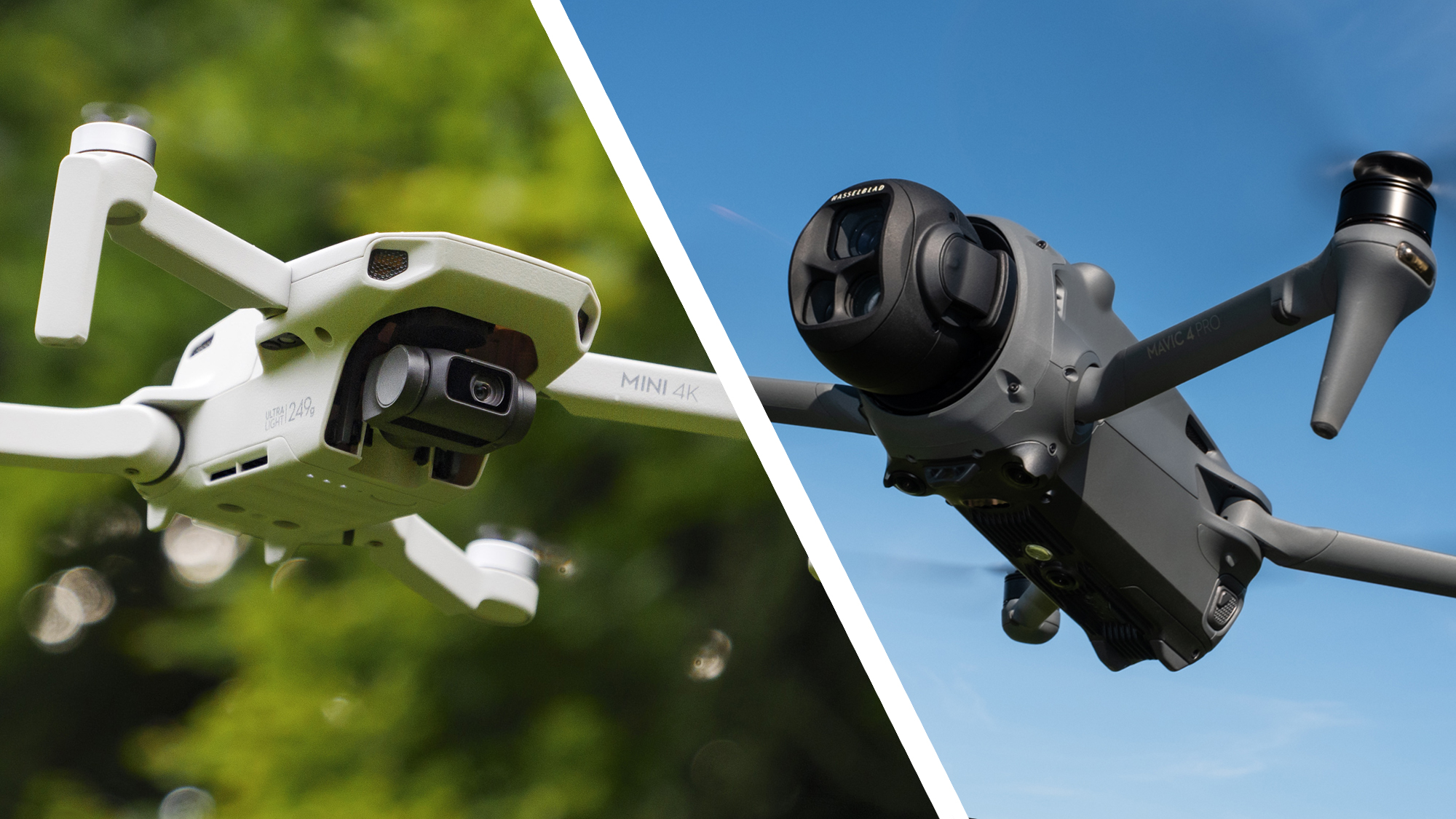
I've got a great team of certified drone pilots, and we've tested all of the best drones over the last decade, ever since the DJI Phantom series made flying cameras available to the masses. Once niche and expensive, drones have come on a long way and now anyone can get off the ground and shoot impressive aerial footage.
The best drones have become a key tool in the arsenal of content creators and filmmakers. Take the DJI Mini 5 Pro – when I tested the compact folding drone, I found it easy and safe to fly, with the help of obstacle avoidance sensors and effective subject tracking. It also has some powerful features, including a 1-inch sensor, rotating camera and catalog of cinematic video modes, plus it weighs less than 250g, which makes it restriction-free and beginner-friendly (in most regions, at least).
Other drones tick different boxes, though: the DJI Avata 2 is the best choice if you want to feel the adrenaline rush of FPV flight, while the DJI Mavic 4 Pro packs the most versatile triple camera unit for prosumers. I've recommended my eight favorite drones for different use cases, as well as an also consider section for the other superb models that our team has piloted that didn't make the cut. We also keep our ear to the ground for rumored new models, so it could be worth checking out the 'upcoming drones' list below before landing on your ideal drone.

I'm TechRadar's Cameras editor, with more than 15 years’ experience in the photo video industry. I've spent countless hours working with all kinds of camera gear, and that expertise extends to drones. DJI continues to dominate the drone market in 2025, producing excellent models for every niche – from entry-level to professional and FPV. That said, recent DJI models have not been made available in the US, so I've made sure to include options from a number of other drone manufacturers, particularly where they represent good value alternatives.
Why you can trust my judgement
Every single drone in this guide has been put through its paces by me or one of my expert team of reviewers. Most of our team is based in the UK, are certified with an A2 Certificate of Competency (or greater), and collectively we have amassed several hundreds of hours of practice, spanning the last 10 years.
☑️ 10+ years testing drones reviewed
☑️ Over 16,000 products reviewed in total
☑️ Nearly 200,000 hours testing tech
We test all types of consumer and prosumer drones, ranging from budget sub-250g models to triple camera beasts. The quality of a drone's camera is a big area of focus, but we also fly for the adrenaline-filled fun of it.
Each drone in this guide has earned its place for particular reasons, whether that's down to the flying experience, ease of use, reliability, the features on board, or the camera quality. The tester has written up an in-depth review which shares their experiences, and pinpoints why they recommended it.
How we test
Why you can trust TechRadar
Cameras are the main focus of the drones we review, but we also test their flying performance to see how easy they are to operate. We assess the effectiveness of safety features, including Return to Home, obstacle avoidance, flight stability (especially in breezy conditions), actual top speeds, subject tracking, real-world battery life, and if there's any latency – there's are all key considerations for high performing drones.
Taking flight in daylight hours and in low light allows us to properly check image quality, along with shooting like-for-like videos using the drone's array of color profiles, maximum resolution (be it Full HD, 4K, 5,3K or in some cases 8K) and at the various frame rates available. We also test automated flight modes to see whether they're genuinely useful or fun gimmicks. These videos are then assessed on a calibrated monitor, along with the drone's still photos (which we shoot in maximum resolution in both JPEG and raw, at various ISOs).
What makes a good image? The lens should give crisp detail ideally from edge to edge with minimal fall-off in the corners, while at the other extreme the camera sensor should handle noise well at the high ISOs needed for low light shooting. Such tests tells us the reasonable limits of the drone's camera. We then combine these results with our overall impression of the drone's design, features and value to produce our final verdict.
Meet the team
Collectively, TechRadar's team of reviewers has amassed hundreds of hours safely testing all types of consumer drones in UK and US skies, for all budgets and use cases, covering the latest and greatest models since consumer-level drones became a thing. Our team is A2 Certificate of Competency (A2 CofC) certified.

James Abbott is a professional photographer and freelance photography journalist for a wide range of magazines and websites, with a wealth of drone experience. He is A2 Certificate of Competency (A2 CofC) certified, and has been testing drones for over a decade, and uses them for professional work. He's one of our top go-to drone experts.

A versatile photographer since 2008 with clients including Adidas, Heineken and McLaren F1, Nico is passionate about sharing his knowledge also on his blog. Having flown camera drones since 2013 and A2 Certificate of Competency (A2 CofC) certified, he made the jump into the FPV drones rabbithole in 2022 and is loving every minute of it (including the odd crash).

Sam has been writing about tech and digital culture for over 20 years, starting off in video games journalism before branching out into the wonderful worlds of consumer electronics and photography. Over the years he has written for Wired, Stuff, GQ, T3, Trusted Reviews and PC Zone, and now lives on the Kent coast in the UK – the ideal place for a camera reviewer and drone pilot to ply their trade.
The best drones 2025
Below you'll find full write-ups for each of the best drones in our list. We've tested each one extensively, so you can be sure that our recommendations can be trusted.
Best drone overall
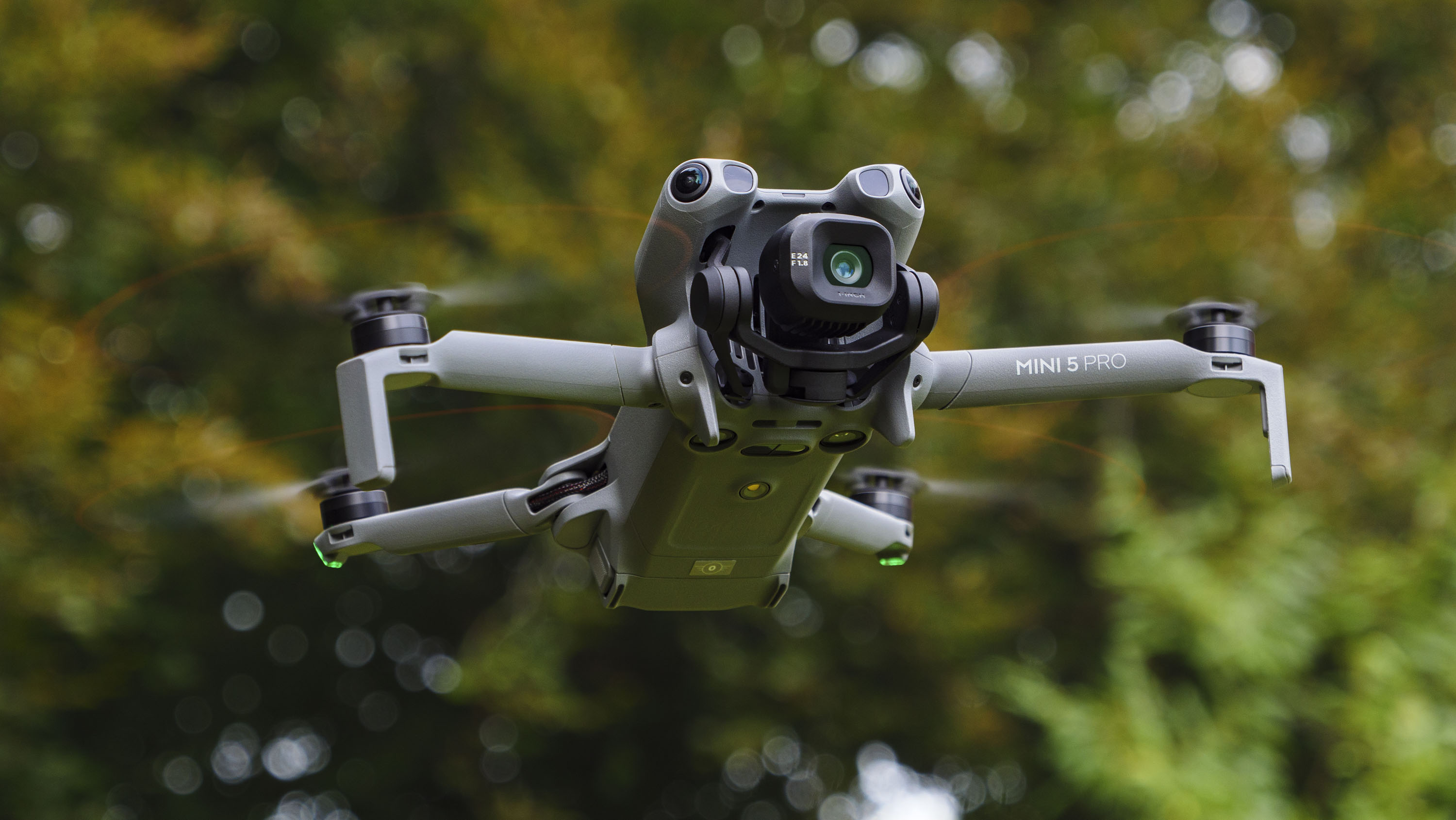
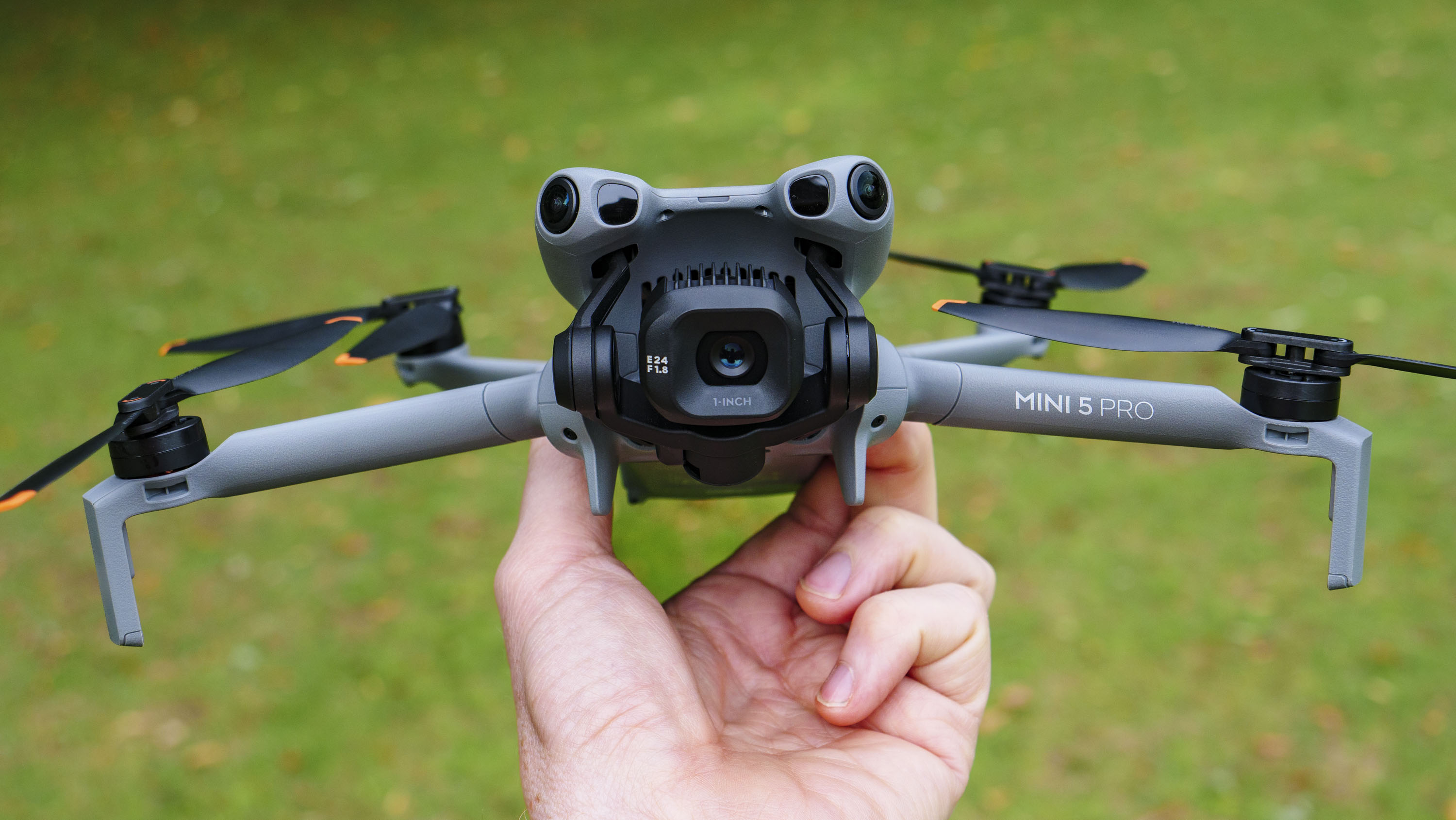
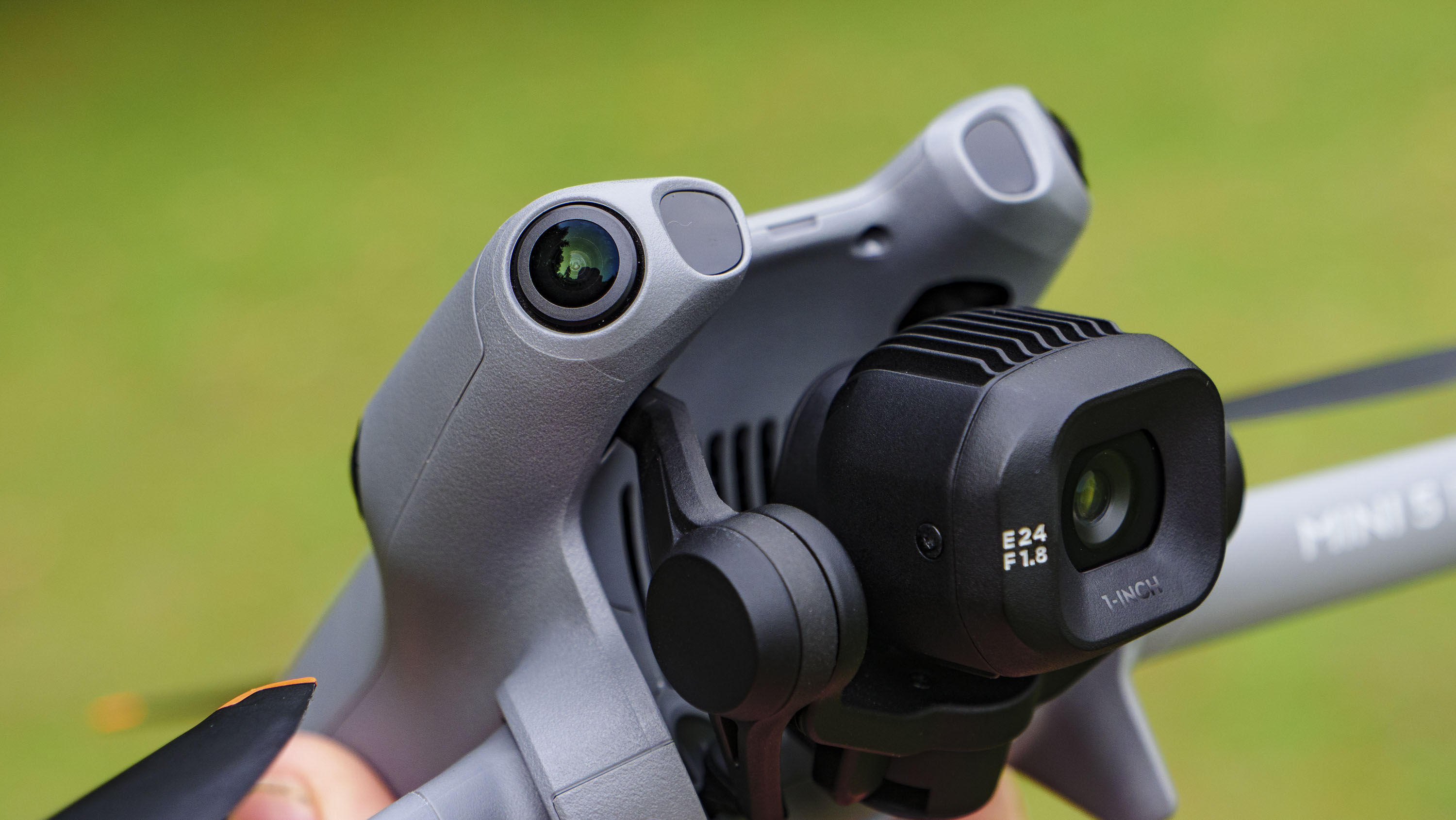
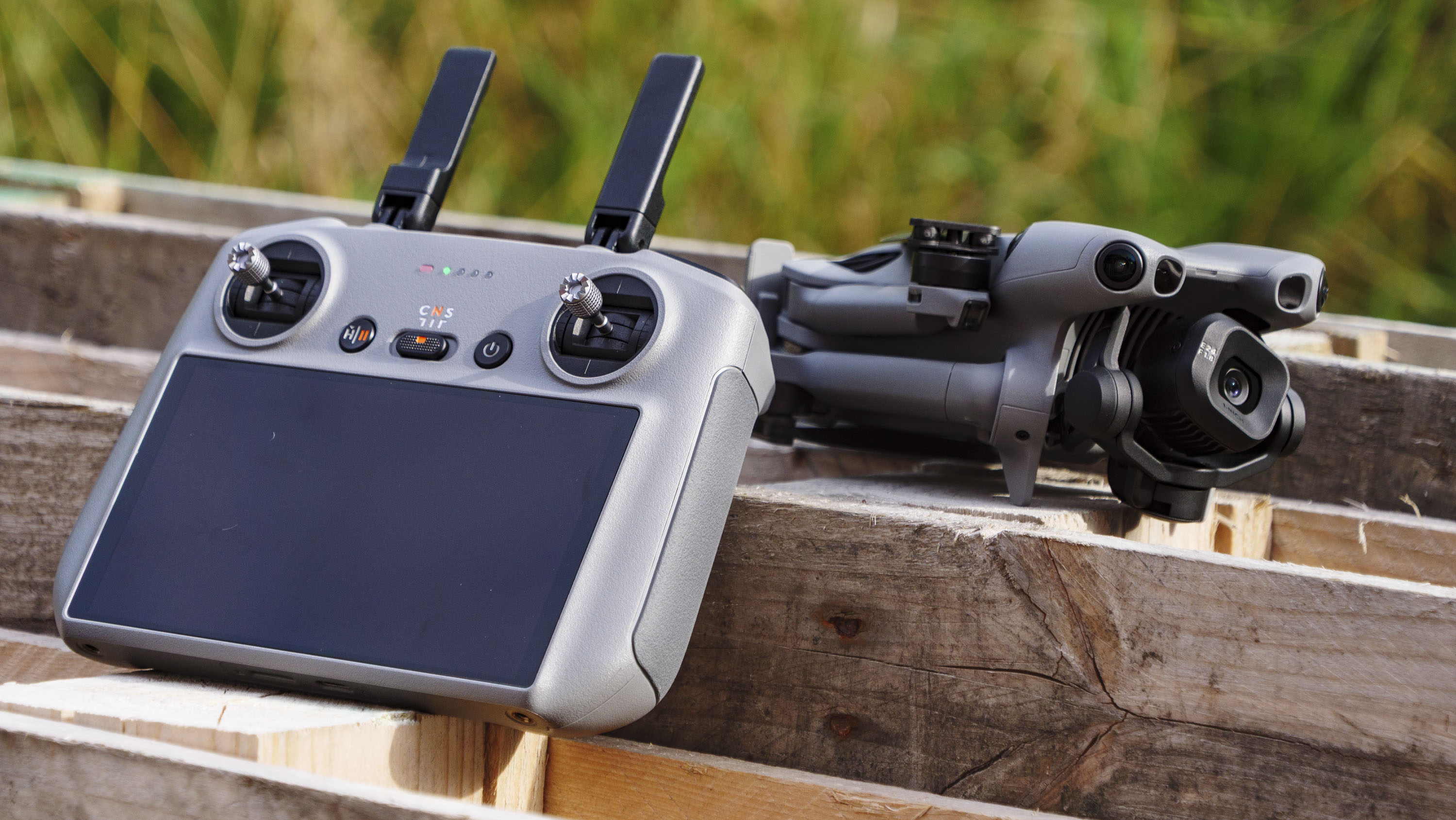
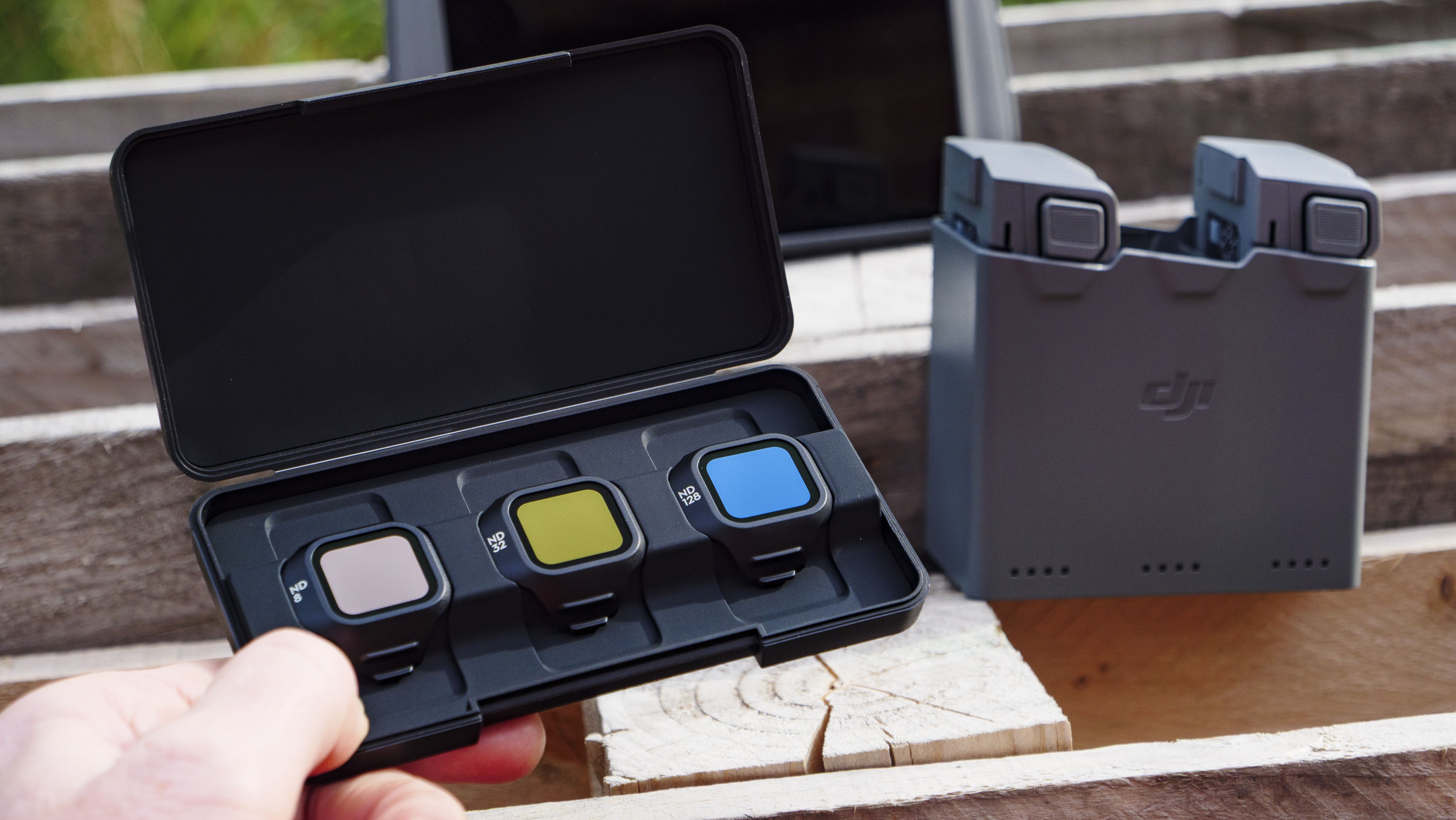
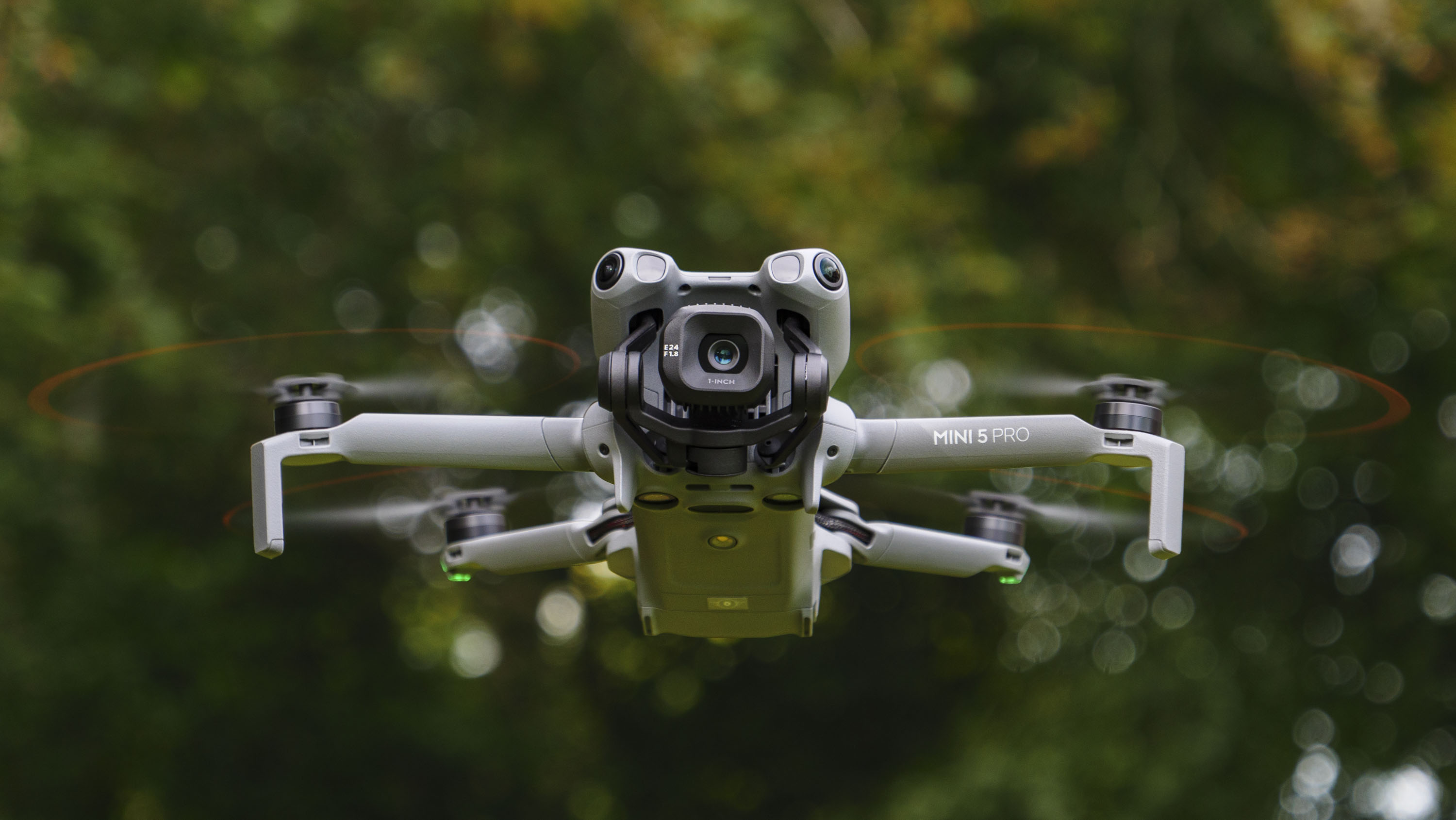
Specifications
Reasons to buy
Reasons to avoid
DJI Mini 5 Pro sample images
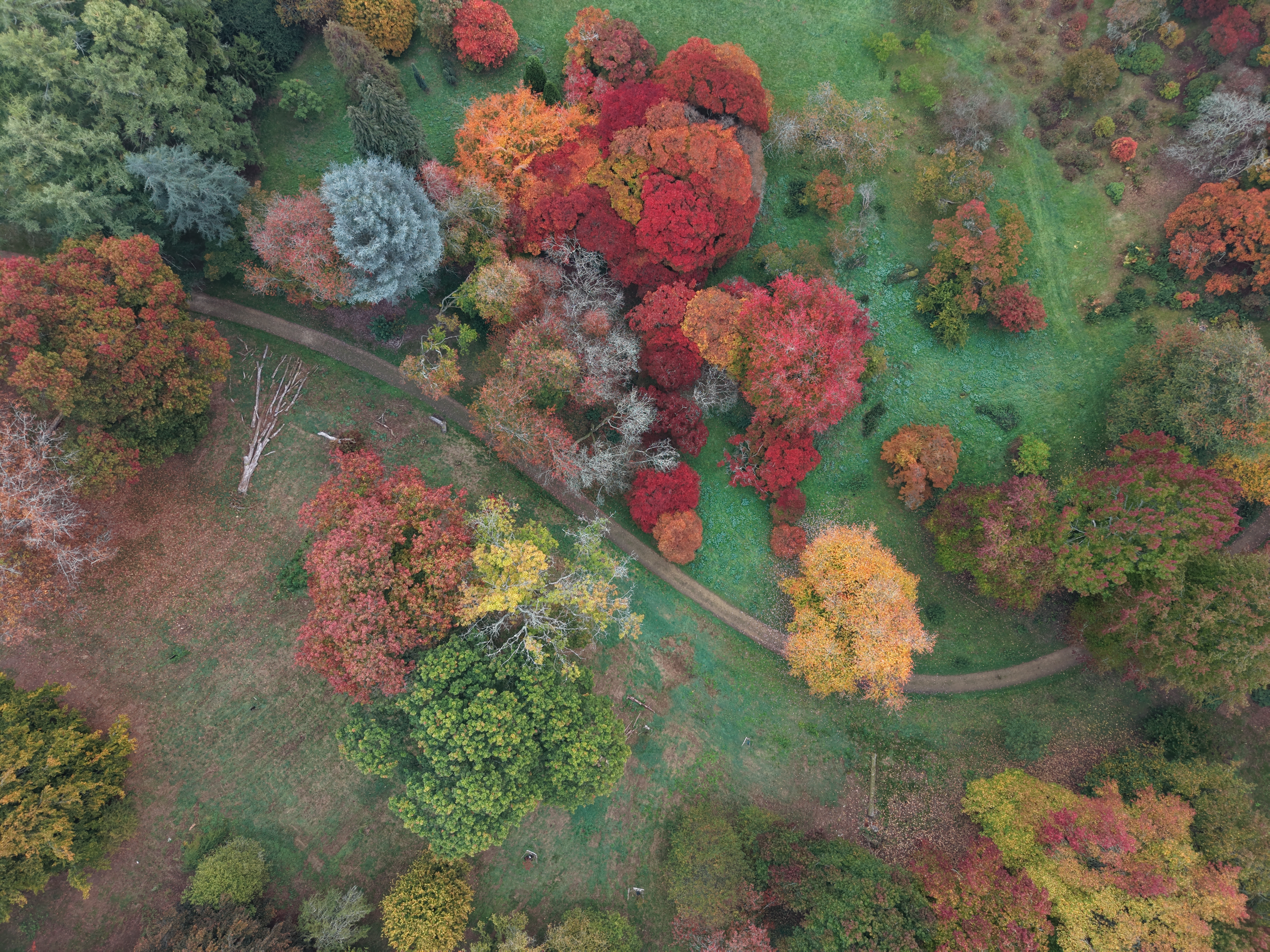

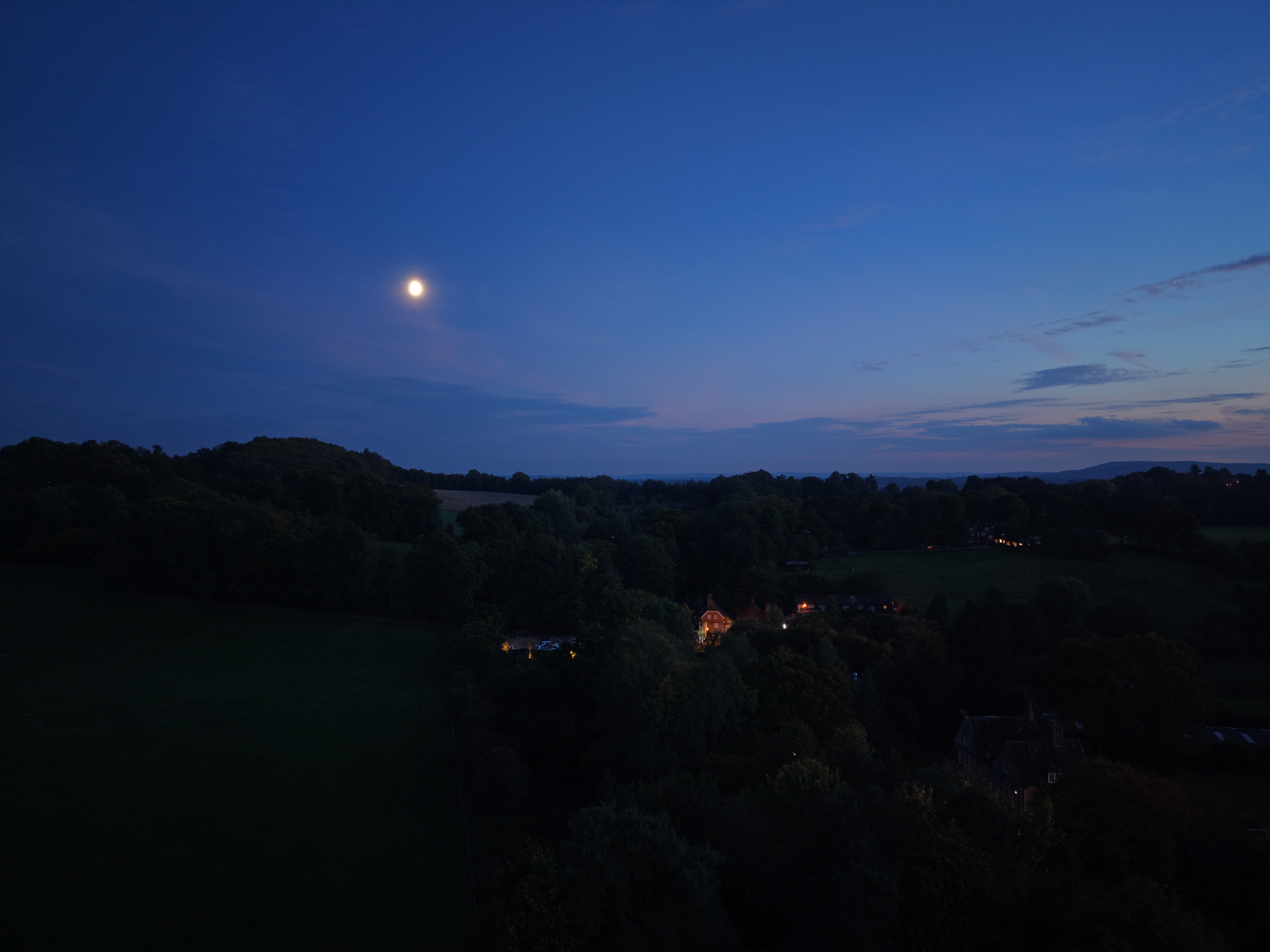
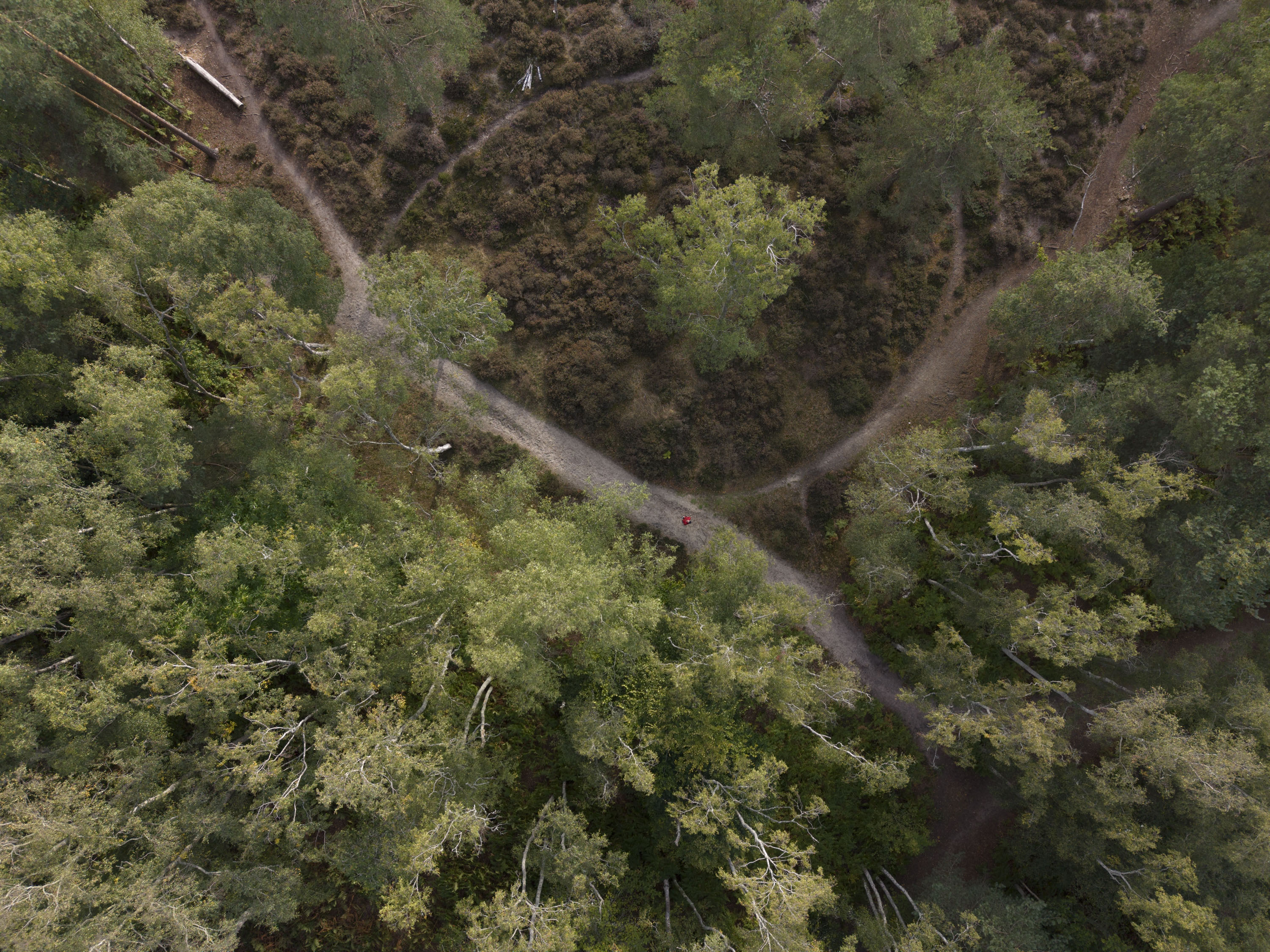
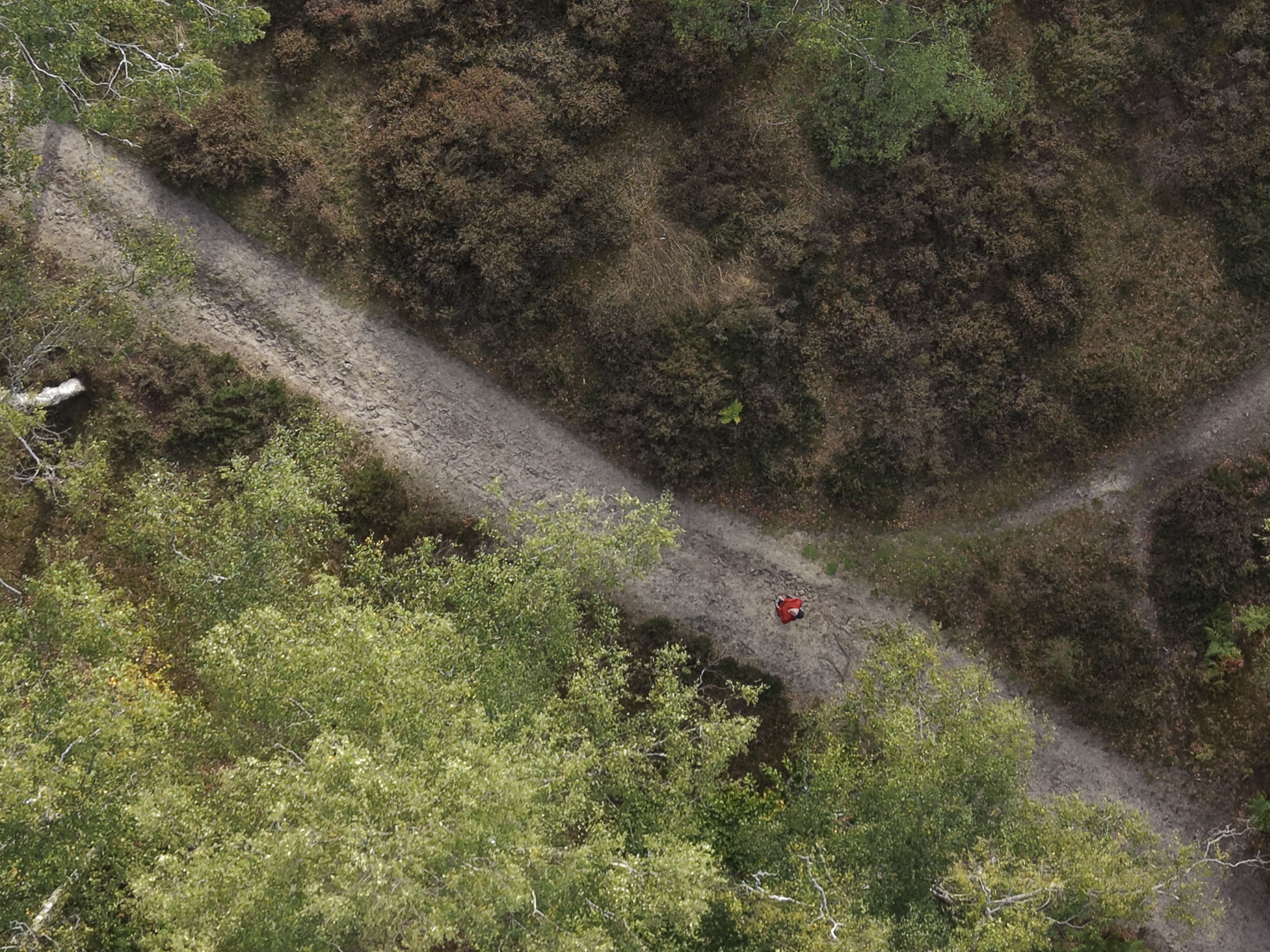
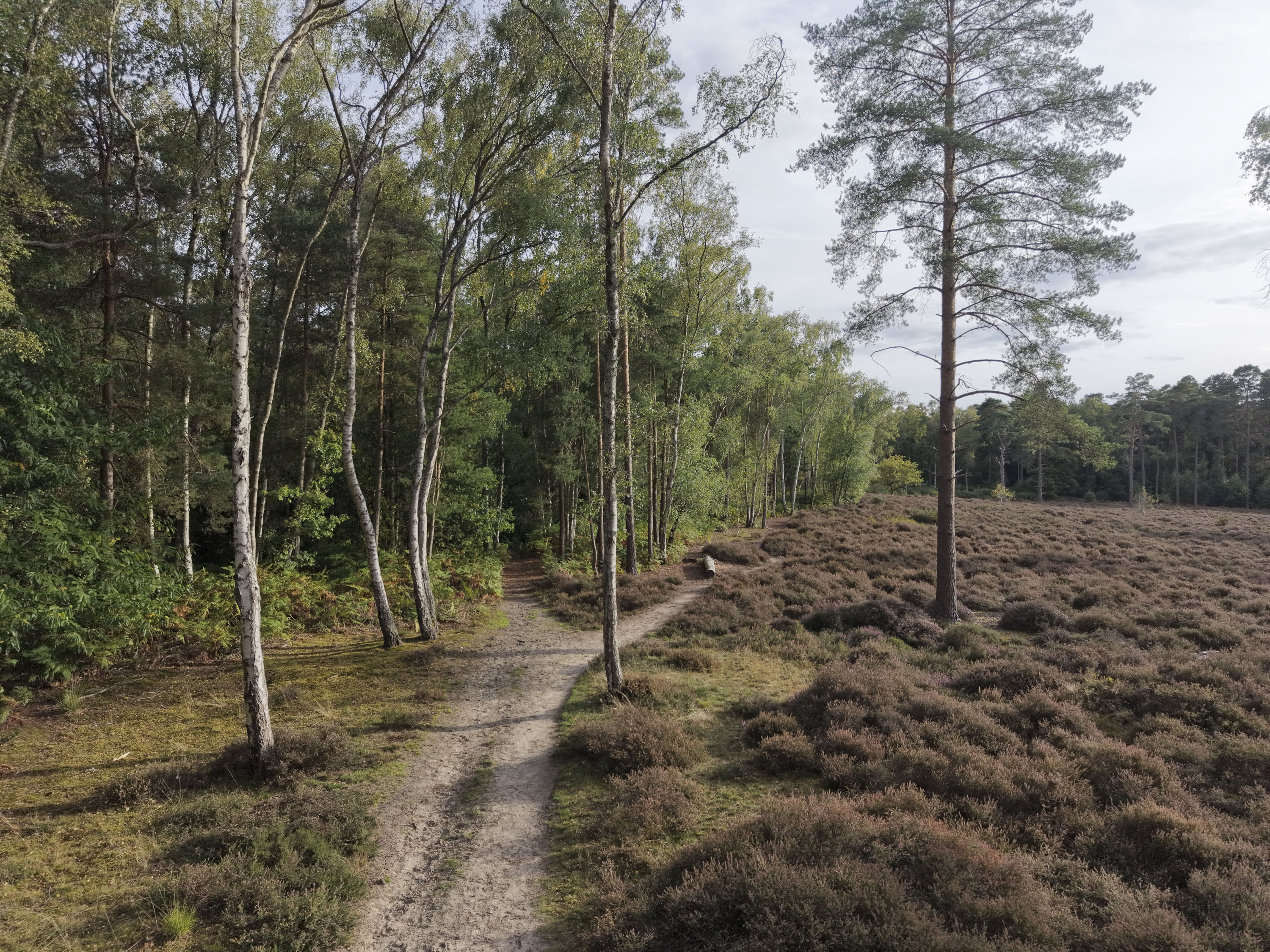
✅ You want the very best lightweight drone available: With excellent image quality and obstacle avoidance in all directions, this is the most feature-packed sub-250g drone.
✅ You need a versatile camera: A 1-inch 4:3 sensor, rotating camera, support for 4K 120fps / HD 240fps video, and the D-Log M color profile – there's no better mini camera drone.
❌ You’re already happy with your Mini 4 Pro: While the Mini 5 Pro has the larger 1-inch sensor and a few additional features, many will find that such upgrades don’t justify switching from the already capable Mini 4 Pro.
❌ You need multiple cameras: The pricier Air 3S and Mavic 4 Pro are in the next weight category up and come with twin and triple cameras respectively – the Mini 5 Pro is a single camera drone.
DJI continues to raise the bar for mini drones with the Mini 5 Pro – which is a meaty upgrade of the Mini 4 Pro and the best sub-250g available*, for an unbeatable price. It builds on the Mini 4 Pro's class-leading qualities; a larger 1-inch sensor for better low light image quality, omnidirectional object sensing now with LiDAR front sensing, improved Return to Home and ActiveTrack 360 skills and 10% better flight speeds, wind resistance. Battery life is a fraction better, plus there's now 42GB of built-in storage (up from 2GB before).
Put those upgrades together, with a versatile camera that can switch between vertical and horizontal at the push of a button and has a 225 degree roll rotation with dynamic MasterShots move, and the Mini 5 Pro will get you unbeatable 4K video up to 120fps, for a drone this small and light. In fact, the Mini 5 Pro is so good, that it makes me question how much the significantly weightier (and pricier) Air 3S is worth it.
You get a neat folding design, auto start up when the propellors are unfolded, and the super easy Return to Home feature, together with a host of flight moves and D-Log M color profile for advanced color grading. Put simply, I rate the Mini 5 Pro as the best drone for most people.
*DJI registered the drone's takeoff weight at a regulation-friendly 249.9g, albeit with a ±4g stipulation. It's officially a sub-250g drone in the EU and UK (classed C0 / UK1), but the FAA in the US is taking a hard line if aMini 5 Pro in question does in fact weigh, say, 253g. The drone isn't available in the US at launch, either.
- Read our in-depth DJI Mini 5 Pro review
Top alternatives...
- DJI Mini 4 Pro – so long as it remains available, the Mini 4 Pro is definitely sub-250g (unlike the Mini 5 Pro), and it costs the same. You will miss out on several upgrades, though.
- DJI Air 3S – if you have the certification to fly in the next weight category, the chunkier Air 3S will give you better flight times and stability, plus a second telephoto camera.
Best budget drone without obstacle avoidance
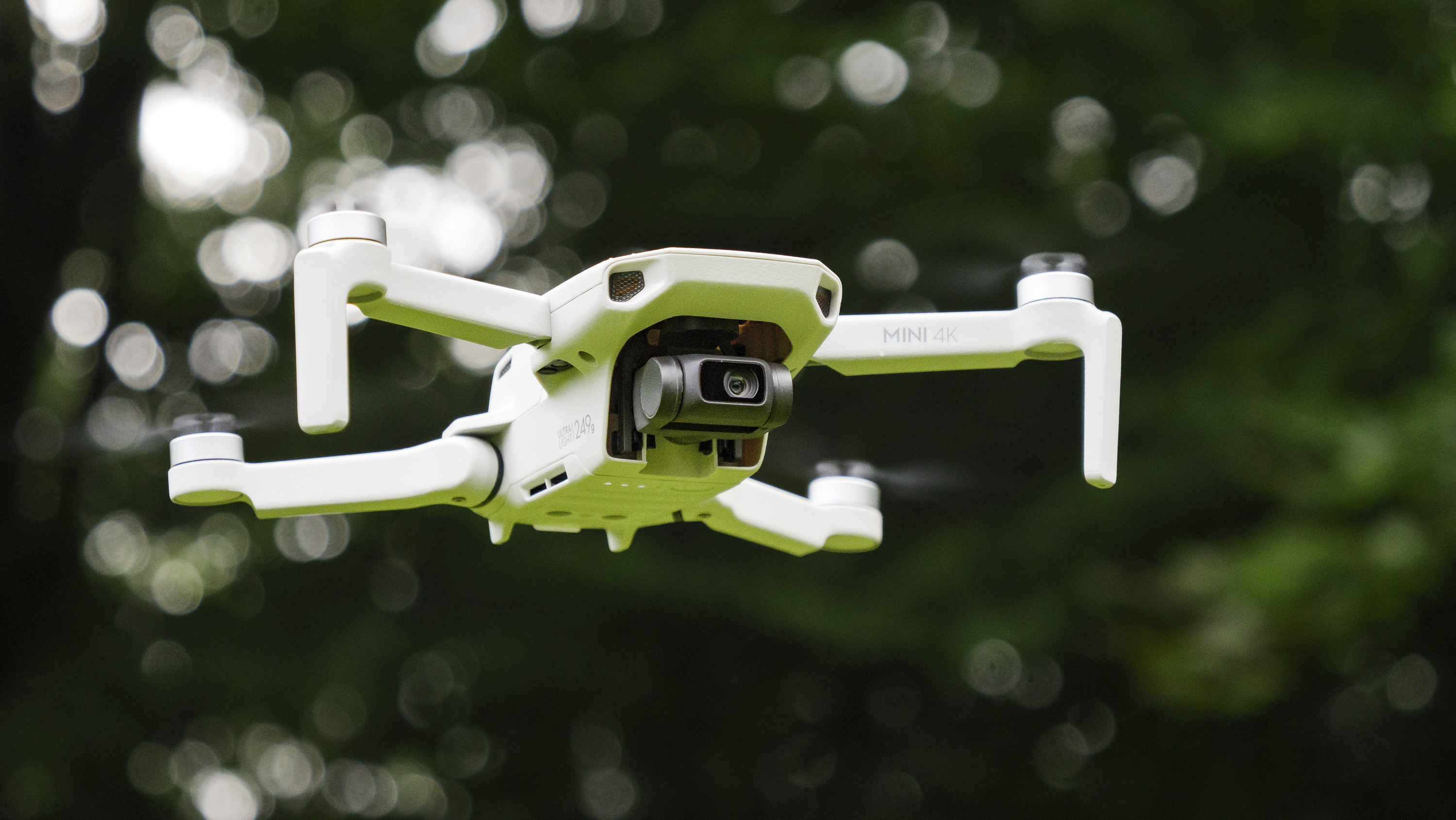
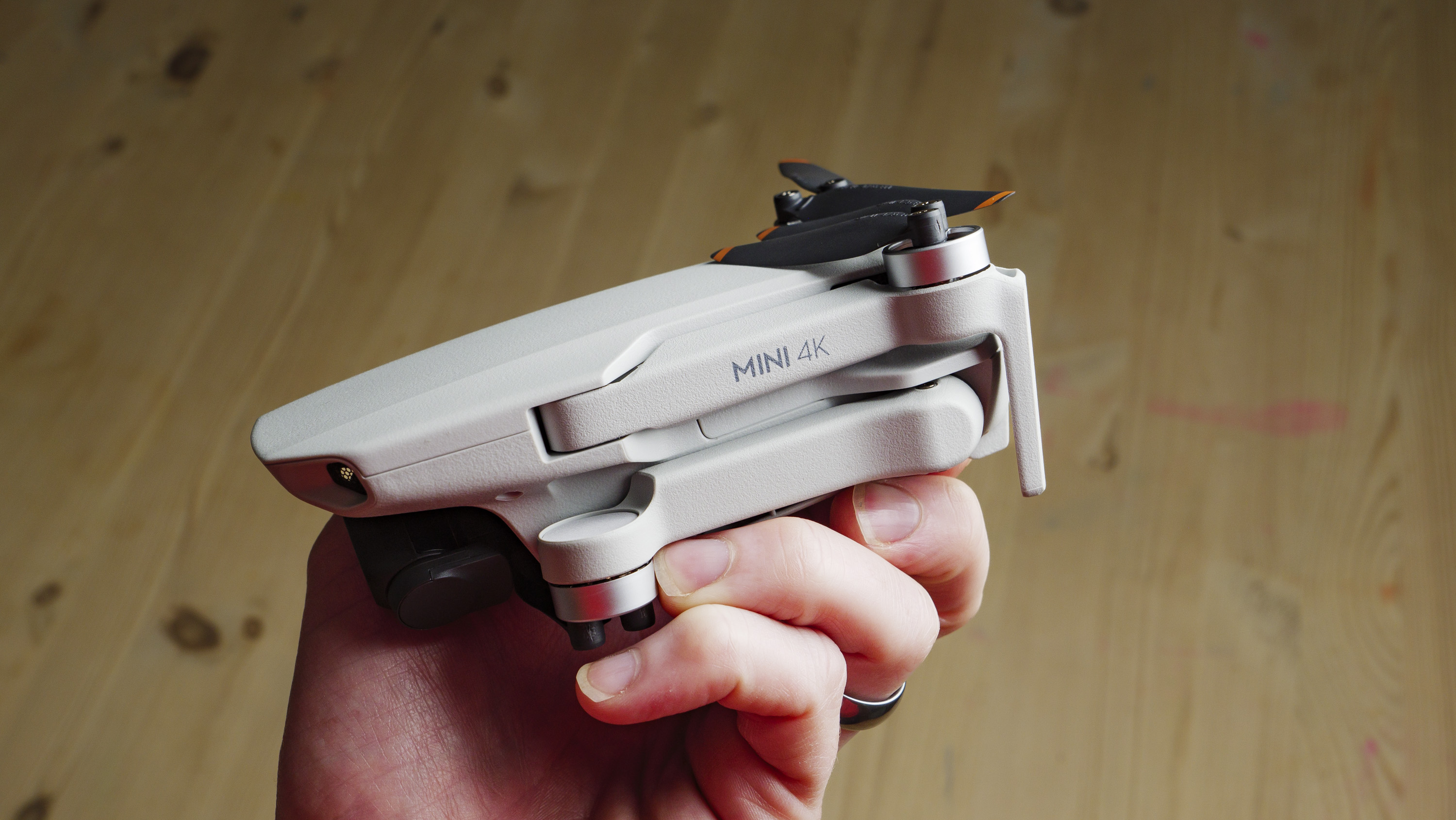
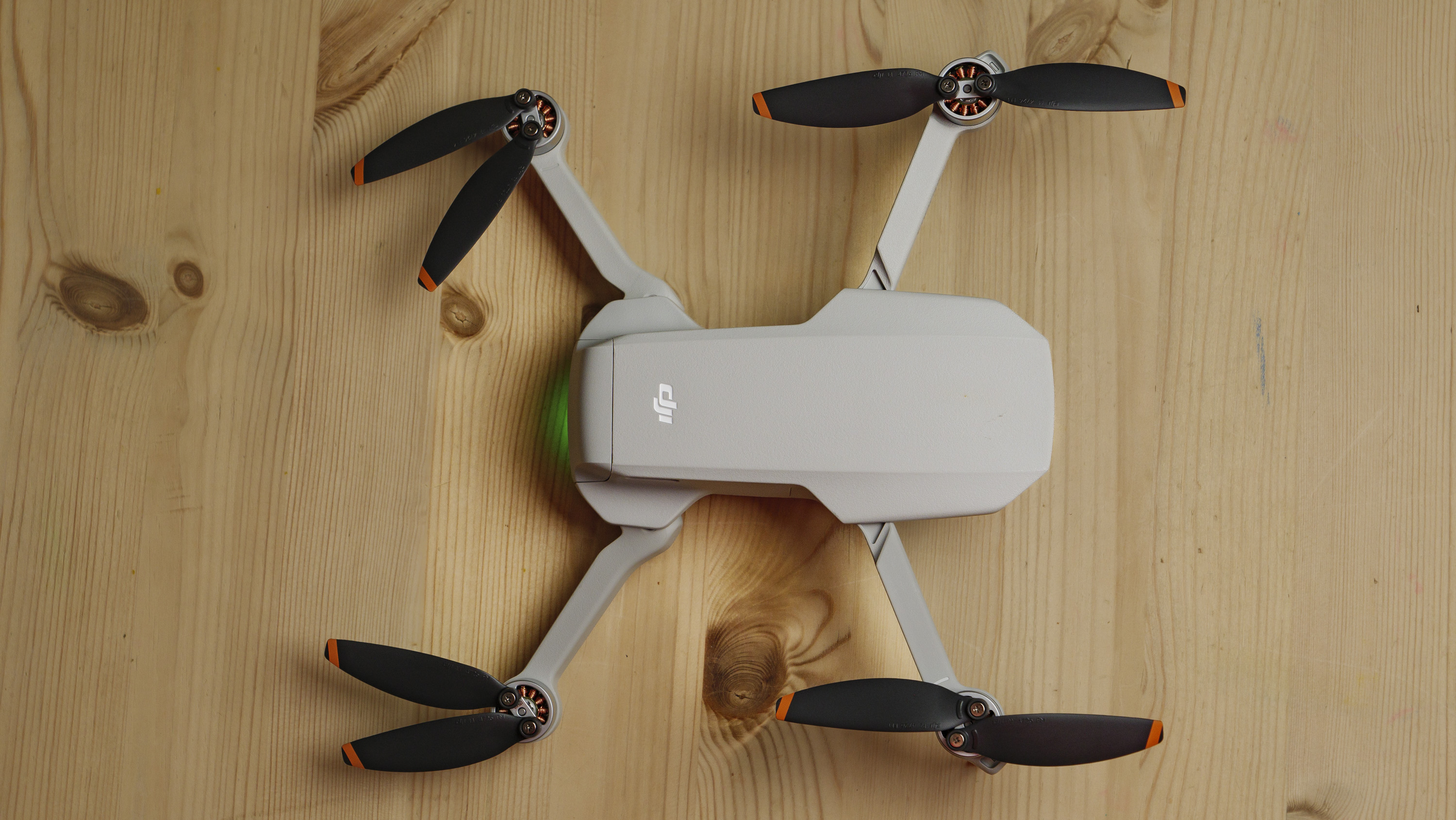
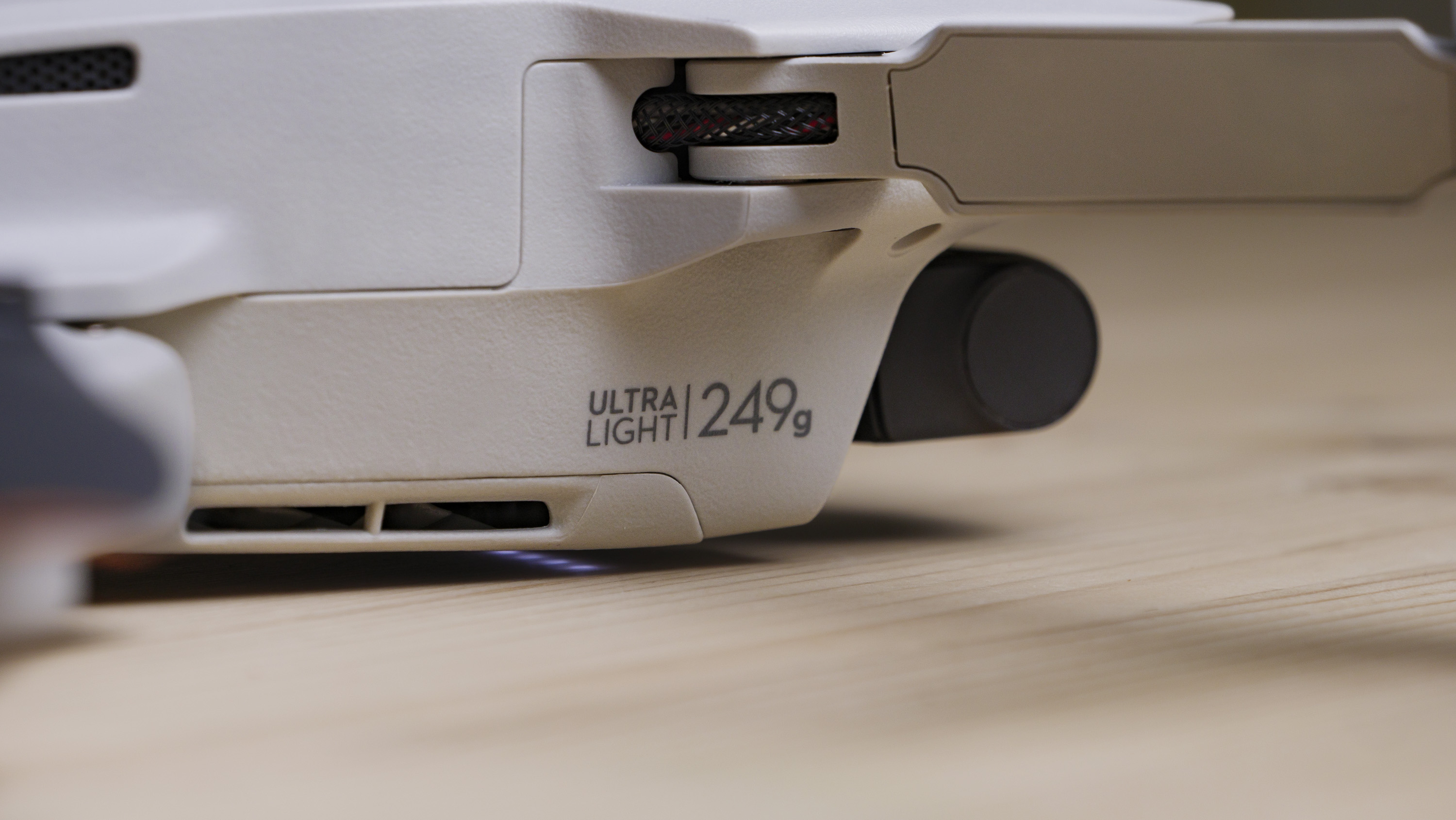
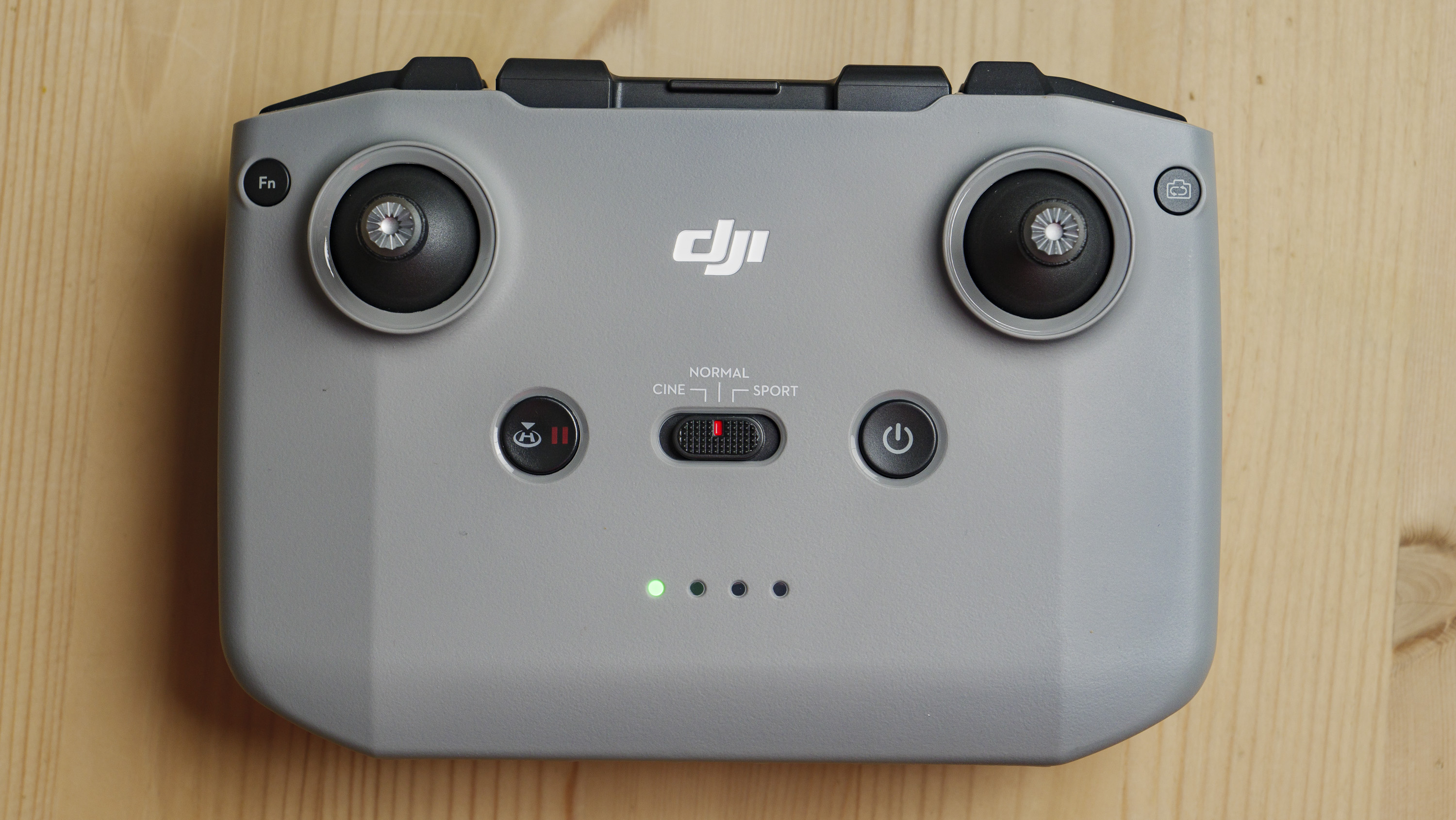
Specifications
Reasons to buy
Reasons to avoid
DJI Mini 4K sample images
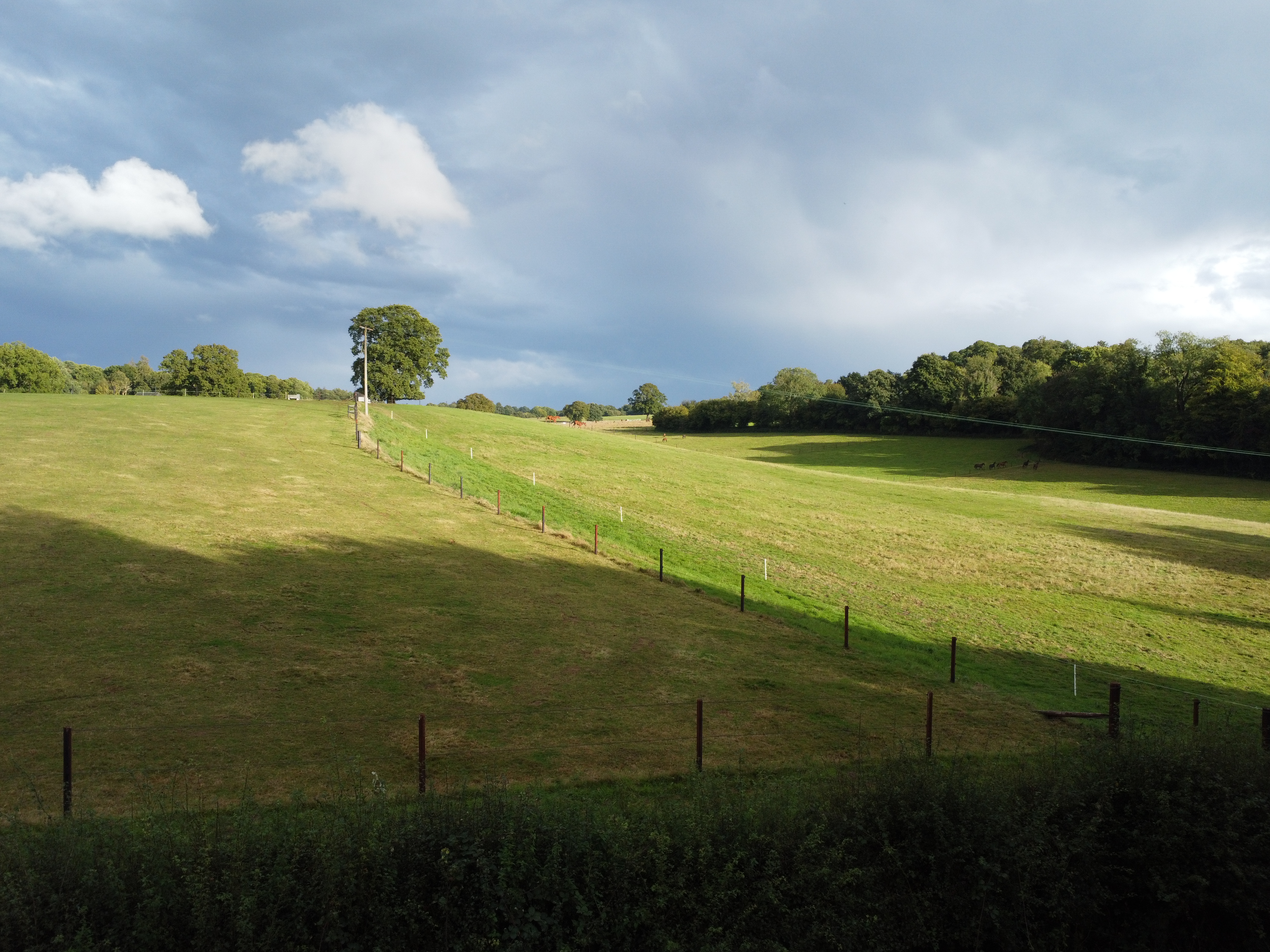
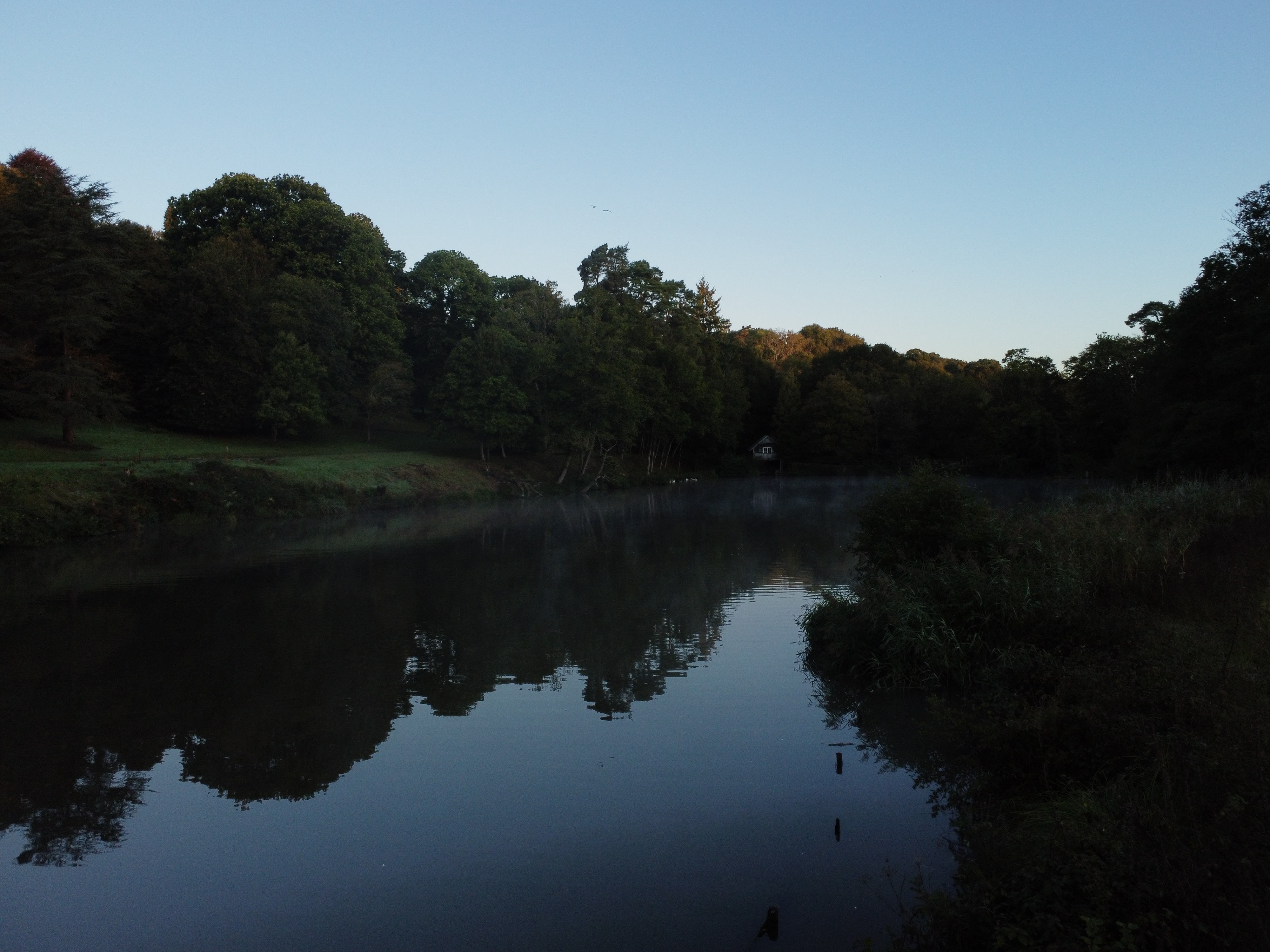
✅ You’re a first time buyer: The DJI Mini 4K is a great starting point if you’re new to drones, with decent 4K video and flight features.
✅ You’re want the best cheap drone: For less than $300 / £300, you get a well equipped 4K drone with 3-axis gimbal and decent flight performance.
❌ You're typically gung ho: The Mini 4K doesn’t feature collision avoidance like the Mini 4 Pro, so the daring will likely get into scrapes quickly enough.
❌ You want decent subject tracking: Despite having Quickshots flight moves, the Mini 4K doesn't have the same sophisticated tracking features as the Mini 4 Pro.
First time buyers can't go wrong with the Mini 4K – it is the best budget drone you can buy at under $300 / £300. It is a carbon copy of the DJI Mini 2 SE, only it comes with higher resolution 4K video to the Mini 2 SE's 2.7K video. The Mini 4K also shoots 2.7K up to 60fps and video bitrates are higher, so its videos are less compressed, plus you get a 2x digital zoom. Otherwise, the drones are identical; a regulator-friendly 246g take-off weight, 3-axis gimbal and stable flight performance considering the tiny size.
If money is no object, the Mini 4 Pro is the best beginner drone you can buy. It has omnidirectional object avoidance and advanced Follow Me subject tracking, plus a larger sensor and slightly better image quality overall. If you're typically gung ho, you might get into a few scrapes flying the Mini 4K given the lack of obstacle avoidance or need to be extra cautious to avoid objects, especially when flying over bodies of water. However, the Mini 4K is admirably robust and a third of the price of the Mini 4 Pro while being equally capable in many ways. Its battery life is excellent, despite not fulfilling the 31 minute measured times it can go longer than rivals, plus DJI's Quickshots flight moves get you dynamic video sequences around your chosen subject.
All in all, we found the Mini 4K to be an excellent beginner drone, perhaps the best, and a decent second drone for advanced pilots.
- Read our in-depth DJI Mini 4K review
Top alternatives...
- Potensic Atom 2 – the Atom 2 is a similar price, yet it comes with more flight features than the Mini 4K, making it one of the best sub-250g drones available.
- DJI Flip – an innovative folding design with propellor guards and advanced subject tracking skills make the Flip a beginner selfie drone with a difference, but it's slightly pricier than the Mini 4K.
Best drone camera
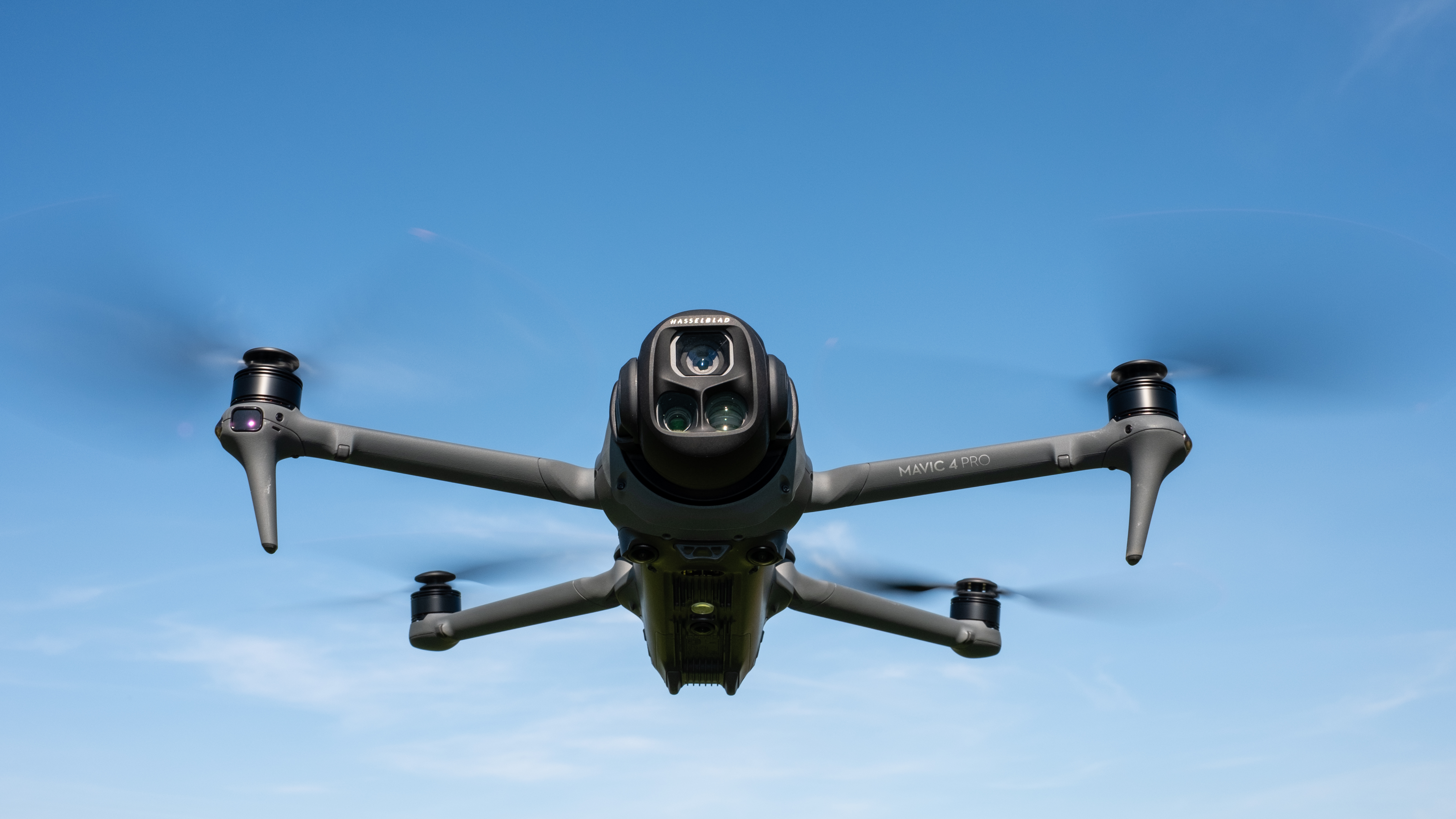
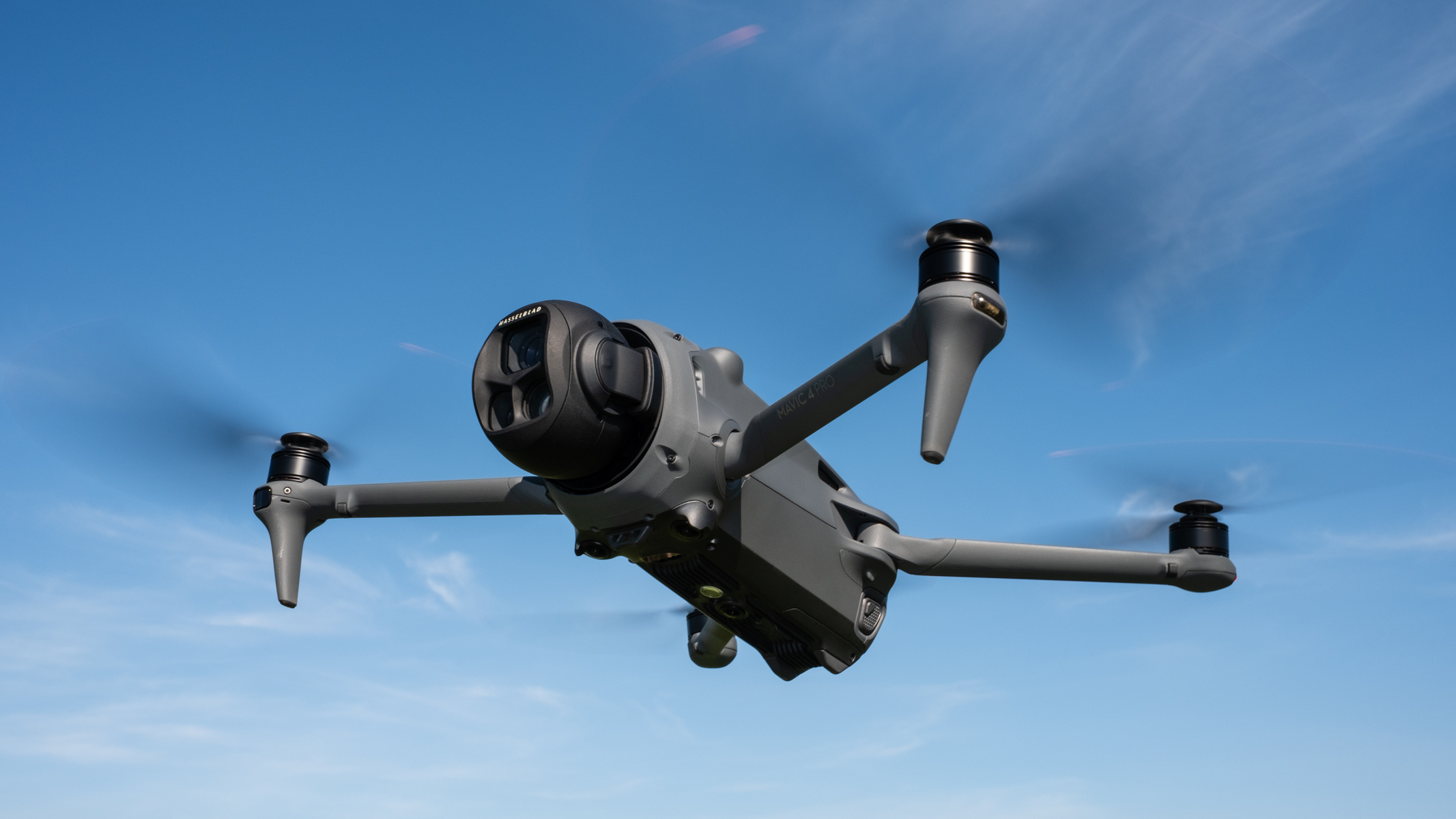
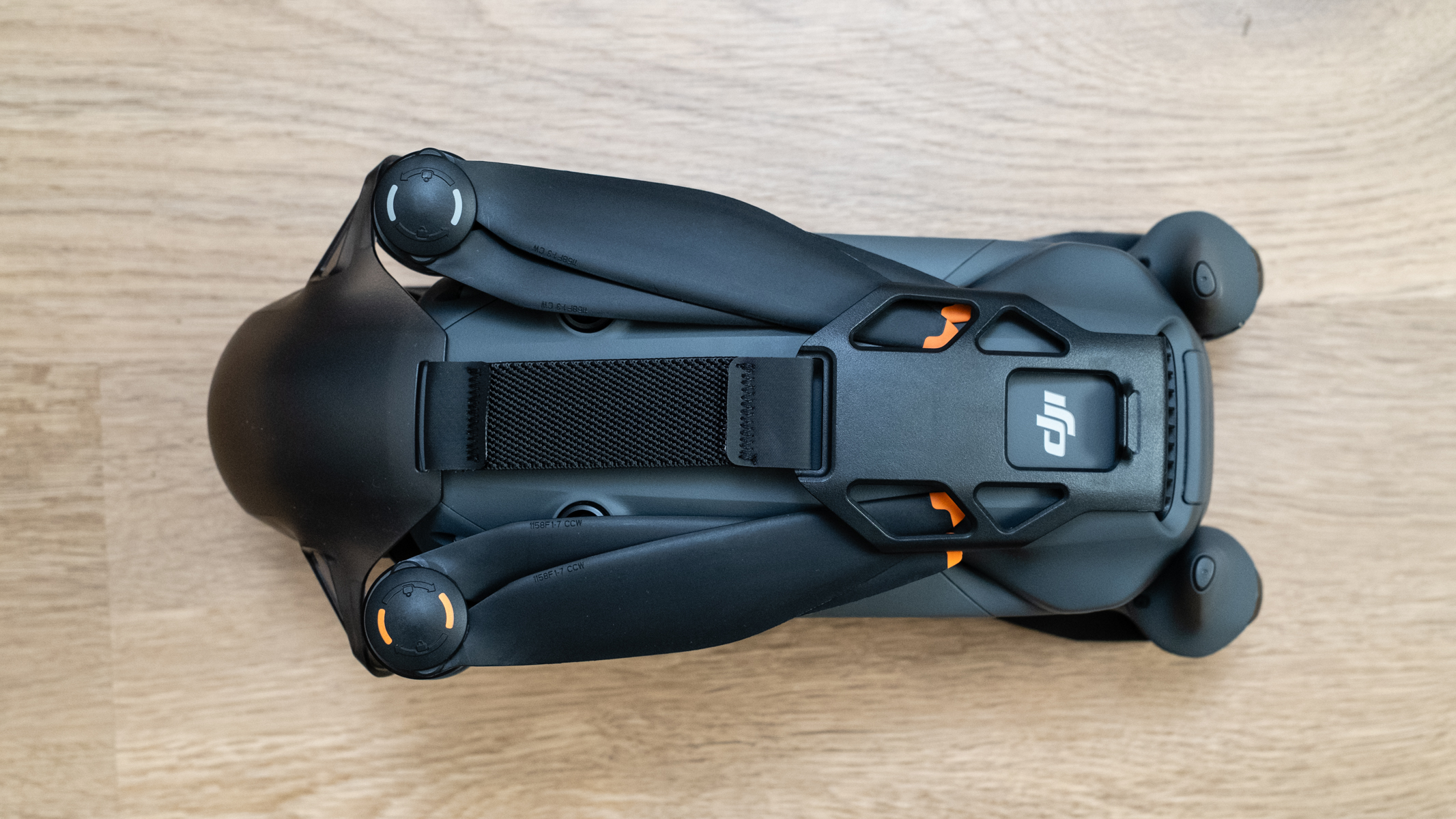
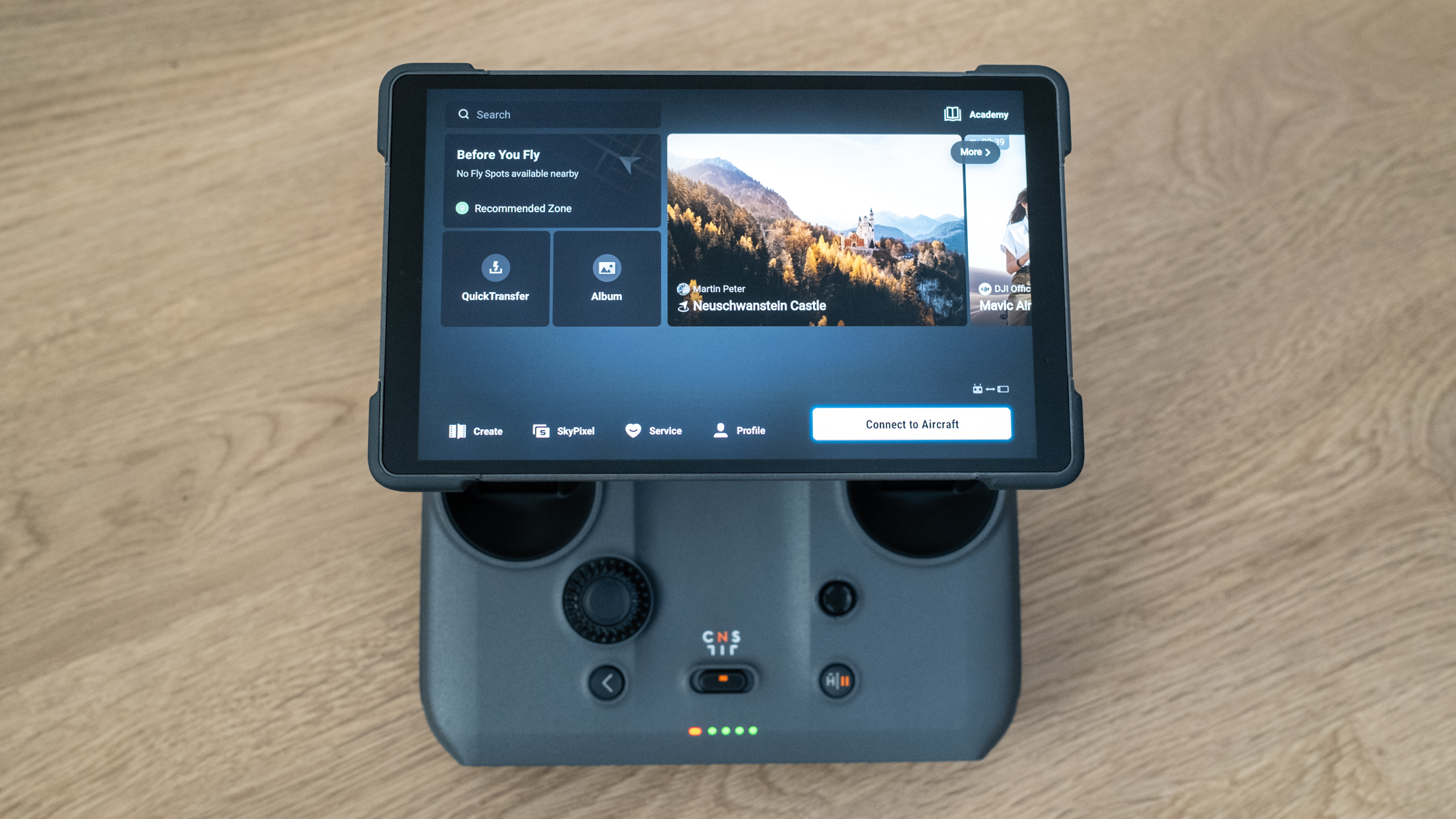
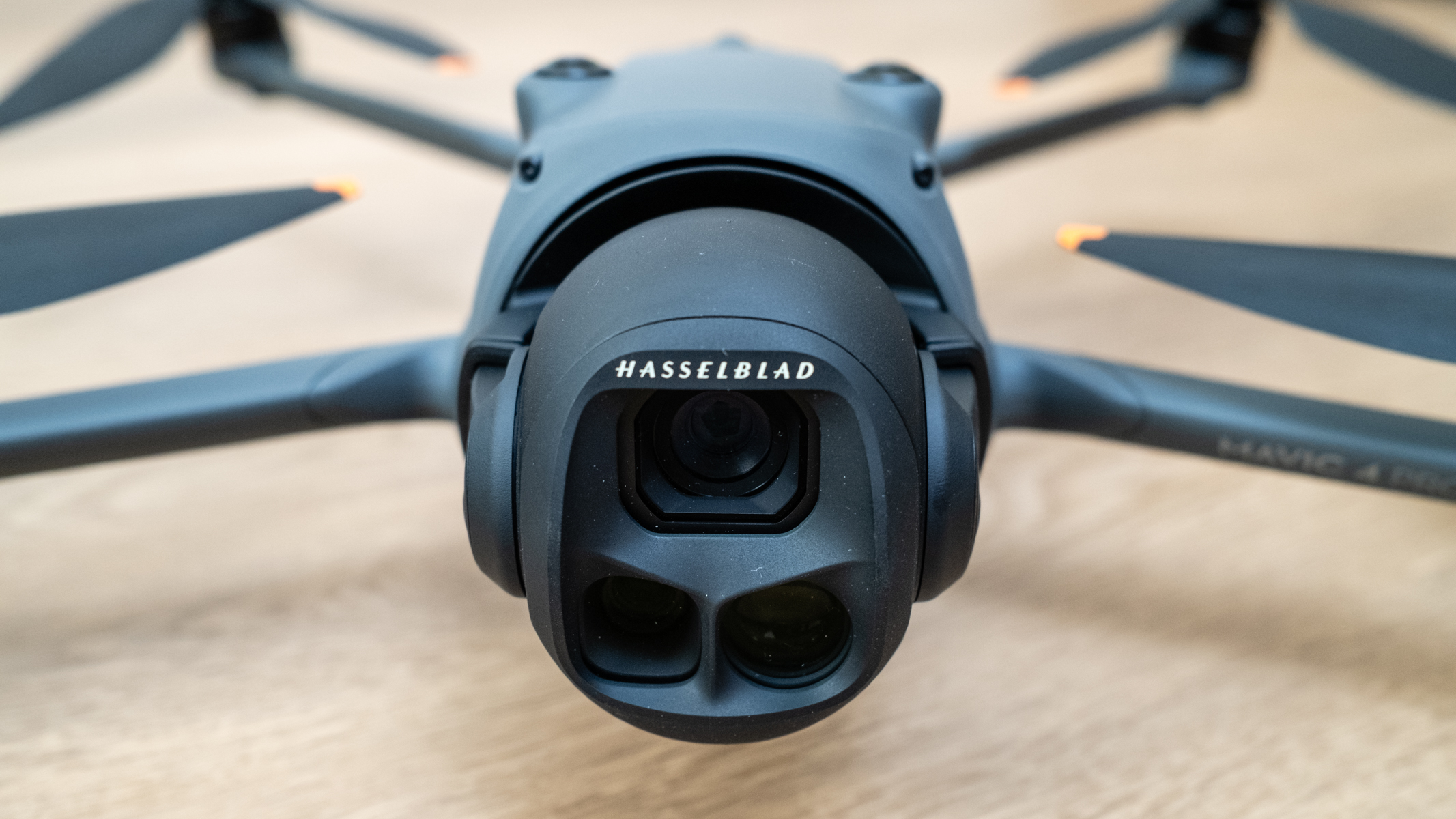
Specifications
Reasons to buy
Reasons to avoid
DJI Mavic 4 Pro sample images
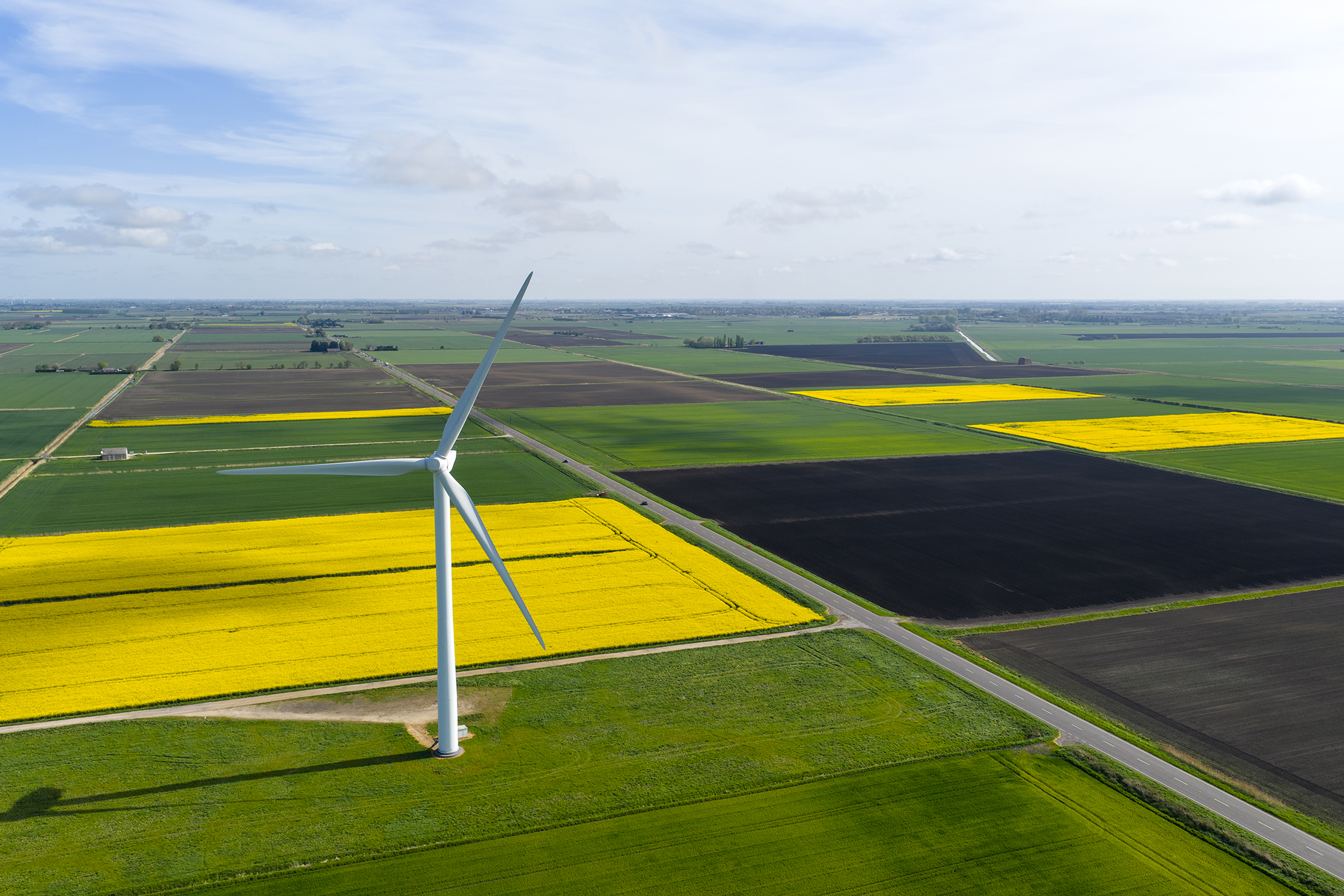
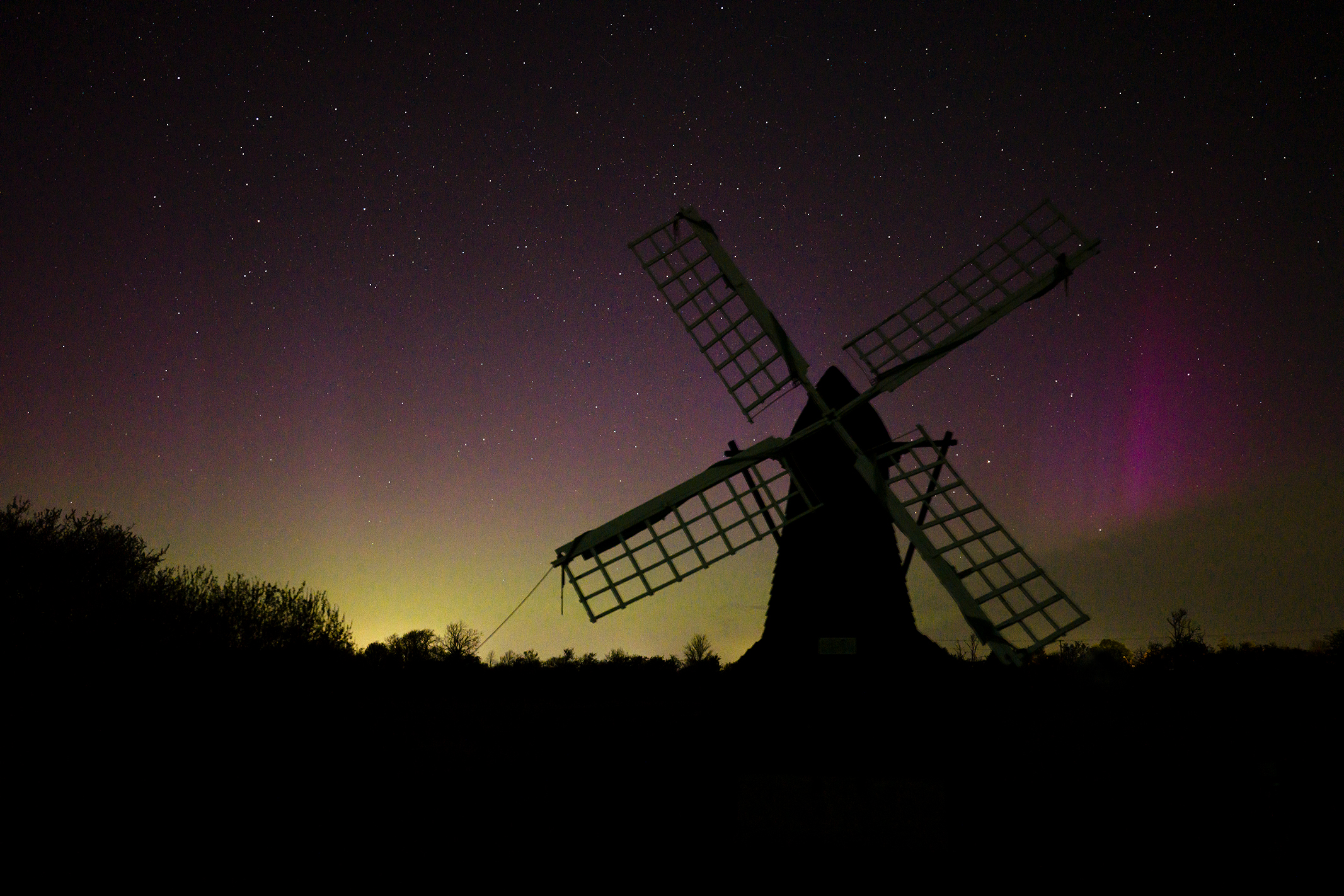
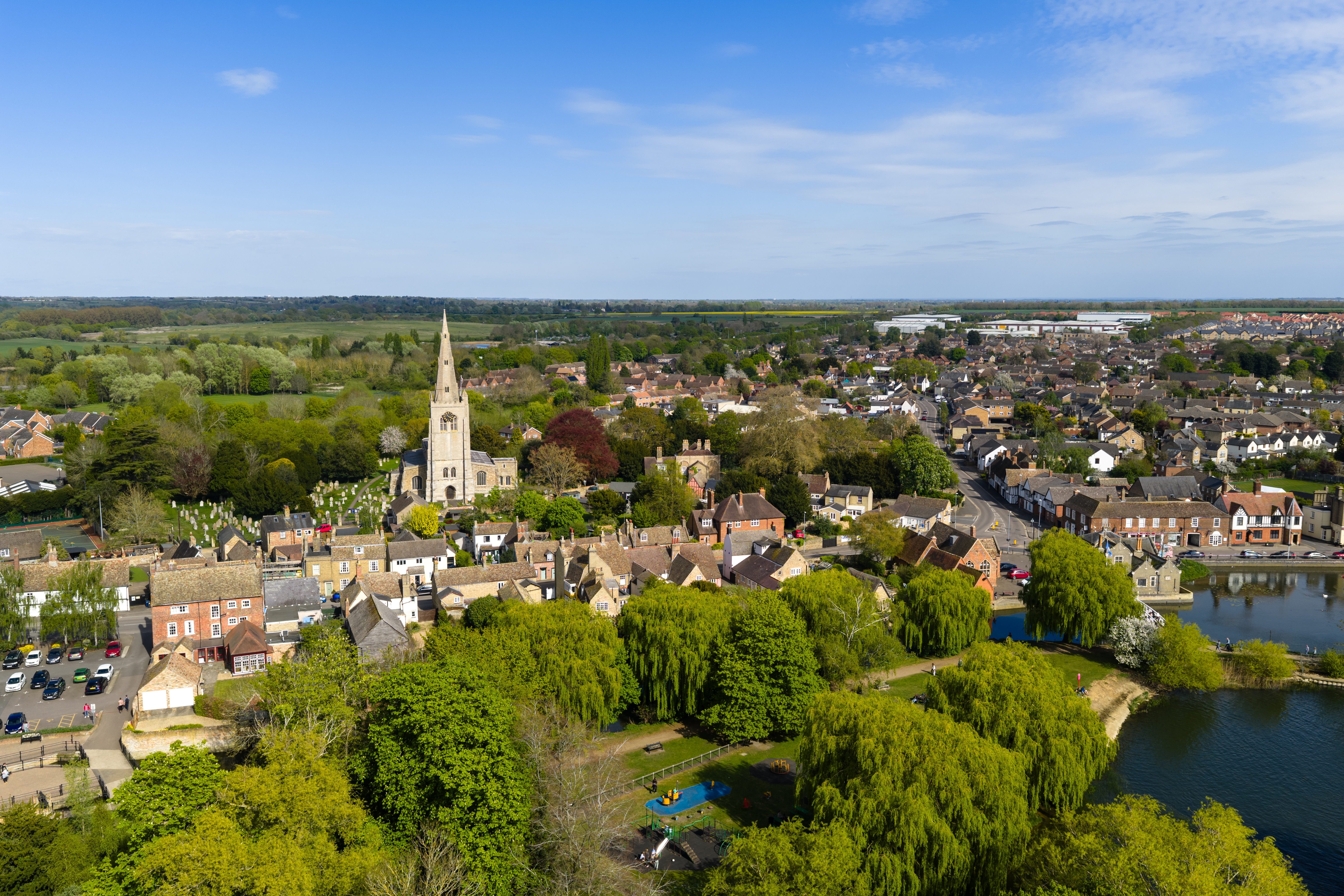
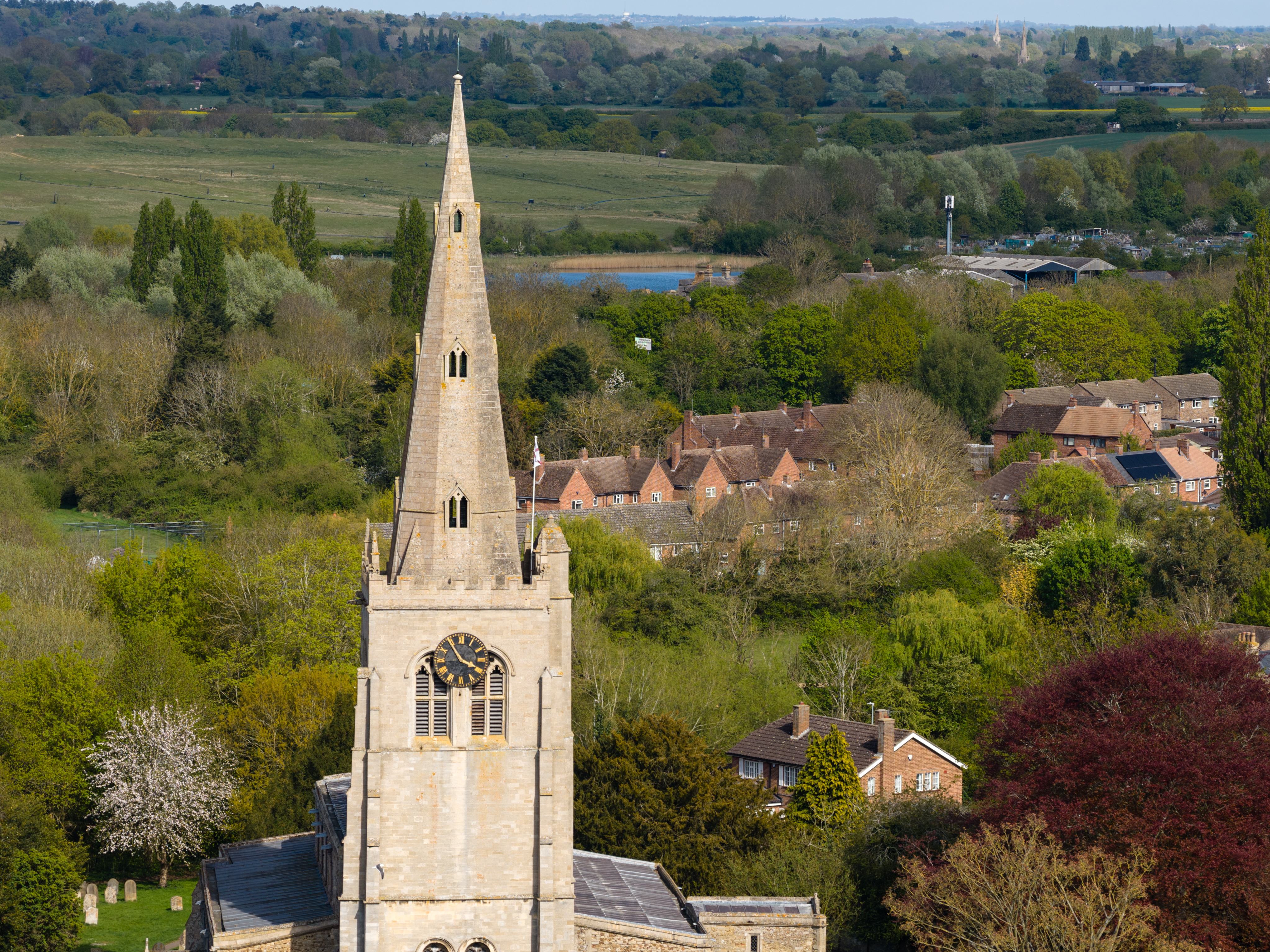
✅ You need camera versatility: A triple-camera drone with an unmatched range of motion thanks to its 'Infinity Gimbal' – the best balance quality and versatility we've tested yet.
✅ You want DJI's best safety features: DJI's most advanced collision avoidance plus advanced return to home ensure accident-free flying.
❌ A single camera will do: If the Mavic 4 Pro's main camera will do, you could save yourself a packet by opting for the Mavic 3 Classic instead – they are practically the same.
❌ You're more into flying than filmmaking: The versatile triple camera unit is the Mavic 4 Pro's trump card. Yes, it's a capable flying machine too with advanced safety features, but its target audience is aerial image makers.
The Mavic 4 Pro upgrades the Mavic 3 Pro with a refined triple camera unit and a redesigned gimbal which provides the most versatile range of motion we've experienced yet; 160 degrees of tilt, 90 degree rotation for vertical shooting, plus a 360 degree range of movement on the roll axis – what DJI calls an 'Infinity Gimbal'. The fact that the Mavic 3 Pro won best camera product of the year in the TechRadar Choice Awards 2023, and the Mavic 4 Pro is even better, says it all.
The Mavic Pro line is the only consumer drone to feature three cameras, ideal for aerial photography and filmmakers who need the most versatile drone on the market. The Mavic 4 Pro's main camera is pretty much the same one used by the Mavic 3 Classic, but with an improved 25MP Micro Four Thirds sensor for the best image quality of the three cameras, together with an adjustable aperture, pro-tier video formats and frame rates.
If you need the extra reach from the main 28mm focal length of this camera, both 3x and 7x telephoto cameras produce excellent images too. Put simply, the Mavic 4 Pro is the best camera drone we've tested to date. It is also incredibly easy to fly even in windy conditions and accessible to all users, thanks to its excellent safety features and intuitive controls, which now includes LiDAR obhect sensing, as debuted in the Air 3S, plus improved 51 minutes battery life. The result is a heavier drone, in the restrictive C2 European drone category, and a pricier drone that makes it overkill for beginners, even if it's a more portable and less expensive option for pros than the Inspire 3. At launch, the Mavic 4 Pro isn't available in the US, which means the Mavic 3 Pro remains the best camera drone for US pilots.
- Read our in-depth DJI Mavic 4 Pro review
Top alternatives...
- DJI Inspire 3 – a true professional drone and a whole other category to the Mavic 4 Pro, the Inspire 3 is a cinematic beast with a price tag to boot.
- DJI Mavic 3 Pro – if the Mavic 4 Pro isn't available where you live, the Mavic 3 Pro is the next best thing, with the same triple camera system.
Best all-round drone for enthusiast aerial photographers
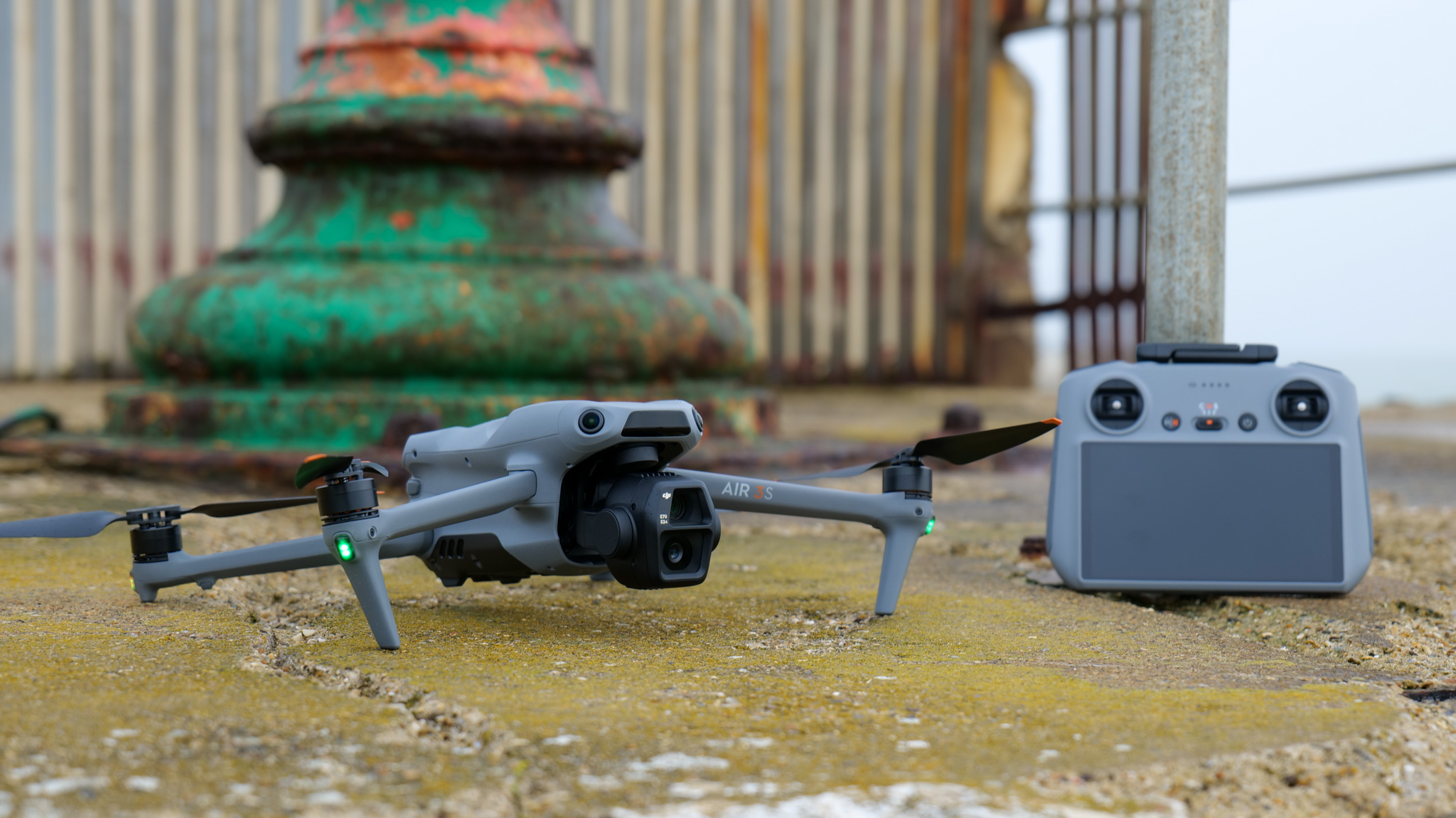
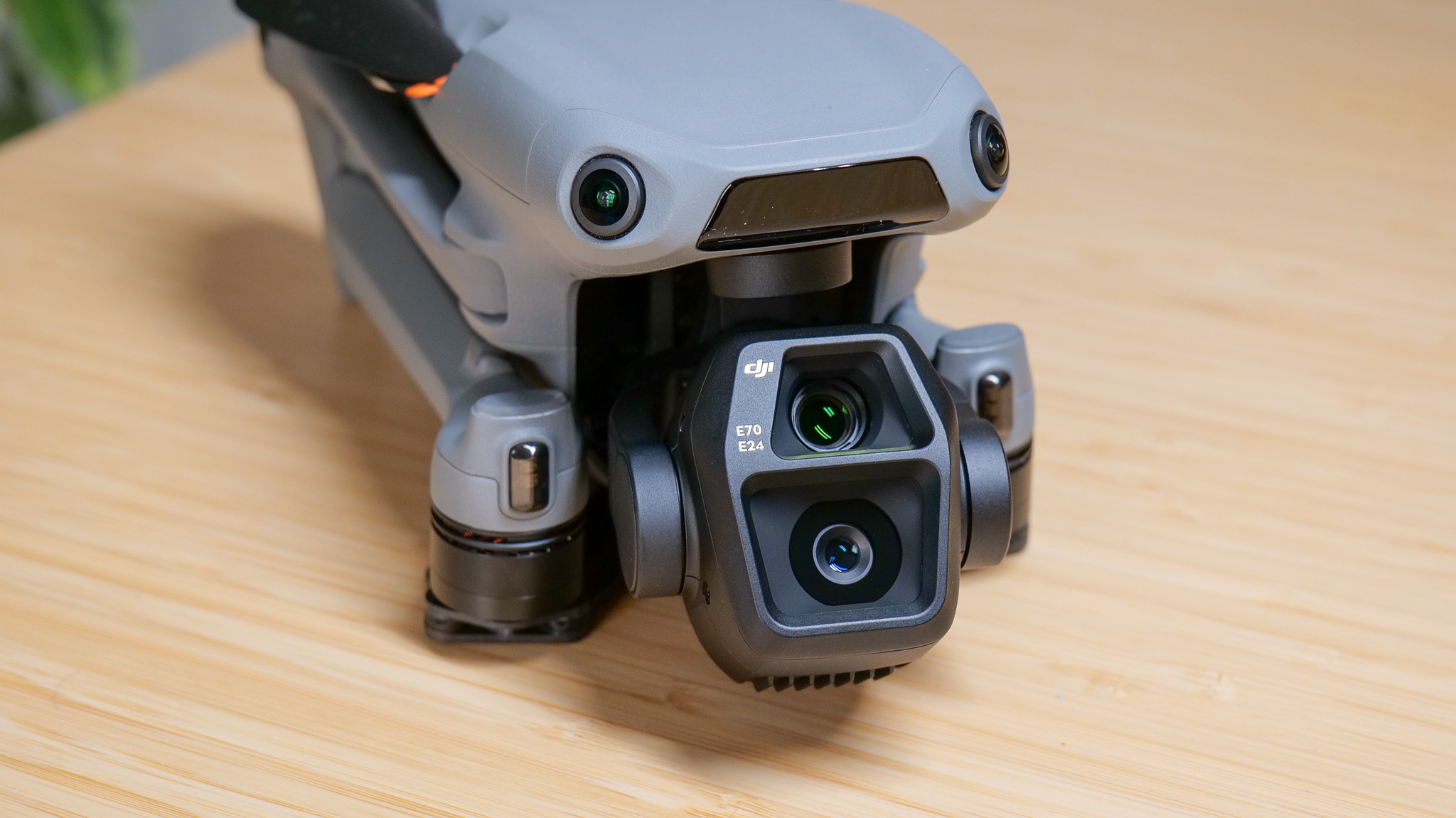
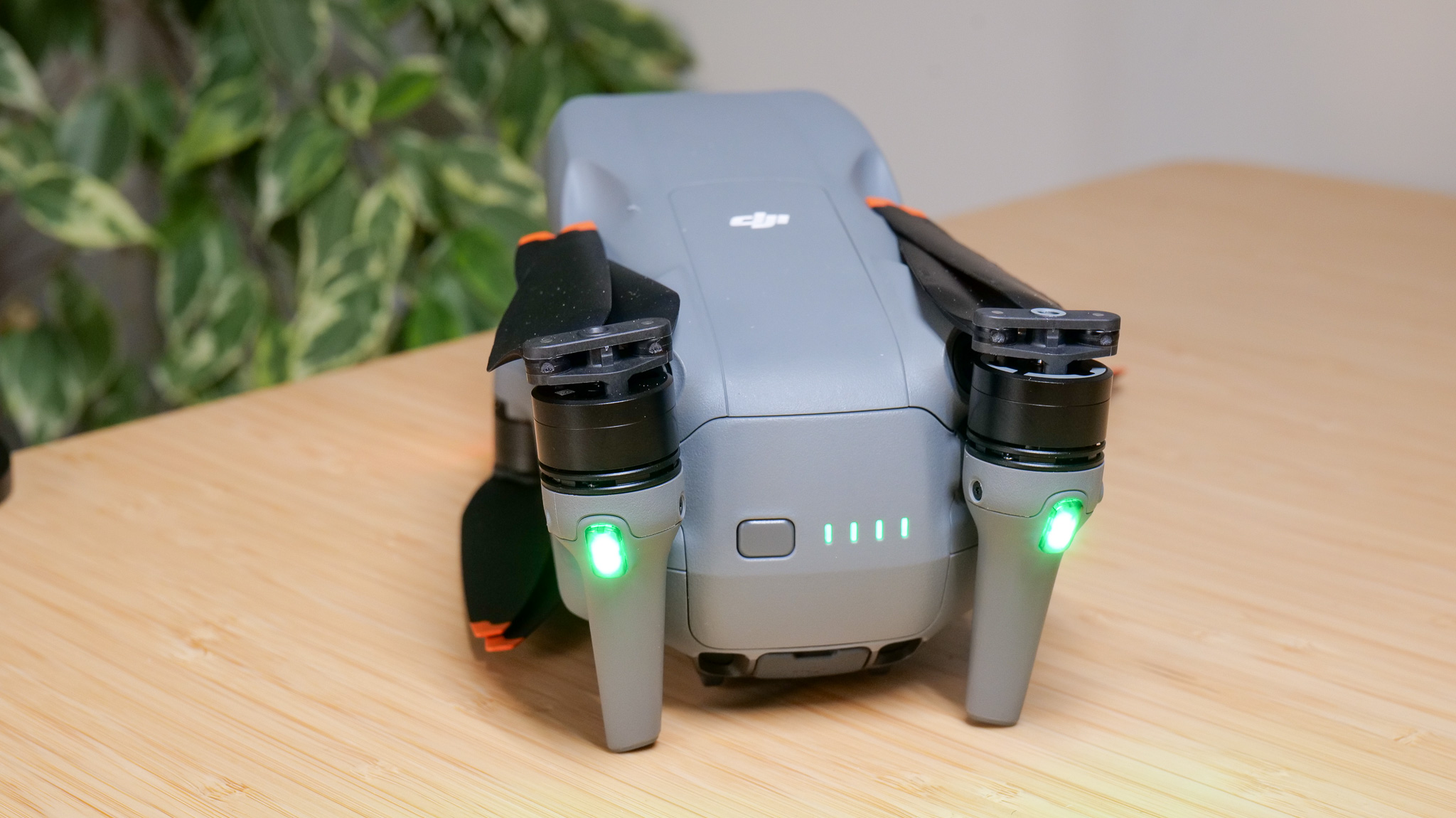
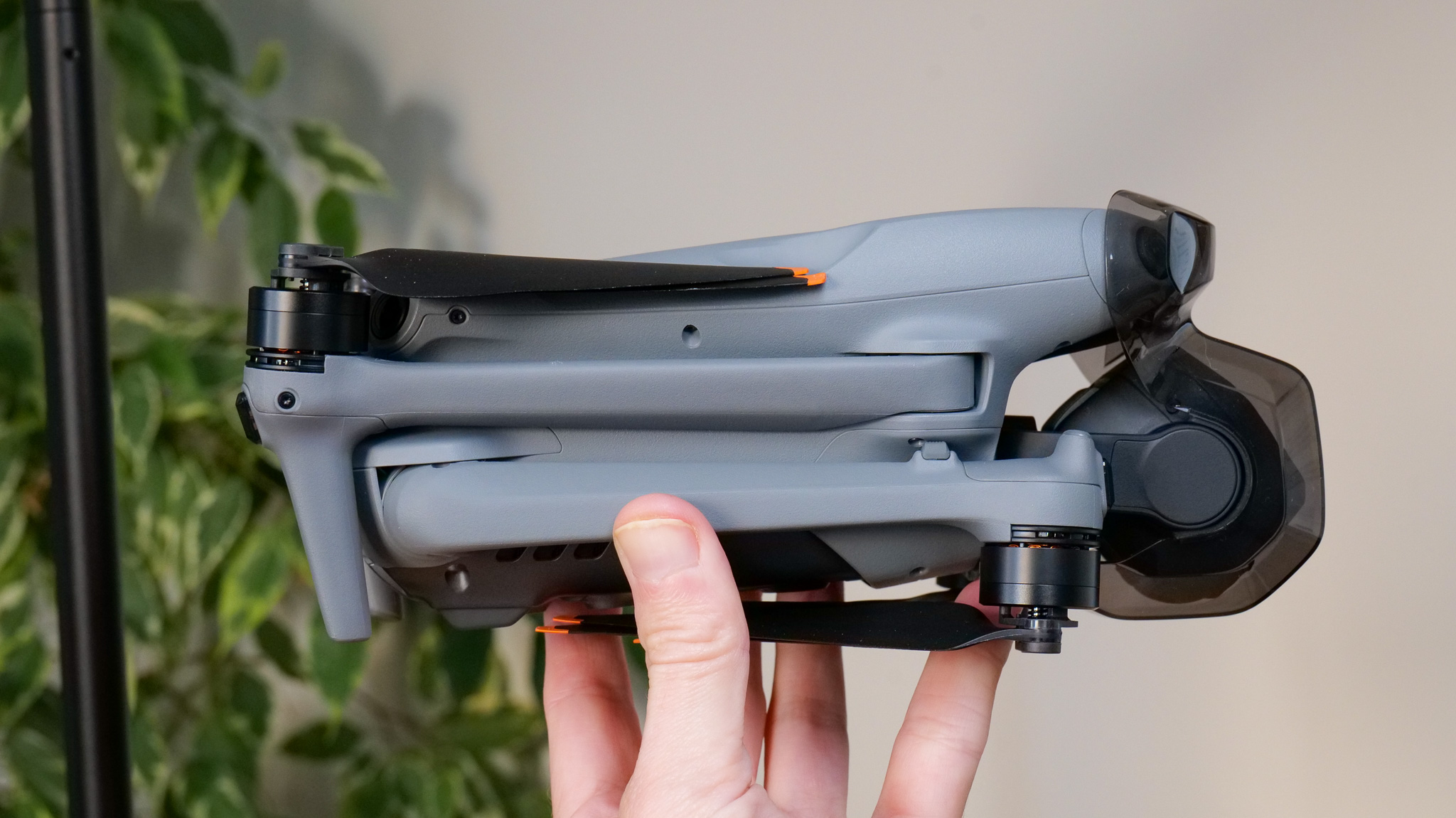
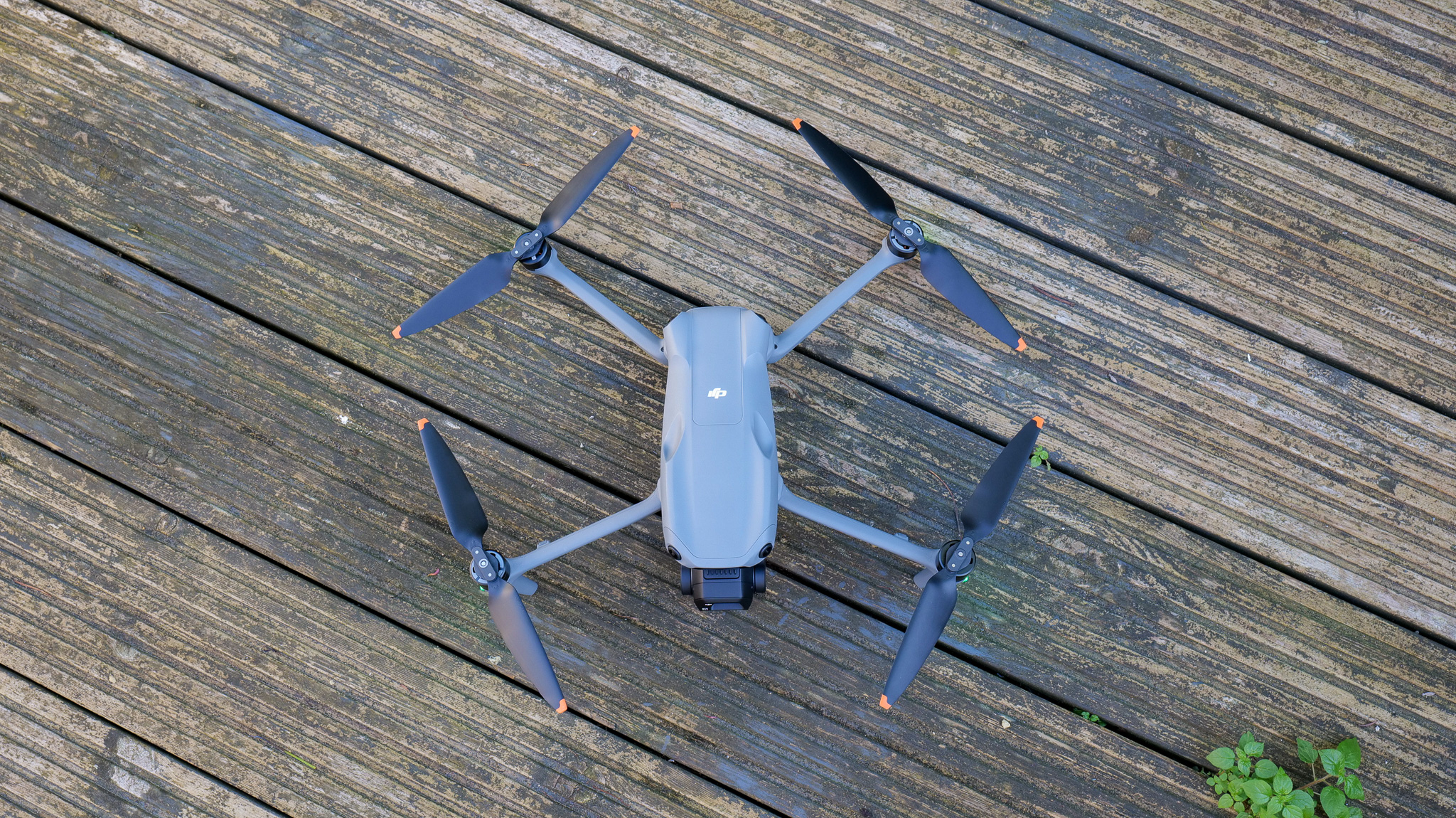
Specifications
Reasons to buy
Reasons to avoid
DJI Air 3S sample images
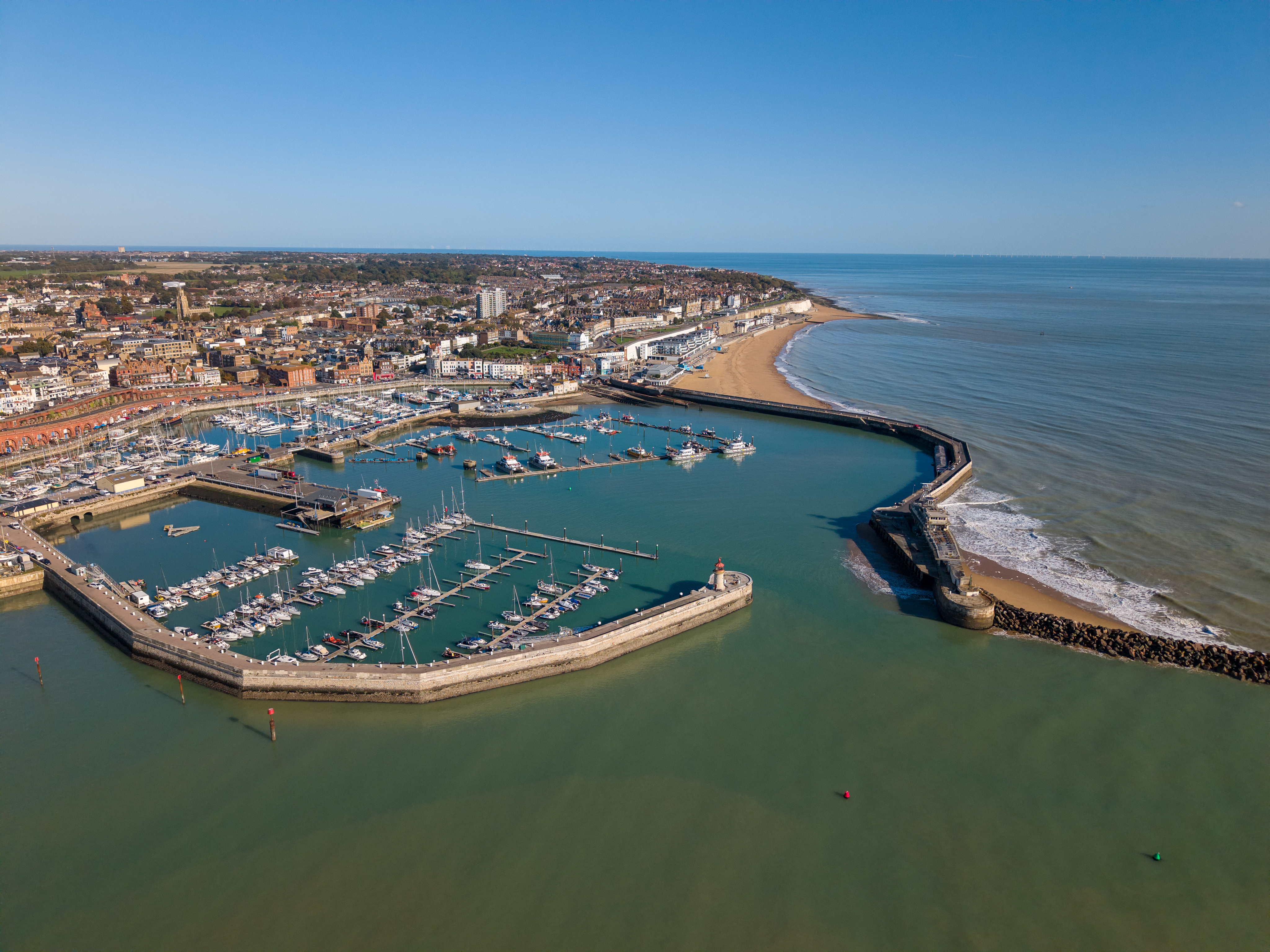

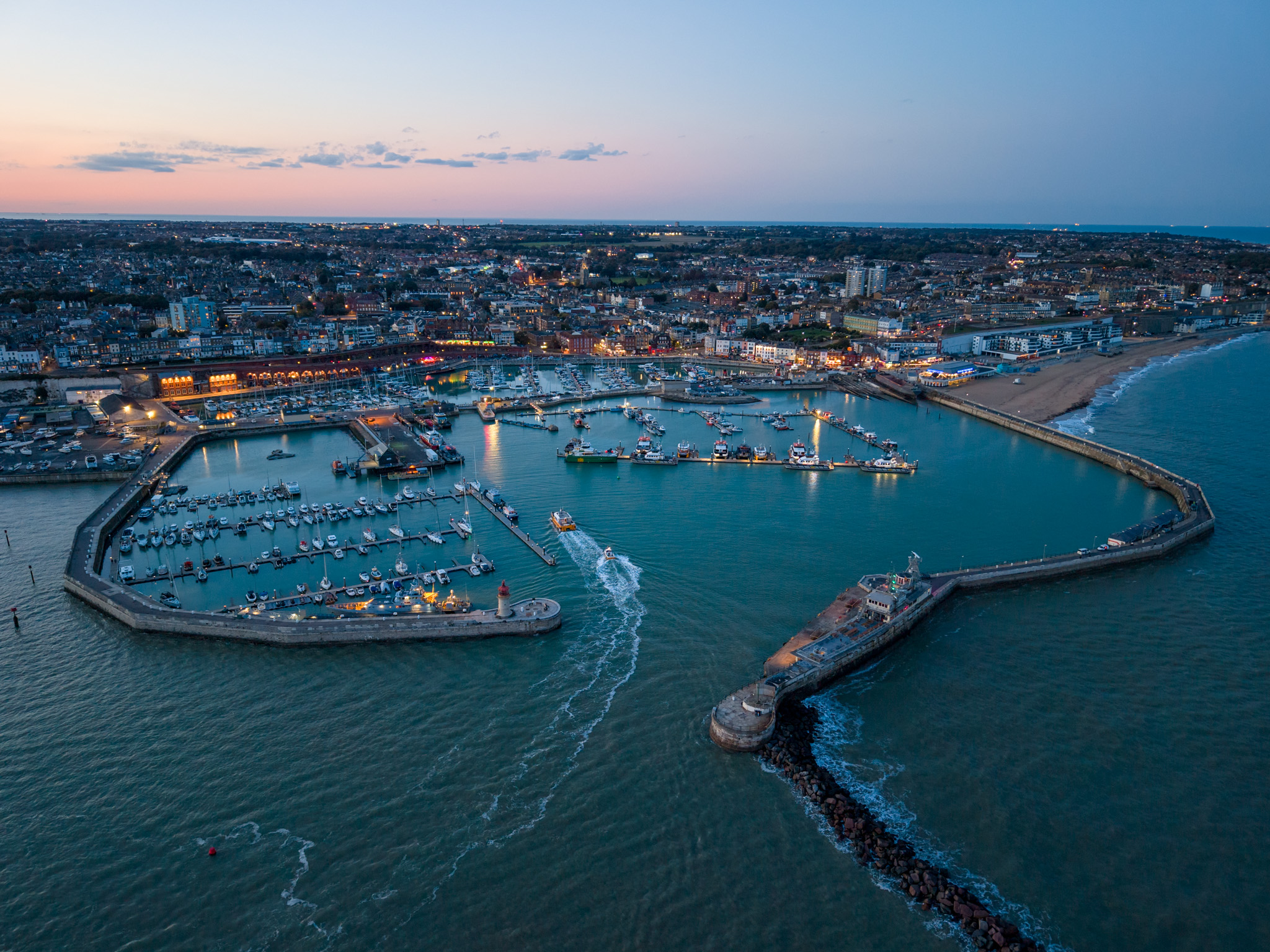
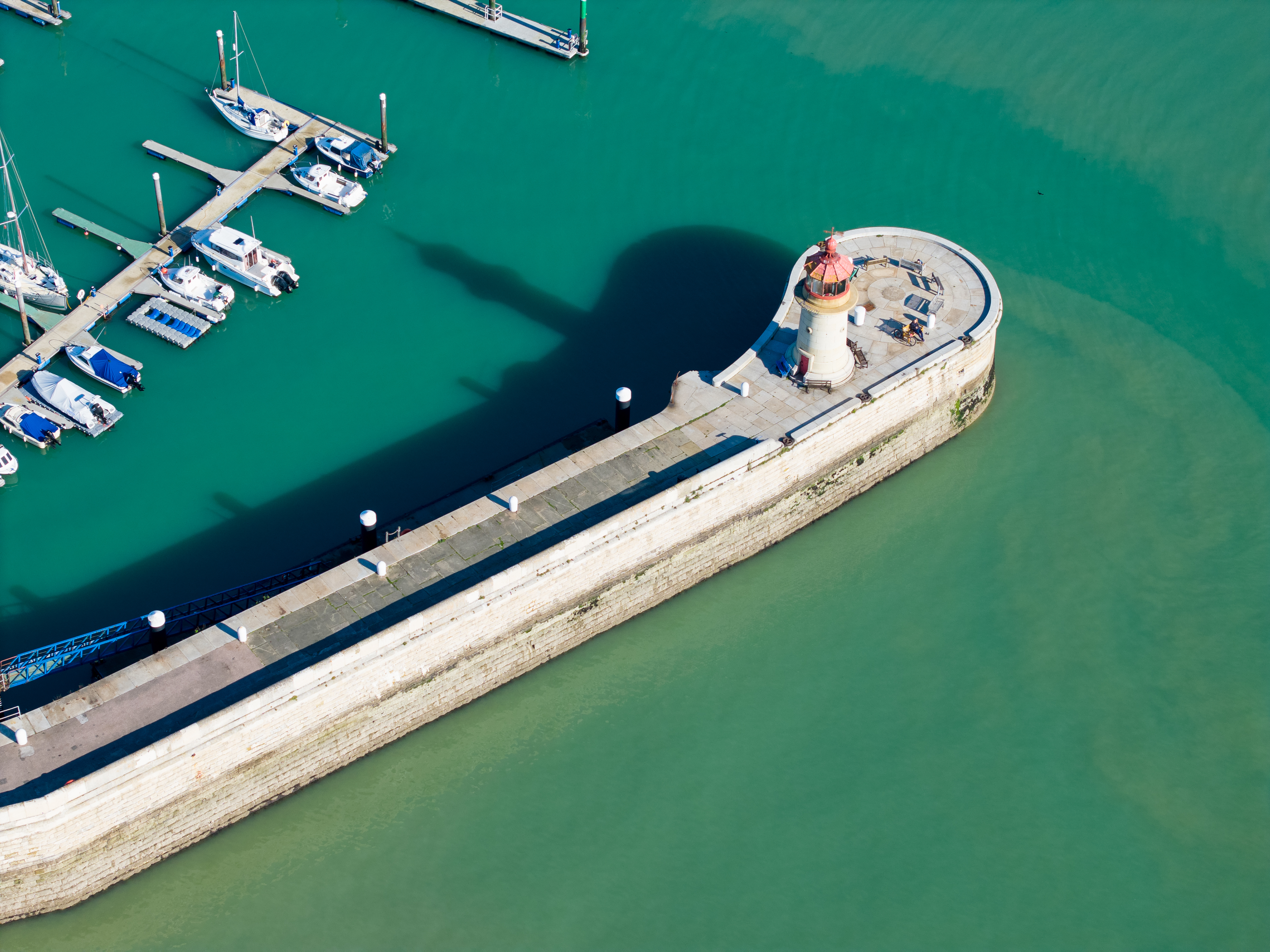
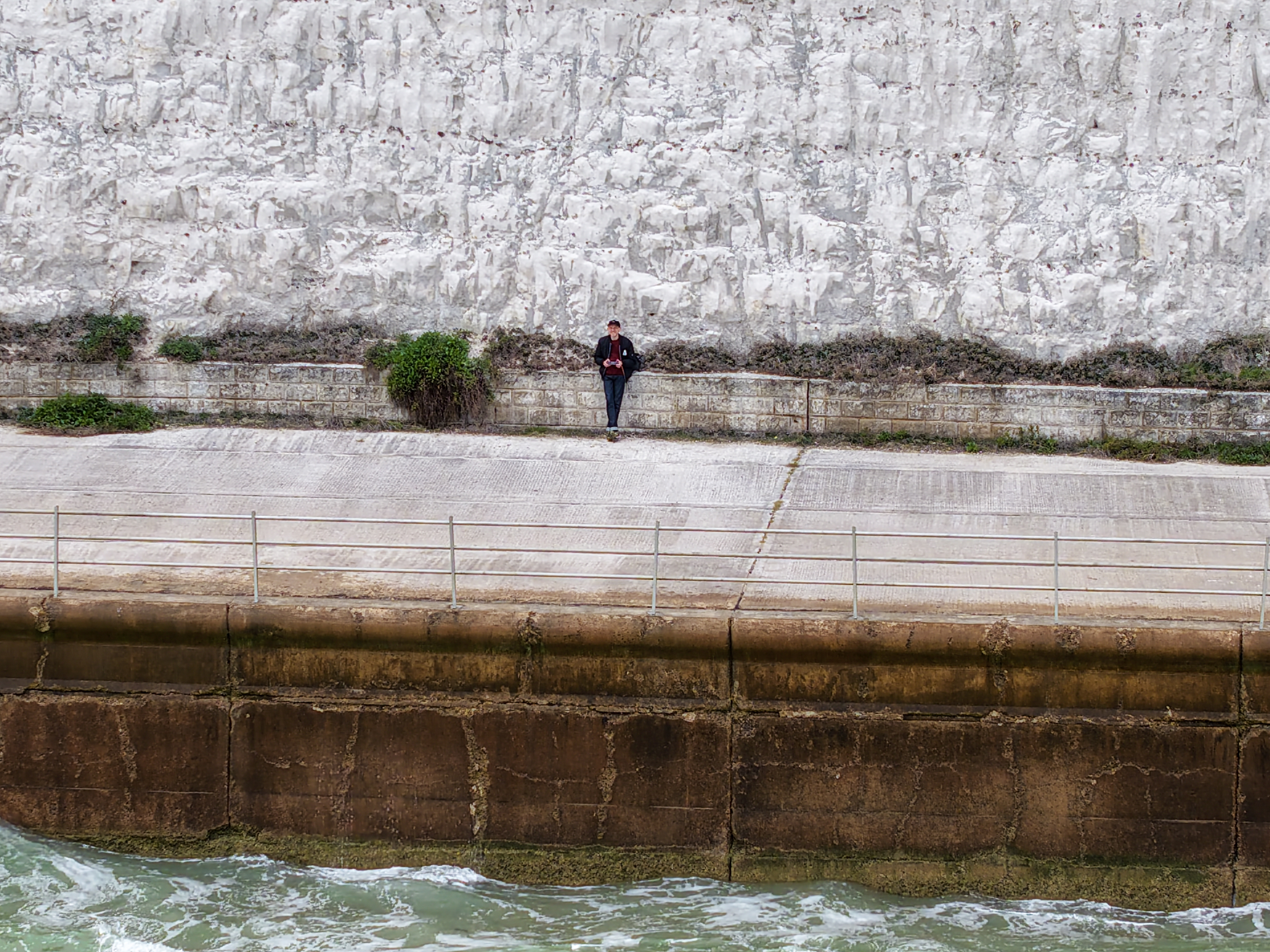
✅ You want to keep your distance: The Air 3S has two lenses, including a 3x telephoto that lets you get close to the action to make videos from a safe working distance.
✅ You need a sturdy drone for windy conditions: The Air 3S is physically larger than the Mini 4 Pro and has better wind resistance for breezy weather.
❌ This is your first drone: The weighty DJI Air 3S sits in the C1 category of drones and that comes with flying restrictions that you don't get with sub-250g drones like the Mini 4 Pro.
❌ You shoot a lot of video: Both of the Air 3S’s lenses have fixed apertures, which are particularly restrictive for shooting video with ND filters in variable light.
Clearly sitting between the Mini series and Mavic Pro series of DJI drones is the Air series, and the latest model is the Air 3S. Novices will find a sub-250g model like the Mini 3 more manageable than the Air 3S, but you can enjoy much better wind resistance with the larger model, plus a generous 45-minute flight time. We also think beginners will get to grips quickly with the Air 3S's easy interface and safety features such as obstacle avoidance.
As a drone with 724g take-off weight, the Air 3S is placed in Europe’s C1 category and that comes with flight restrictions, meaning you need to keep a greater distance from people and animals and events to be safe and legal. However, you can still get close to the action thanks to the Air 3S's 3x telephoto lens with 70mm (approx) focal length. Like the Air 3, the Air 3S is a dual camera drone and the main camera is improved, with a much larger 1-inch sensor (to the 1/1.3-inch sensor of the Air 3). That means better image quality in challenging light, especially at nighttime. You also get obstacel sensing with LiDAR which performs better at night, plus more built-in memory to store your 4K videos and (up to (50MP) photos.
The Air 3S is a minor update of the Air 3 and not worth the upgrade if you already own the older model, but those new to the Air series should go for the older model, as our Air 3S vs Air 3 article suggests. Ultimately, the Air 3S is an iterative update of the already class-leading Air 3, without a price hike.
- Read our in-depth DJI Air 3S review
Top alternatives...
With Autel Robotics recently discontinuing its consumer series of drones – most notably the Autel Evo Lite+ – there really is little competition for the Air 3S, besides DJI's own Mini 5 Pro – a much smaller drone with arguably even better camera skills thanks to its 225 degree roll rotation.
The best selfie drone
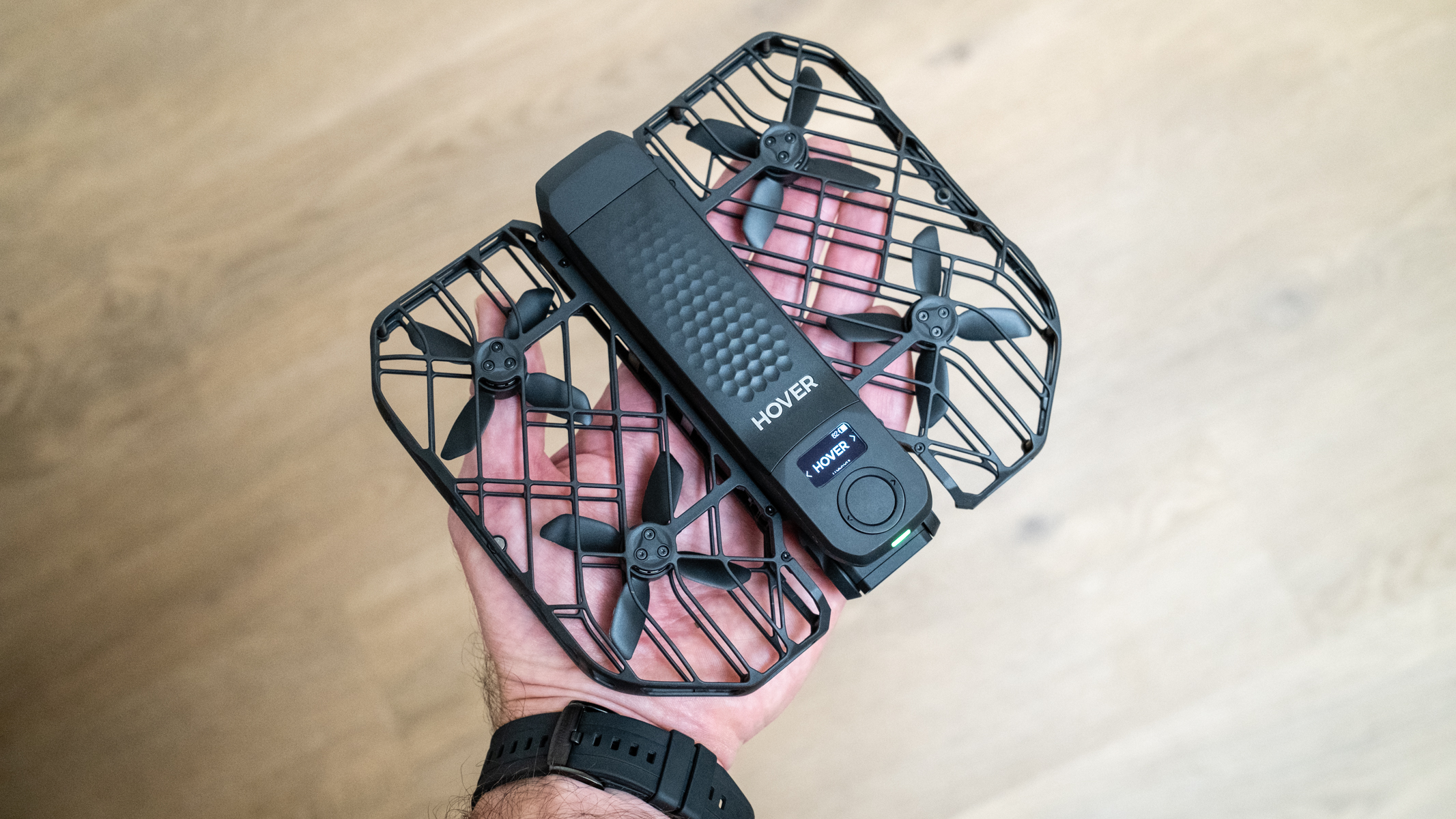
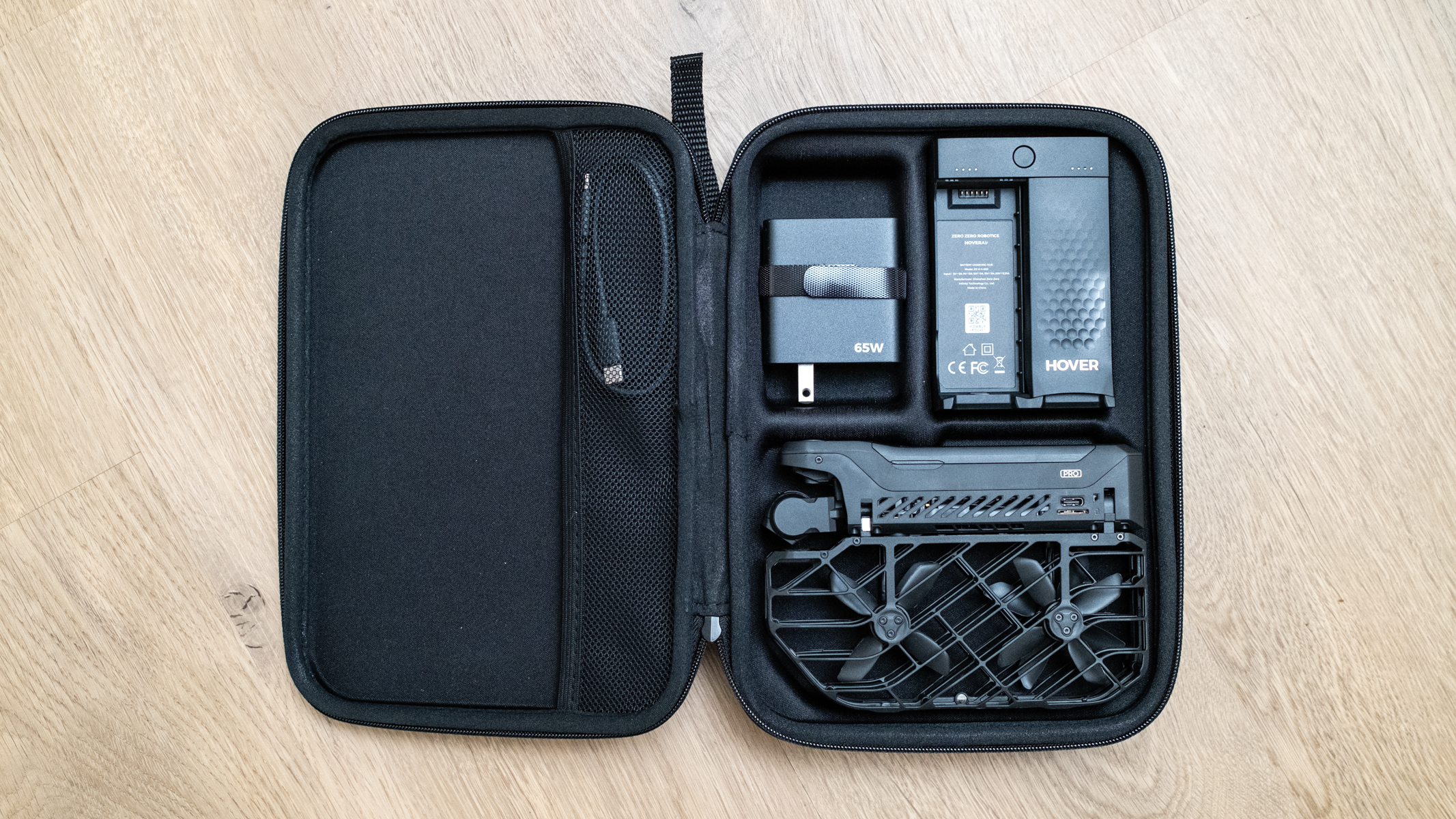
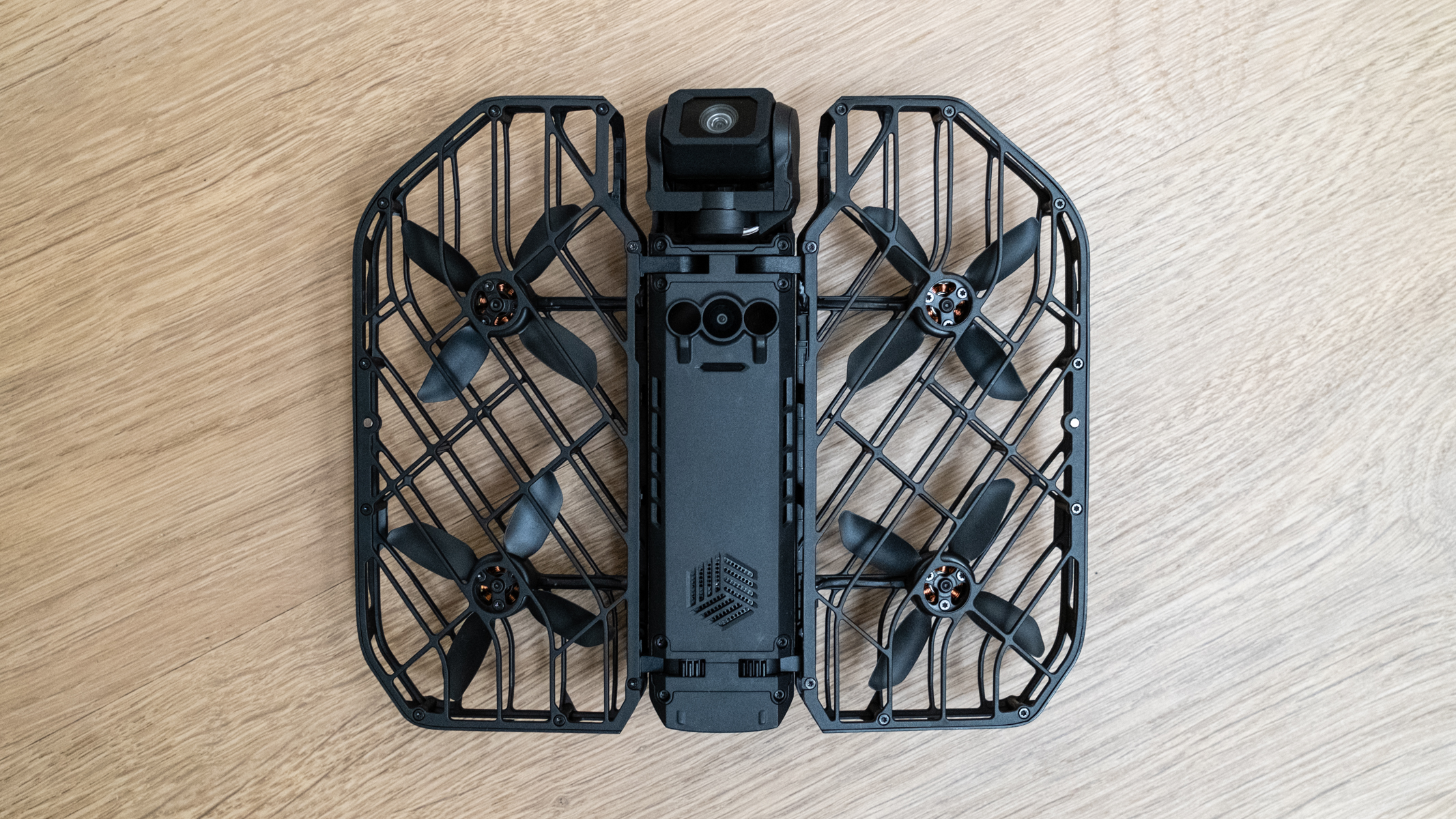
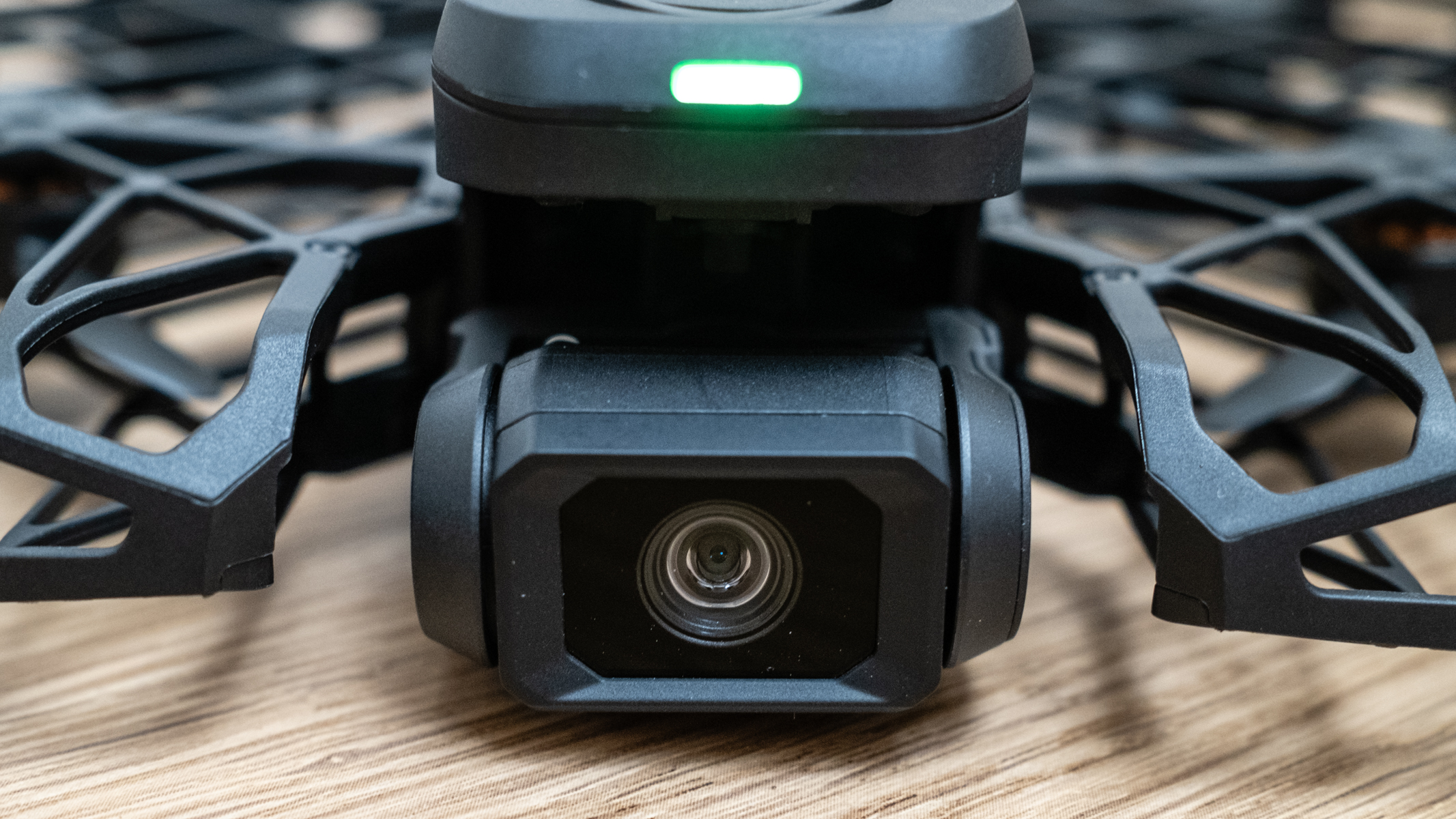
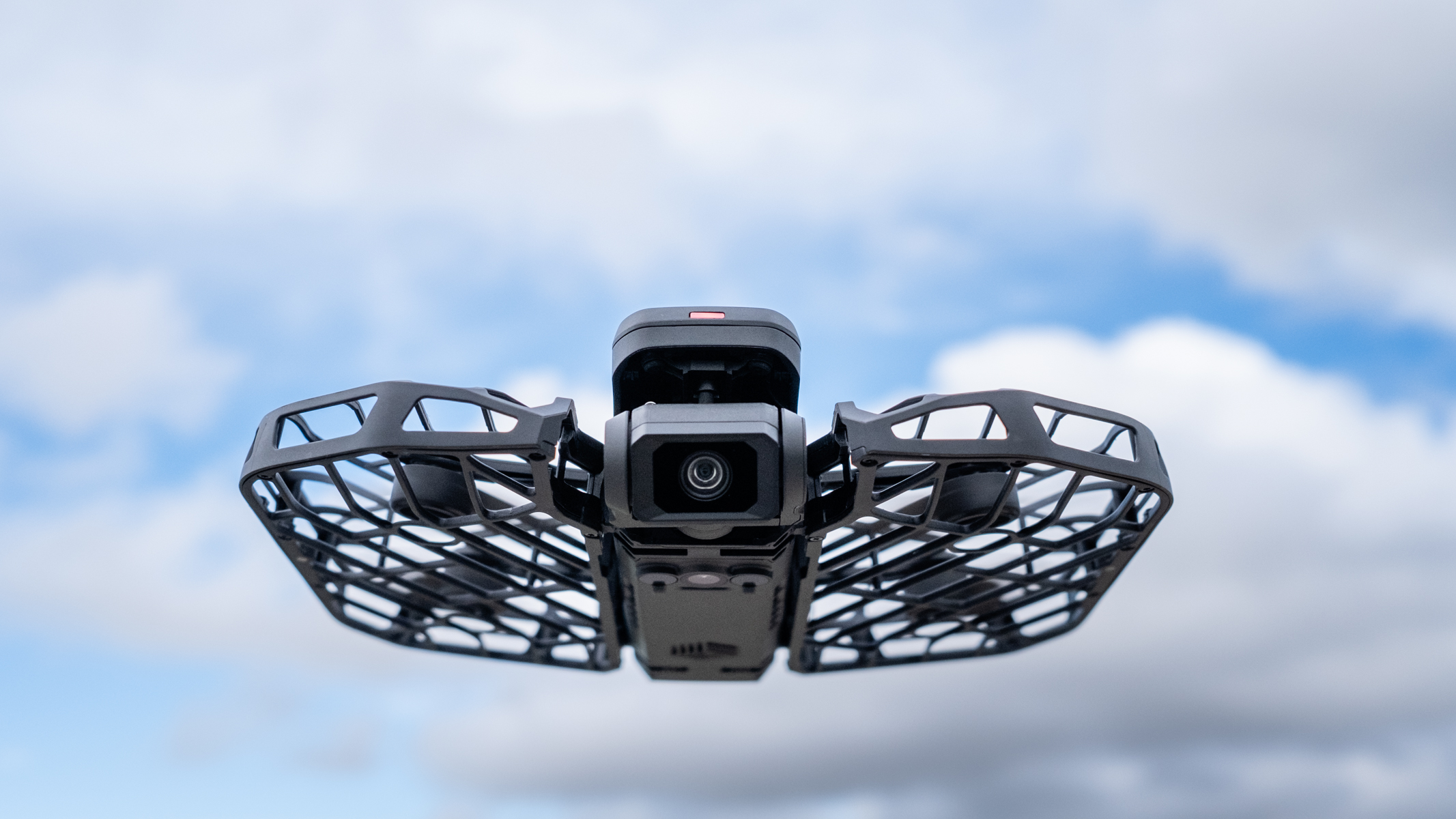
Specifications
Reasons to buy
Reasons to avoid
HoverAir X1 Pro sample images
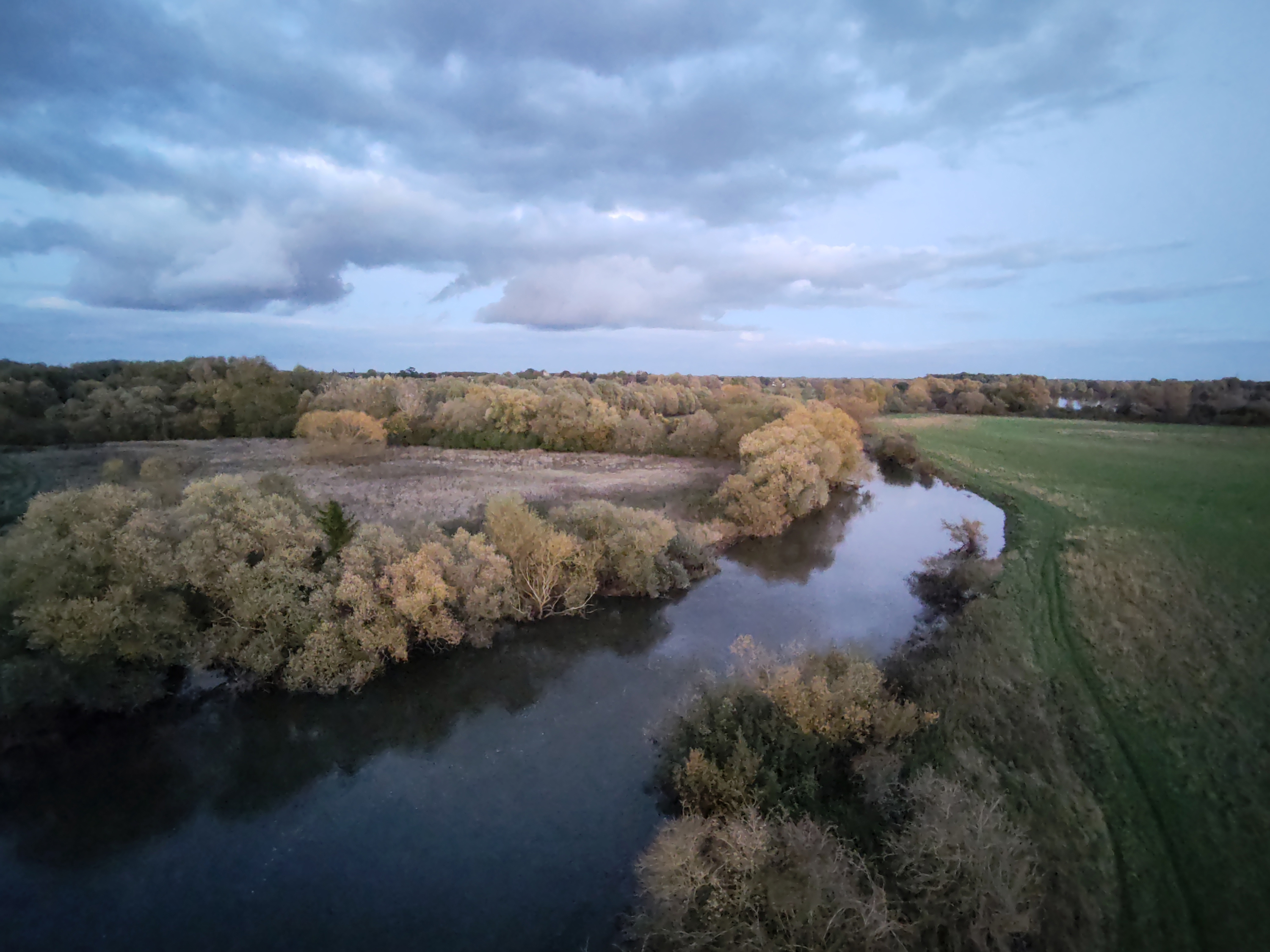
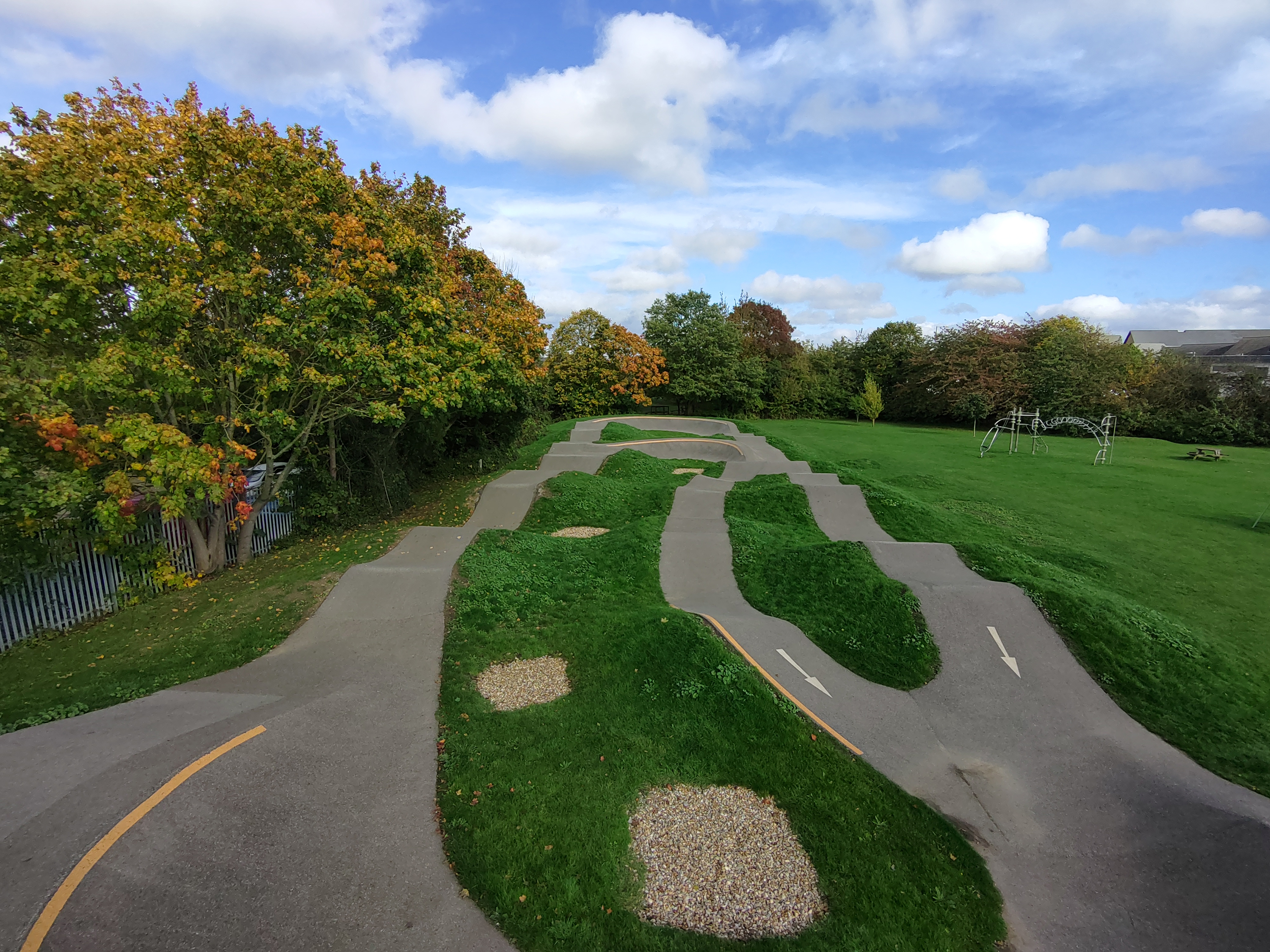
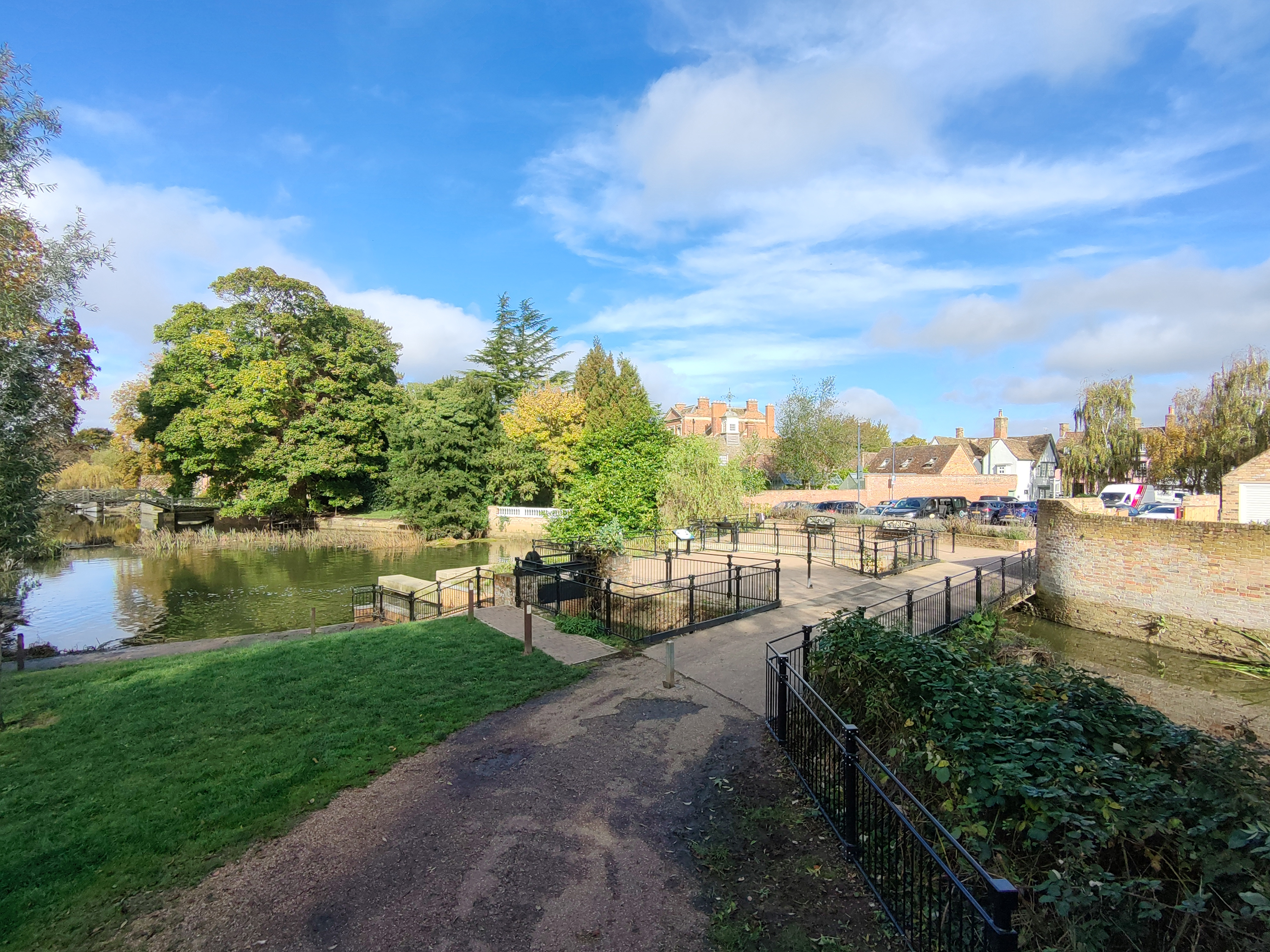
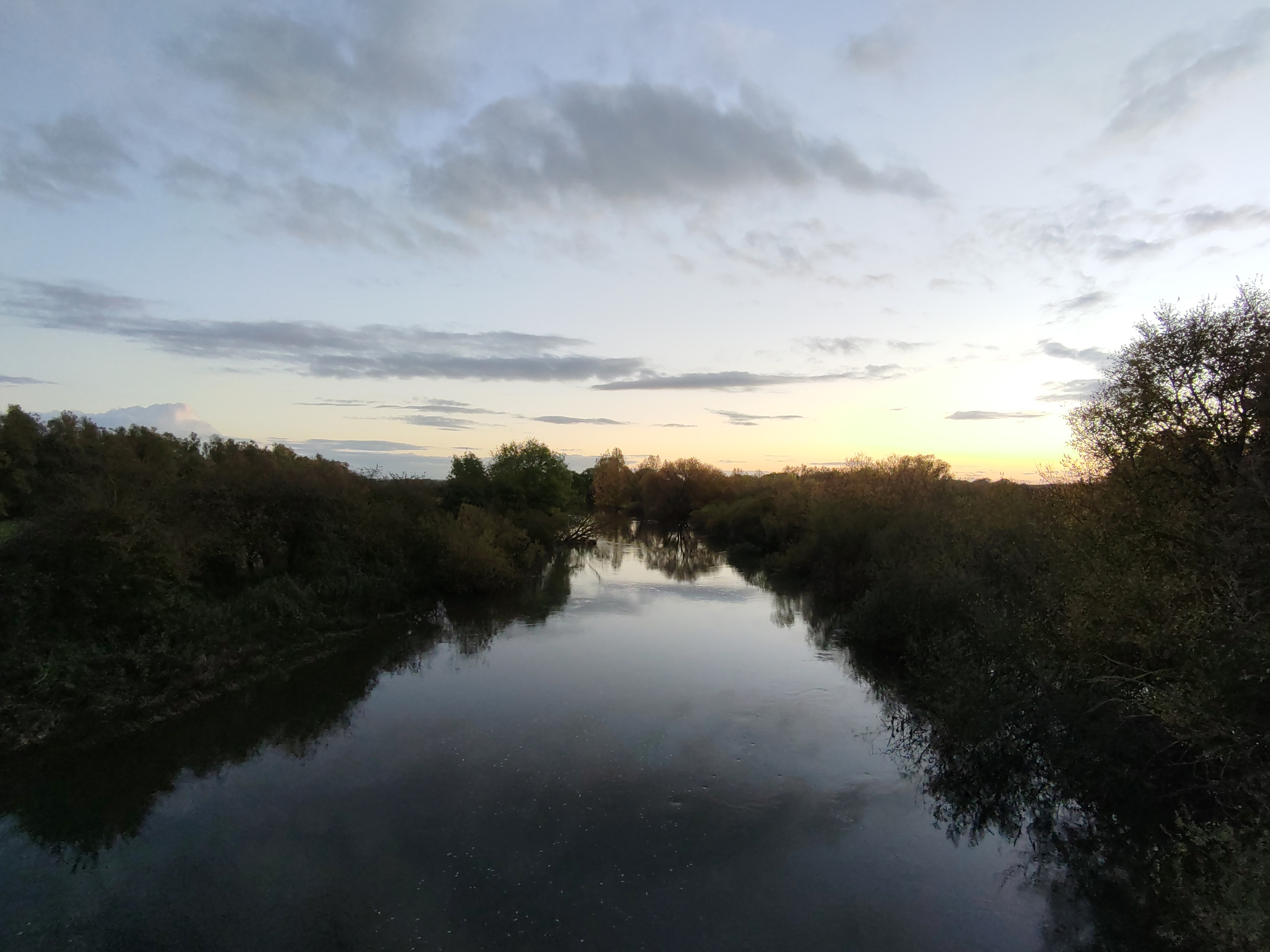
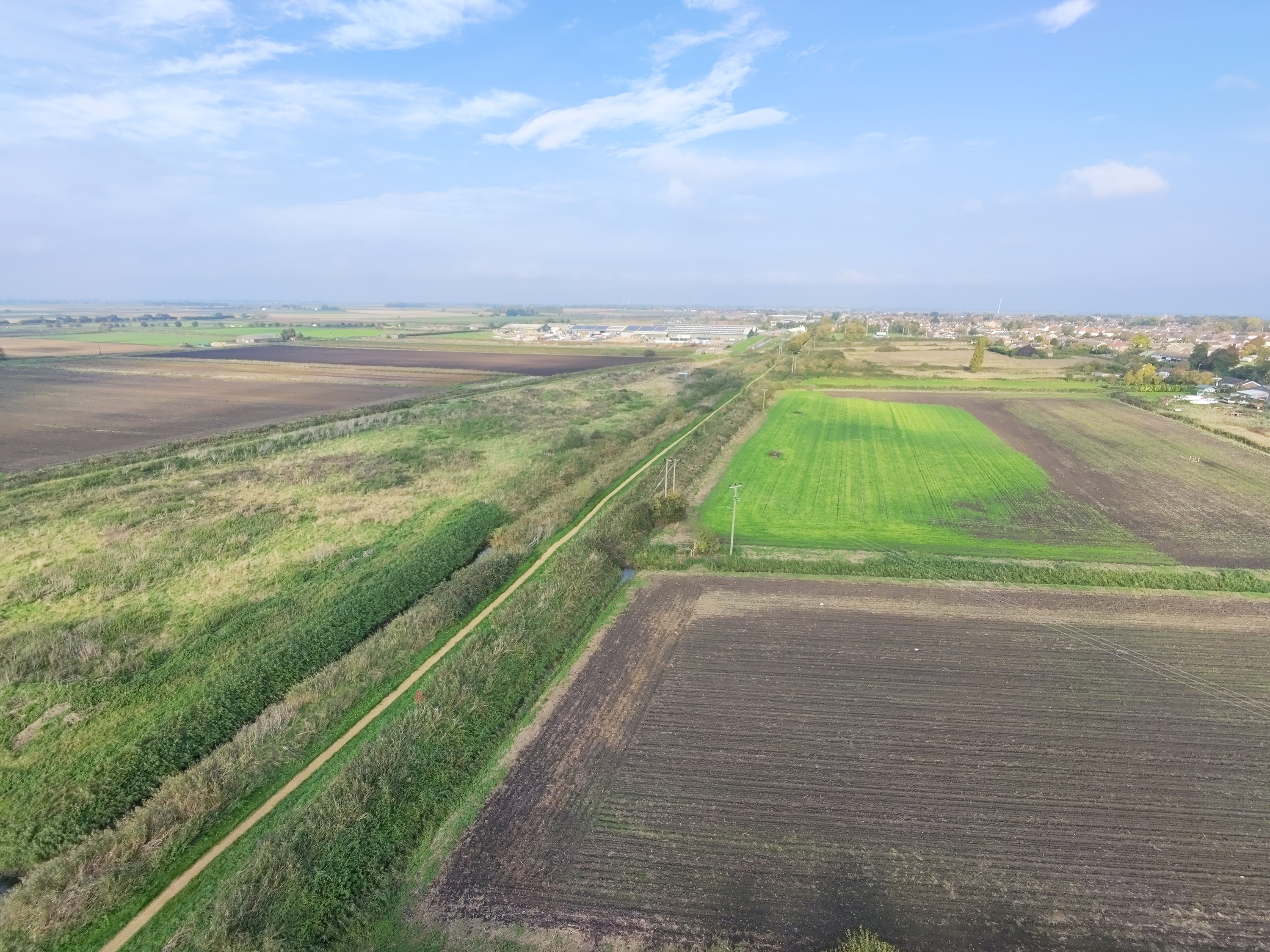
✅ You have no drone experience whatsoever: It takes just seconds to get airborne and flying, no experience needed.
✅ A selfie stick doesn't cut it: Keeping you in the center of the shot with excellent tracking features while recording smooth 4K video – you'll get next-level selfies
❌ You want top flight performance: The X1 Pro is designed for steady aerial selfies rather extreme flight speed and manouevers.
❌ You want the best value: DJI's Neo costs much less and it has more flight options. However its video quality doesn't match the X1 Pro.
HoverAir invented a new kind of drone that has resonated with content creators in particular – a selfie drone. Its latest model, the X1 Pro, is like a supercharged selfie stick which takes off and lands from the palm of your hand, complete with supremely clever automated subject tracking that keeps you in the center of the action.
The tiny X1 Pro comes into its own for getting you aerial footage of your adventures, be it tracking you on a bike ride of chilling at the beach. You don't need any experience – seriously you can be airborne in seconds, while propellor guards make it a safe drone to fly in close proximity.
The X1 Pro upgrades the HoverAir X1 with a sturdier flight experience, a higher wind resistance, a much better battery life, plus higher resolution 4K video. Naturally it's heavier, but still super lightweight at 191.5g, which means its restriction-free and ideal for beginners.
DJI has since launched its own selfie drone, the DJI Neo, which could be the better pick if you can live without the X1 Pro's robustness and 4K video specs, plus it offers more flight control options and it costs less. However, the X1 Pro's image quality and automated flight fun makes it our top pick for aerial selfies.
Read our in-depth HoverAir X1 Pro review
Top alternatives...
- DJI Neo – If you don't need the serious selfie skills of the X1 Pro, then the Neo is a simpler, low-cost alternative.
- HoverAir X1 Pro Max – the pricier 'Max' version of the X1 Pro delivers next-level 8K 60fps video.
Best cheap drone for novices
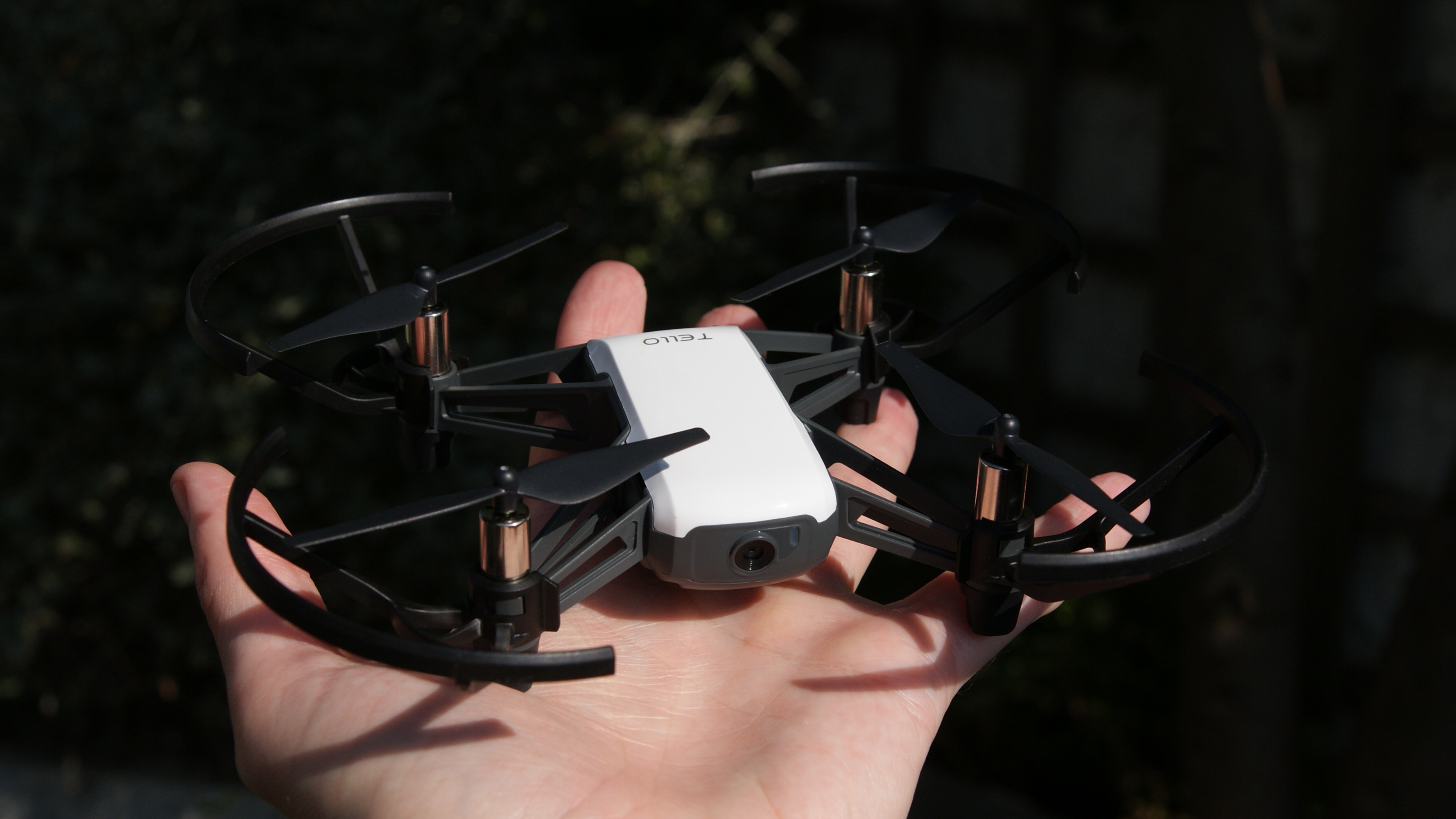
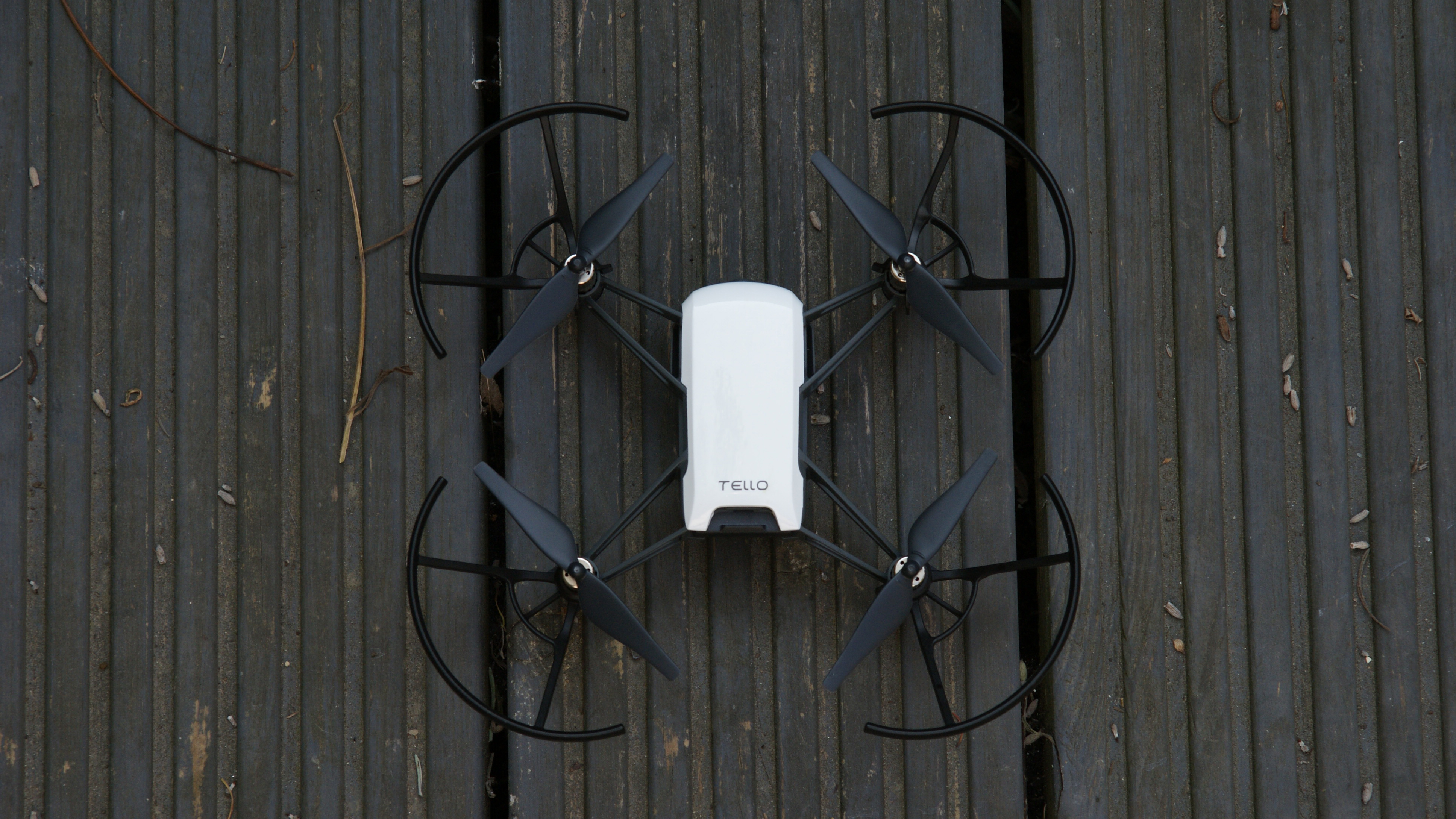
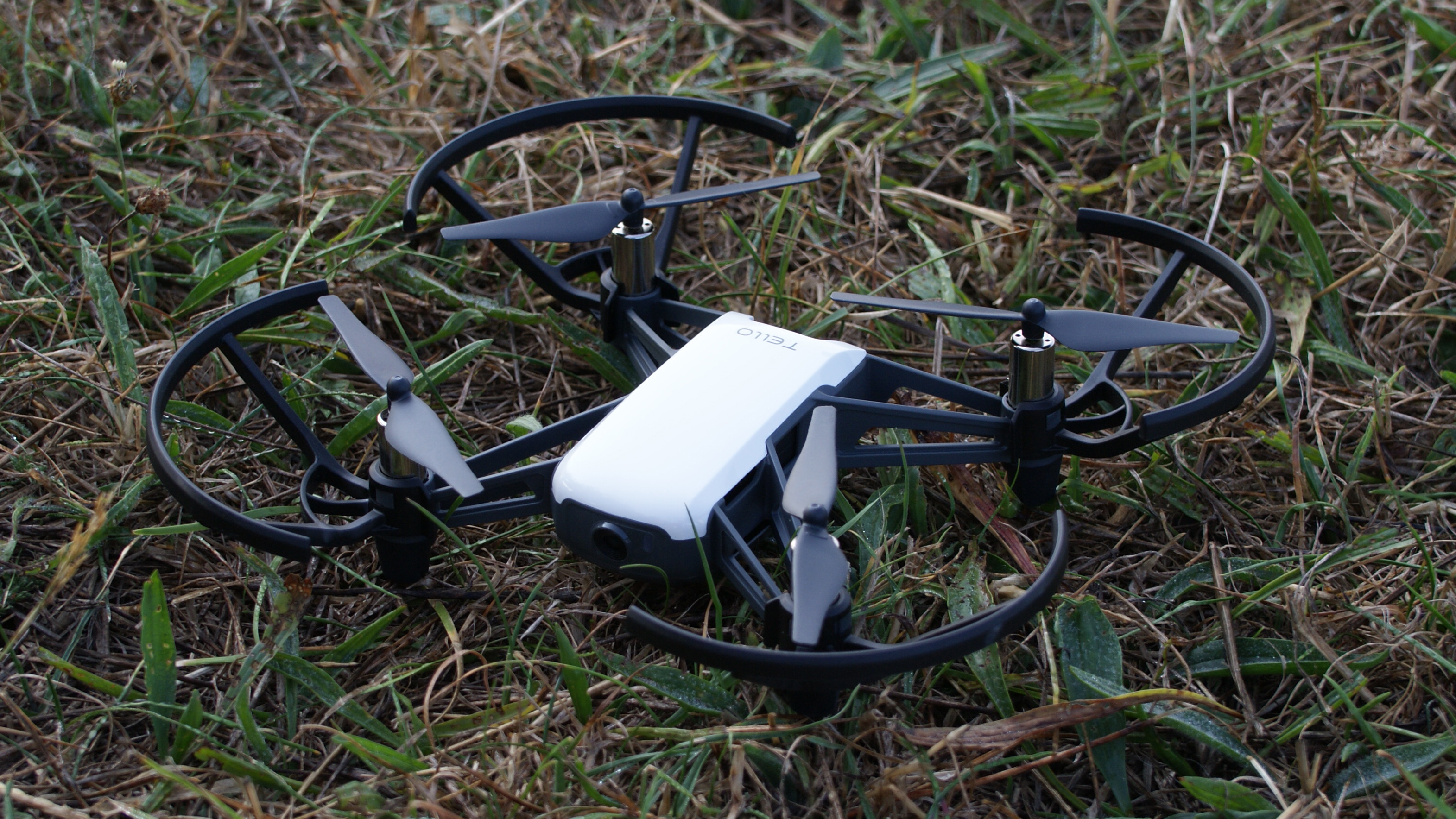
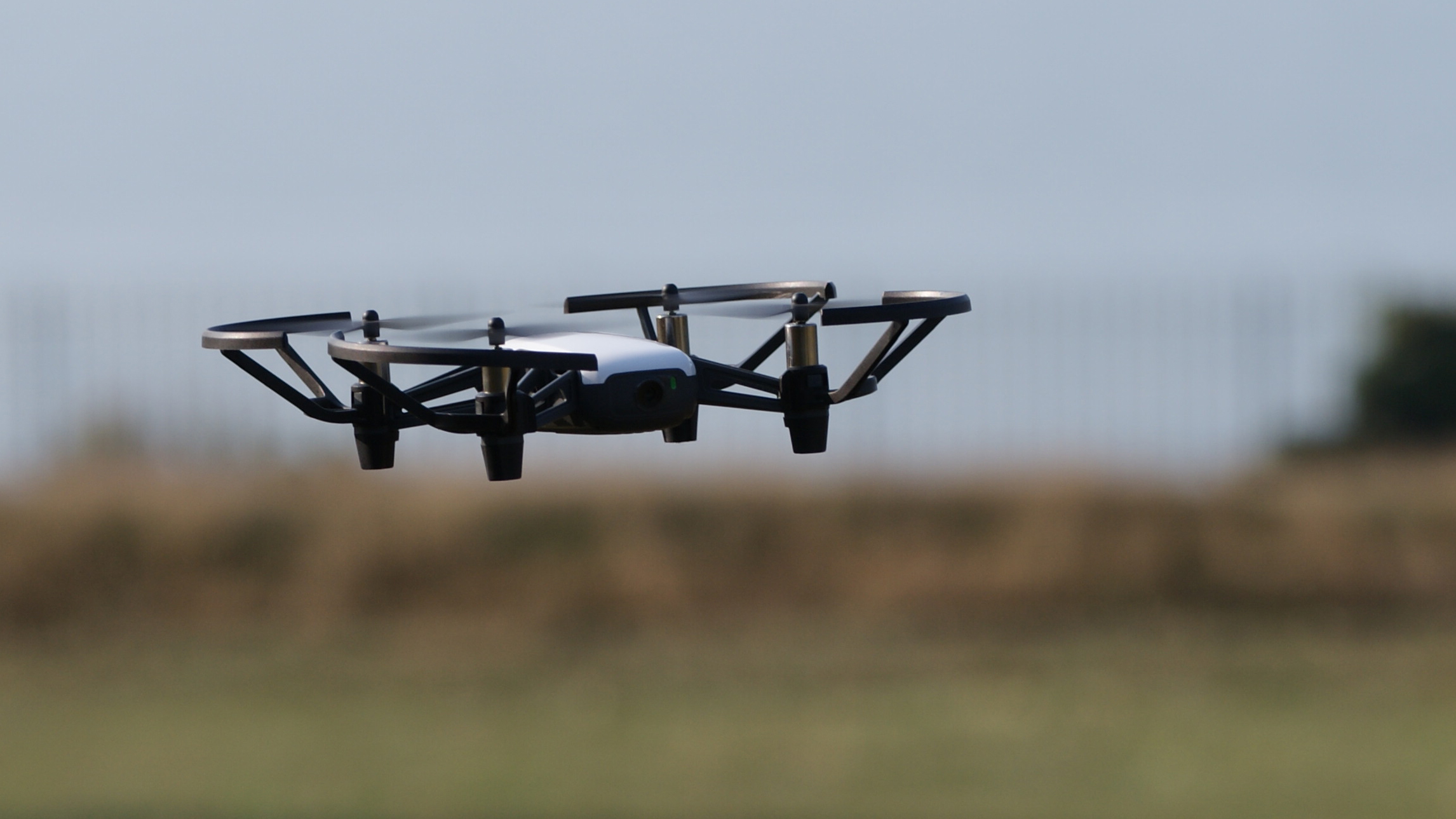
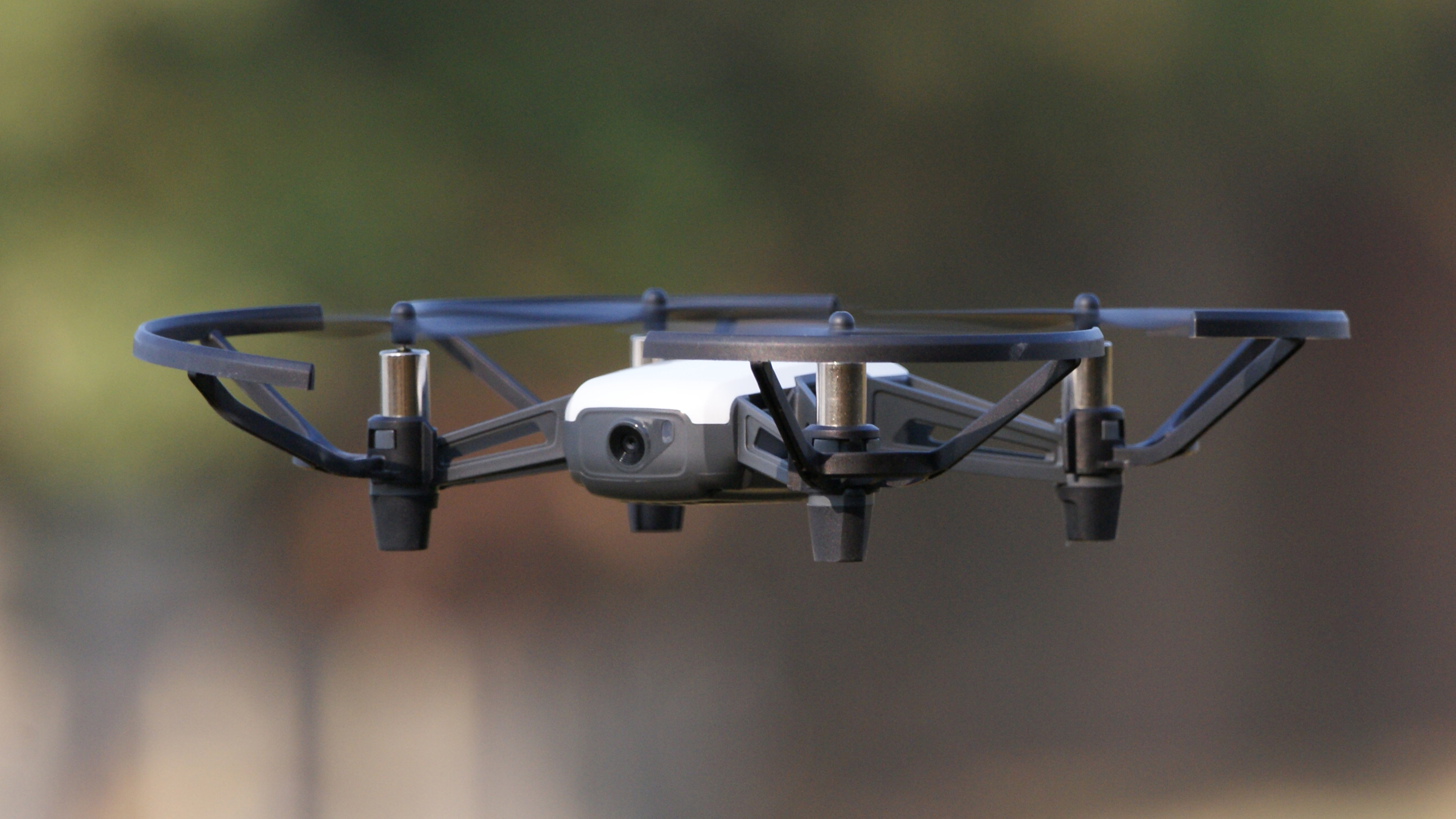
Specifications
Reasons to buy
Reasons to avoid
✅ You want a cheap starter drone: With a simple app and responsive controls, the Tello is an affordable way to master the basics of drone flight.
✅ You want a drone to travel with: Tiny dimensions and a featherweight build make the Ryze Tello easy to carry in a backpack.
❌ You need to fly conifdentally outdoors: Due to its low weight, the Tello doesn’t deal with anything more than a slight breeze.
❌ You want high-quality footage: Video is a weak point of the Tello, with 720p footage often appearing choppy and compressed.
Simple, lightweight and affordable, the Ryze Tello is a fun drone for first-time flyers. Despite its budget price tag, the Tello offers plenty: the battery delivered a reasonable 13 minutes of flight time in testing, while downward-facing light sensors allow the Tello to hover in place and perform a handful of automated tricks. Our review found image quality from the nose-mounted 5MP camera less impressive, with limited dynamic range and noticeable compression when streaming 720p HD video to your smartphone.
That said, we found the app refreshingly simple. It's a straightforward way to pilot the Tello, with an on-screen twin-stick setup that’s rewardingly responsive. The theoretical range is 100m, but 30-40m is more realistic – which, given how even the slightest breeze can blow the 80g Tello off course, is no bad thing. On a calm day, it's an enjoyable drone to fly, zipping along at a decent rate and reacting nimbly to inputs. The limited range is somewhat restrictive but, provided you don’t mind choppy video, it’s still the best starter drone around.
- Read our in-depth Ryze Tello review
- Find the best deals on Tello drones with our Tello promo codes.
Top alternatives...
- DJI Neo – the cheapest DJI drone on the market, the Neo offers multiple flight control options. The cost will add up if you explore them all, but it's an excellent lightweight starter drone to try different flying styles, and it doesn't cost the earth.
Best FPV drone
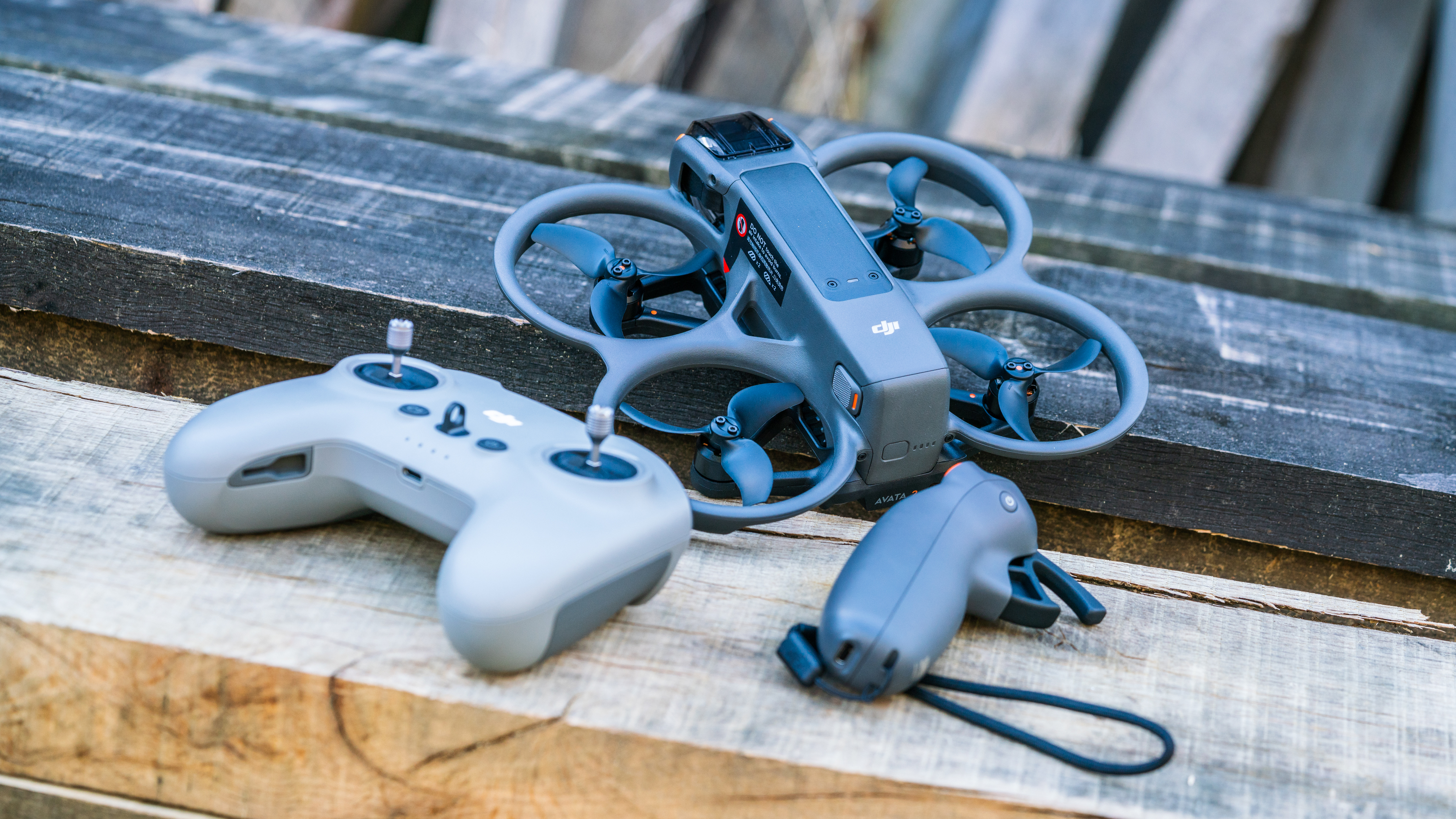

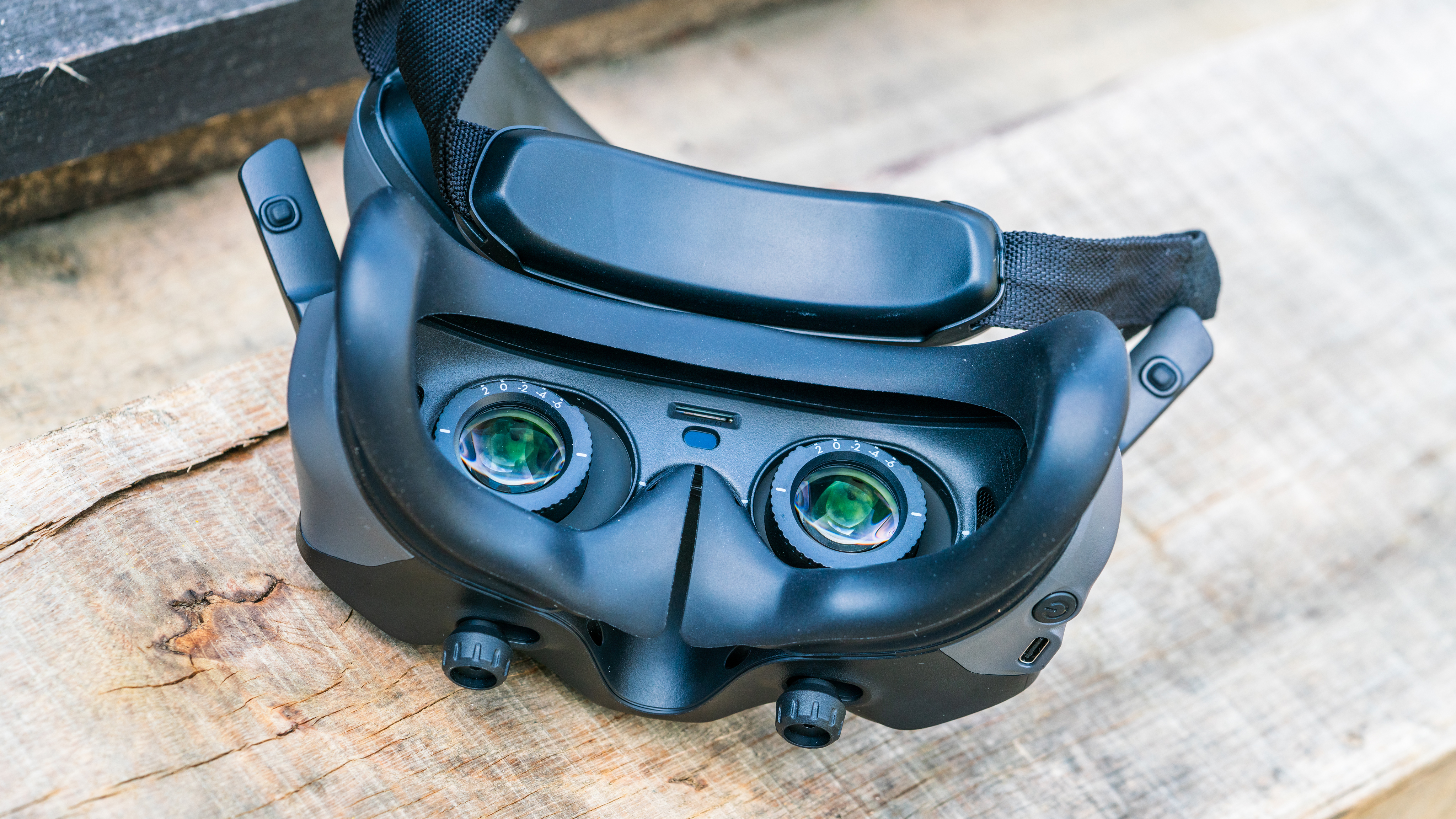
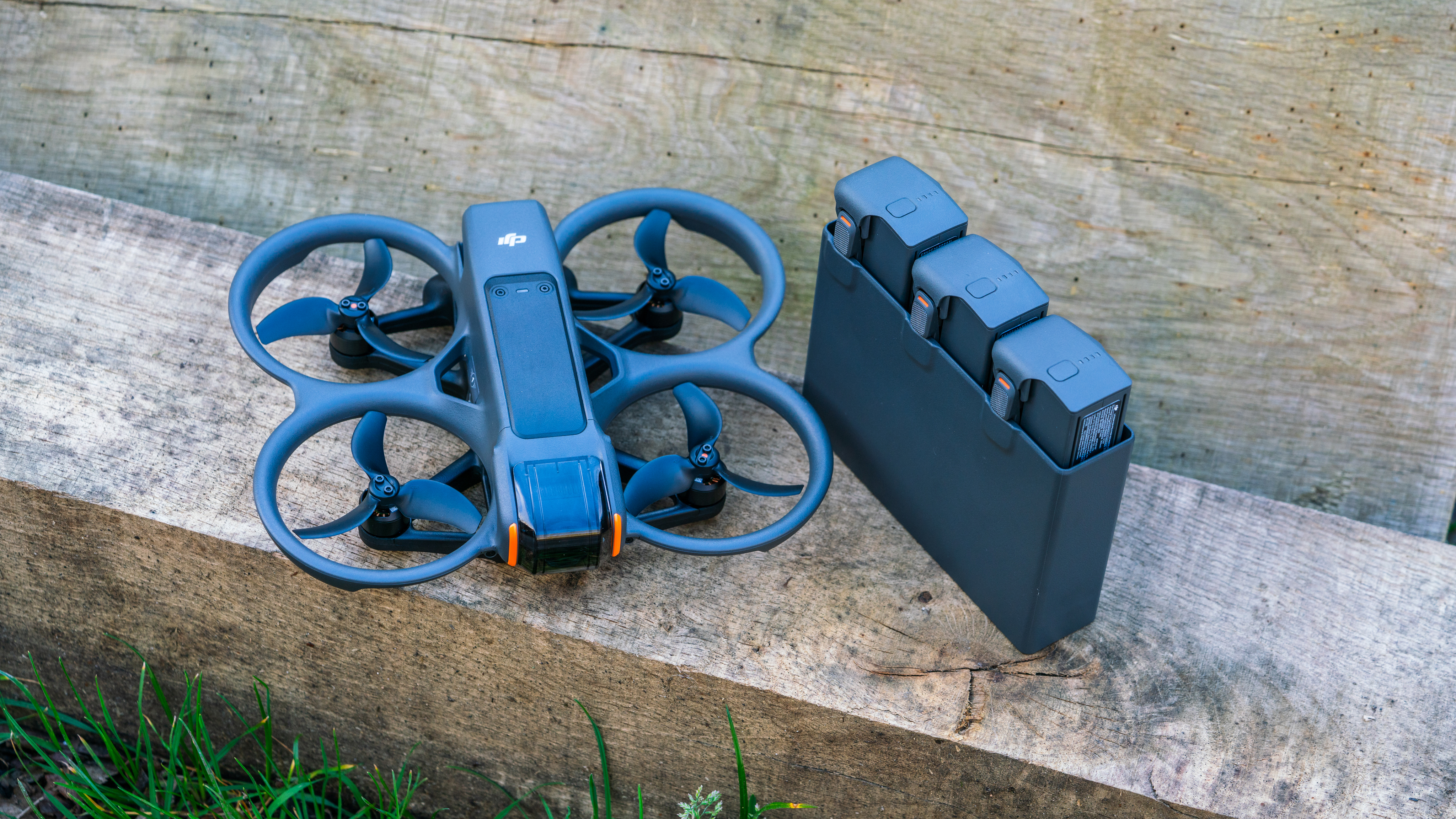
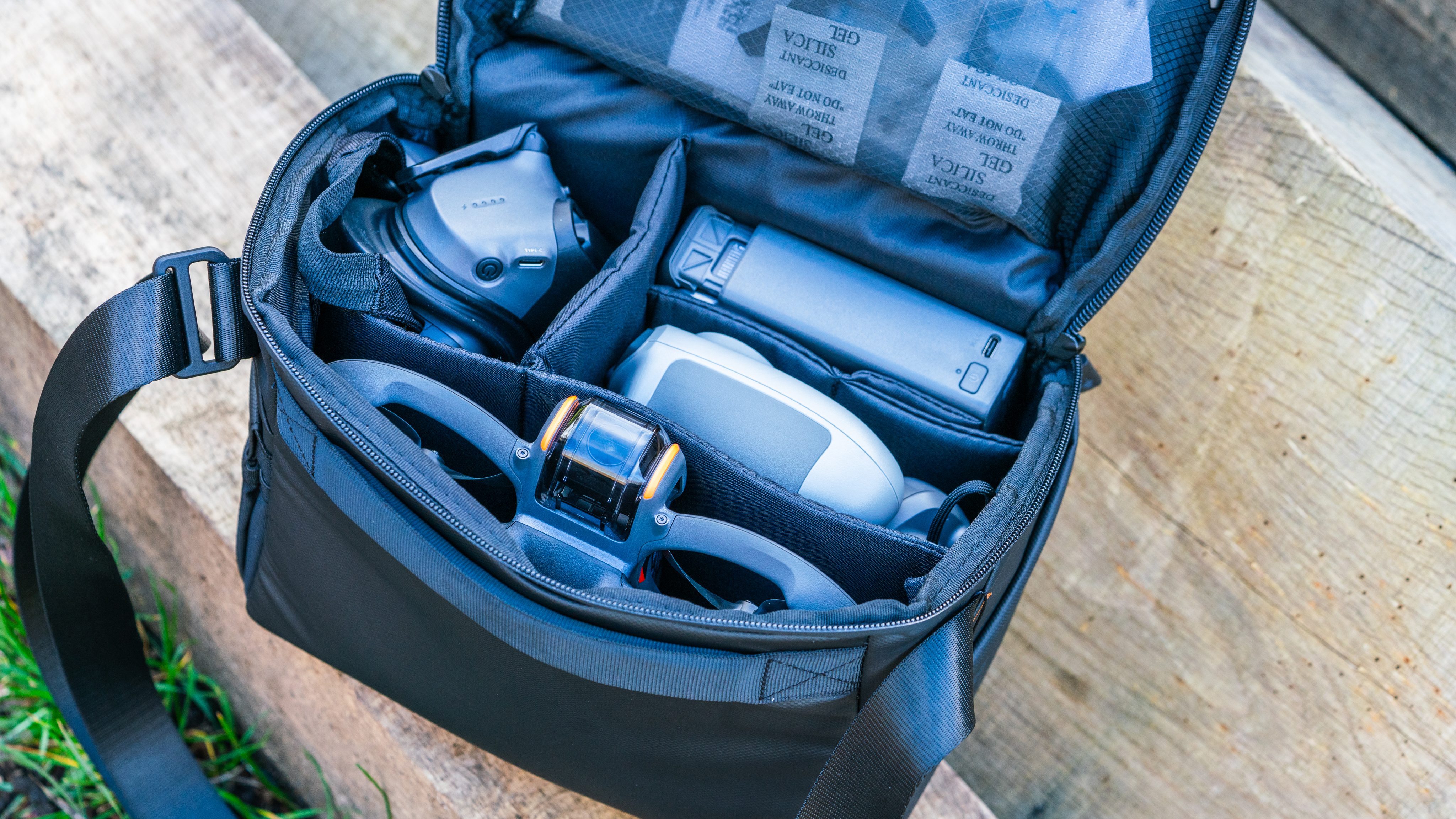
Specifications
Reasons to buy
Reasons to avoid
DJI Avata 2 sample images
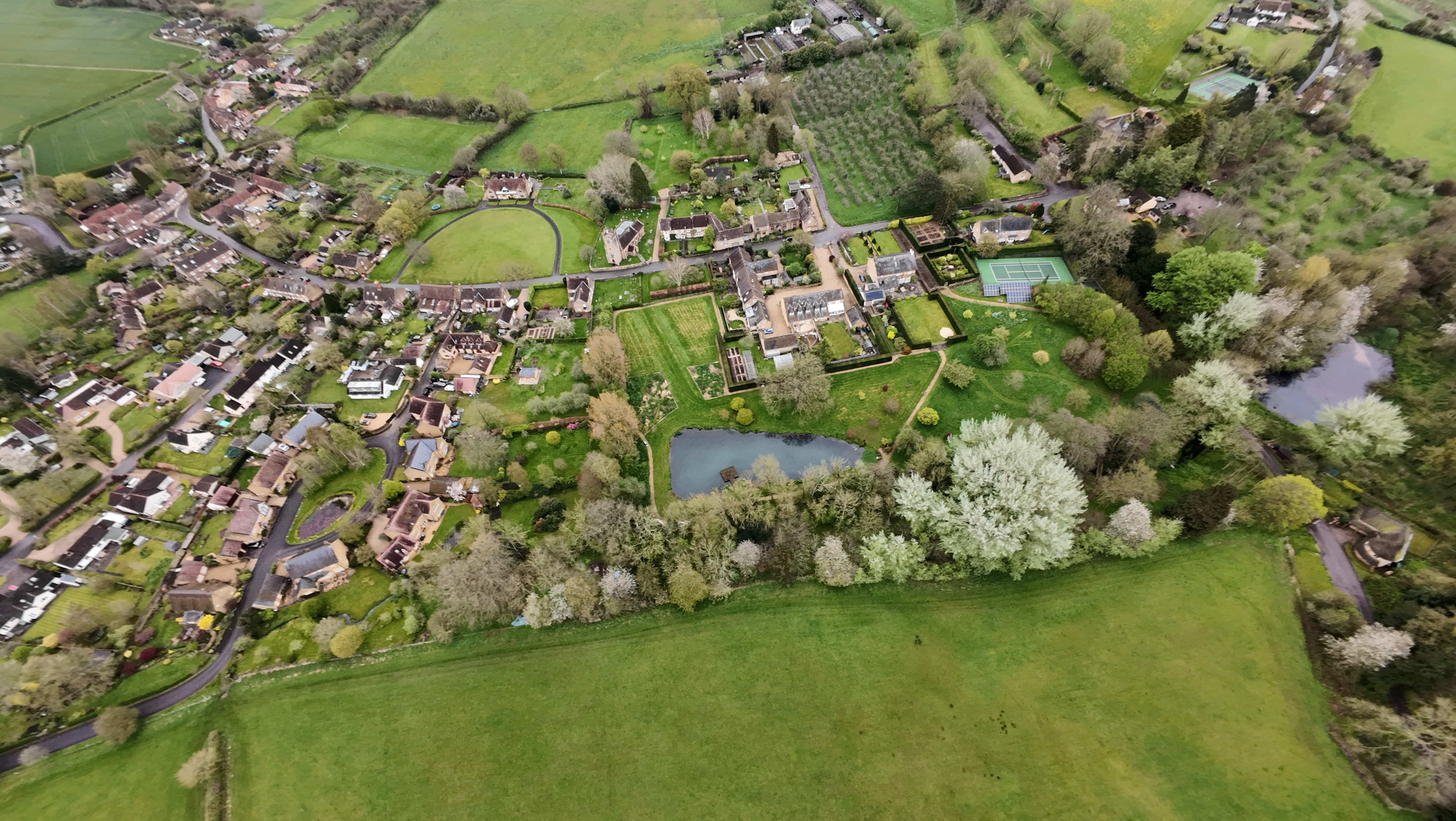
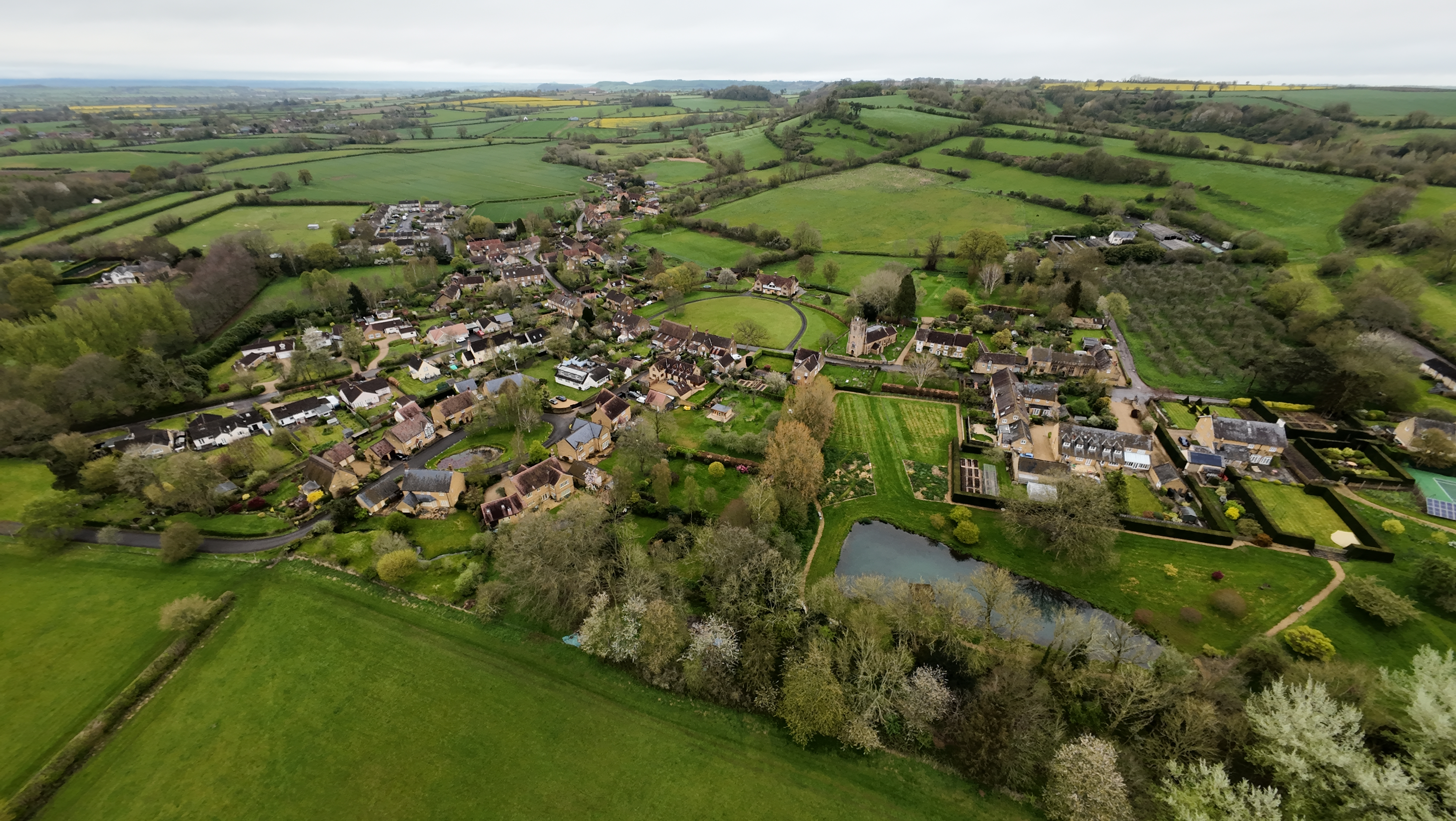
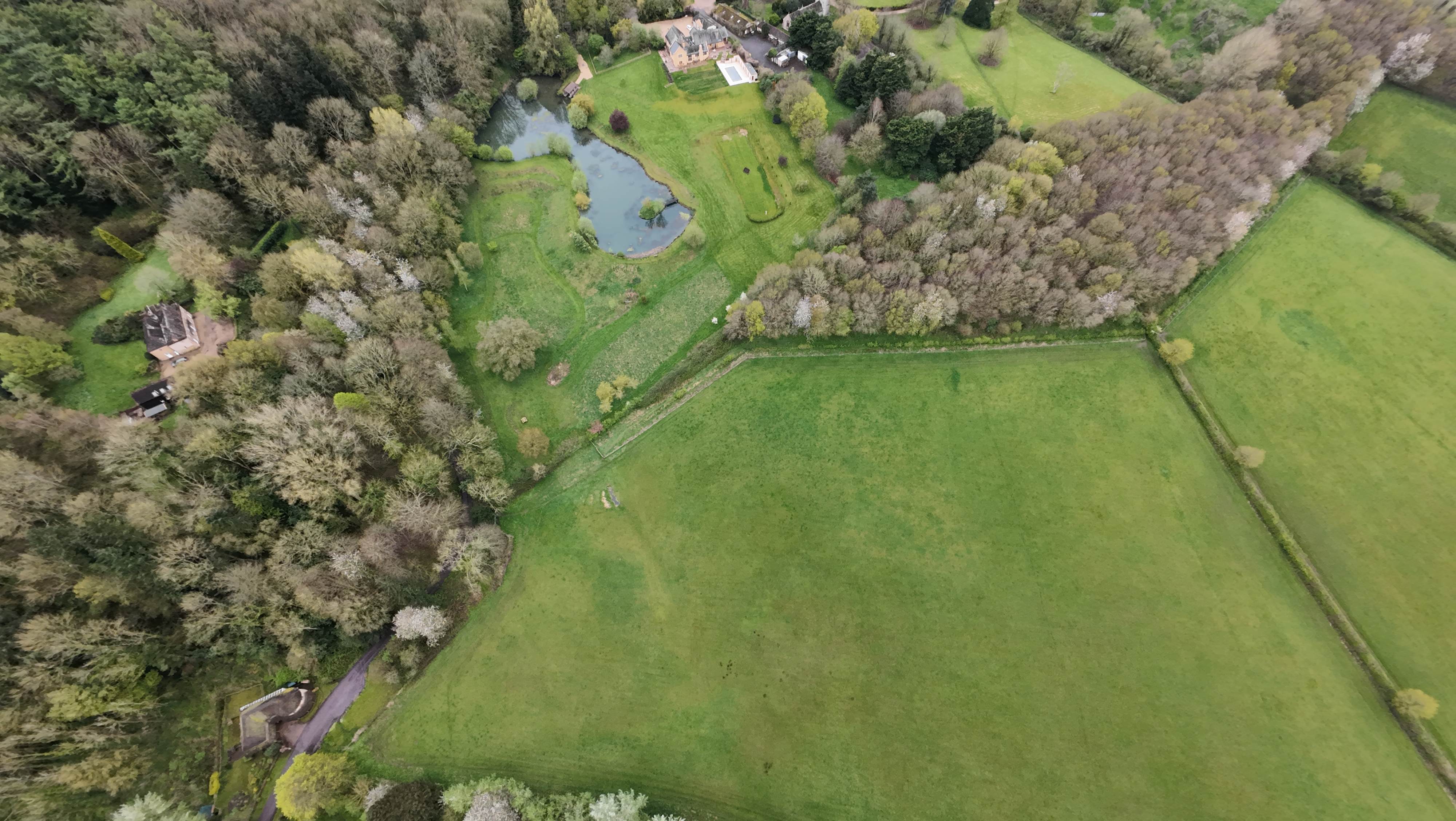
✅ You want a safe start to FPV: The Avata 2 offers all the thrills of first-person flight, with the reassurance of features like return to home.
✅ You want high-quality video: With better dynamic range than the original, the Avata 2 can record fantastic FPV footage.
❌ You're an experienced pilot: If you're familiar with freestyle drone flight, you won't need DJI's additional safety features.
❌ You have a limited budget: If you want a simple FPV kit to learn with, you might find better value from the BetaFPV Cetus Pro below.
The DJI Avata was already our favorite first-person drone, and the sequel only makes it better. If you’re looking for a forgiving route into the immersive world of FPV flight, we think the Avata 2 is a top choice. We found it intuitive to fly in our review, with the addition of an Easy ACRO mode making aerial maneouvres more accessible for beginners. The updated Motion Controller 3 is both simple to operate and precise enough for indoor flight – although experienced users will prefer the optional DJI Remote Controller 3 for fully manual flight.
The Avata 2 is longer, flatter and more aerodynamic than before. This helps it to achieve longer flight times of up to 23 minutes, and also makes it quieter than the original Avata. Thanks to an enhanced 1/1.3-inch CMOS sensor and 10-bit D-Log M support, we were able to shoot higher quality 4K/60p footage, with improved dynamic range revealing more detail in the shadows. Footage streamed to the upgraded DJI Goggles 3 also proved crisp, courtesy of a new video transmission system that makes it easier to spot potential obstacles.
- Read our in-depth DJI Avata 2 review
Top alternatives...
- BetaFPV Cetus Pro – if the Avata 2 cost is off-putting, then the BetaFPV Cetus Pro Kit is an excellent starting point. The kit costs a fraction and provides everything you need to learn how to fly in Acro mode. Also, the controller can be plugged into Mac or Windows-based computers to control FPV simulators and extend your flight practice time.
Best compact DJI alternative
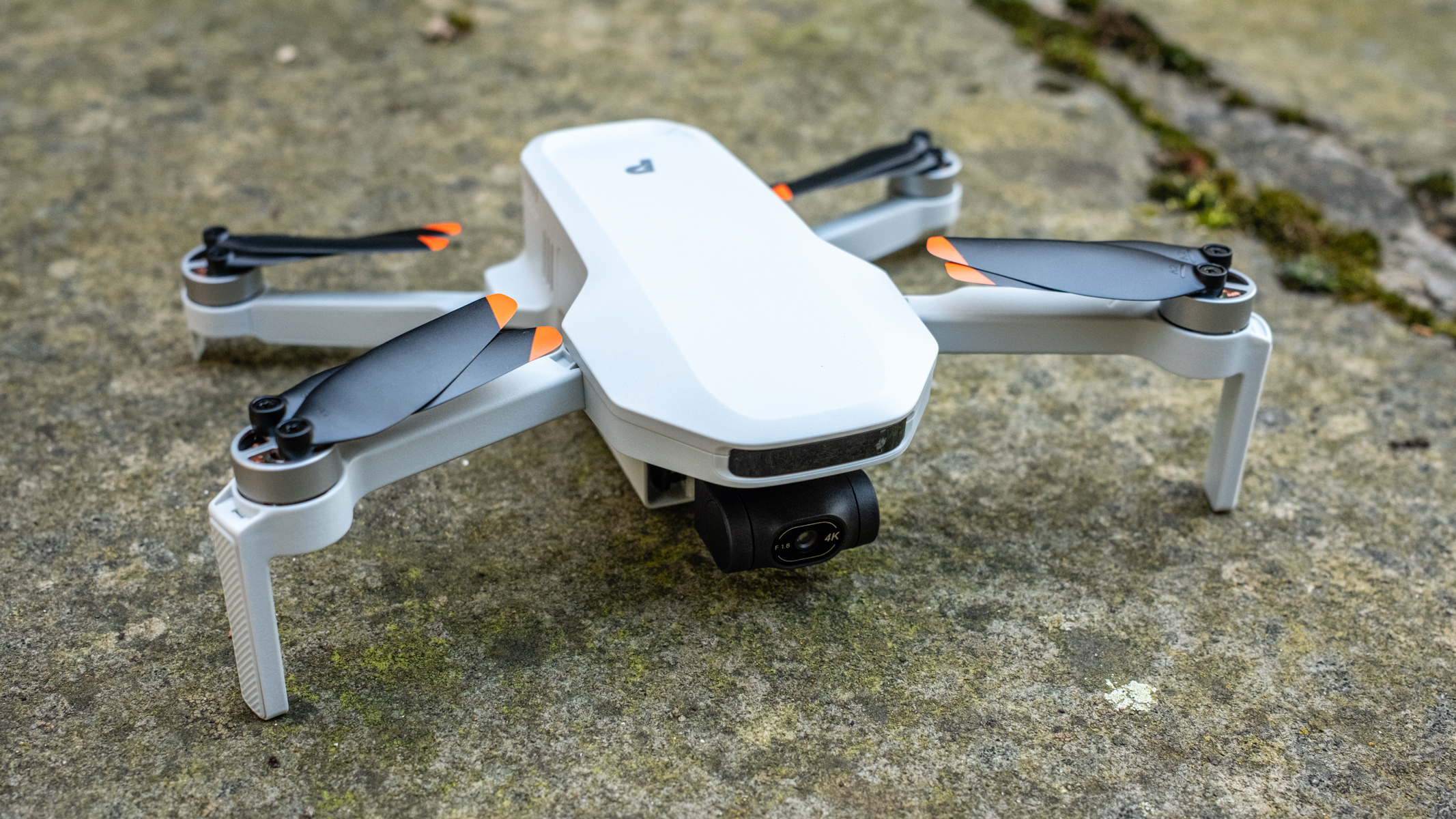
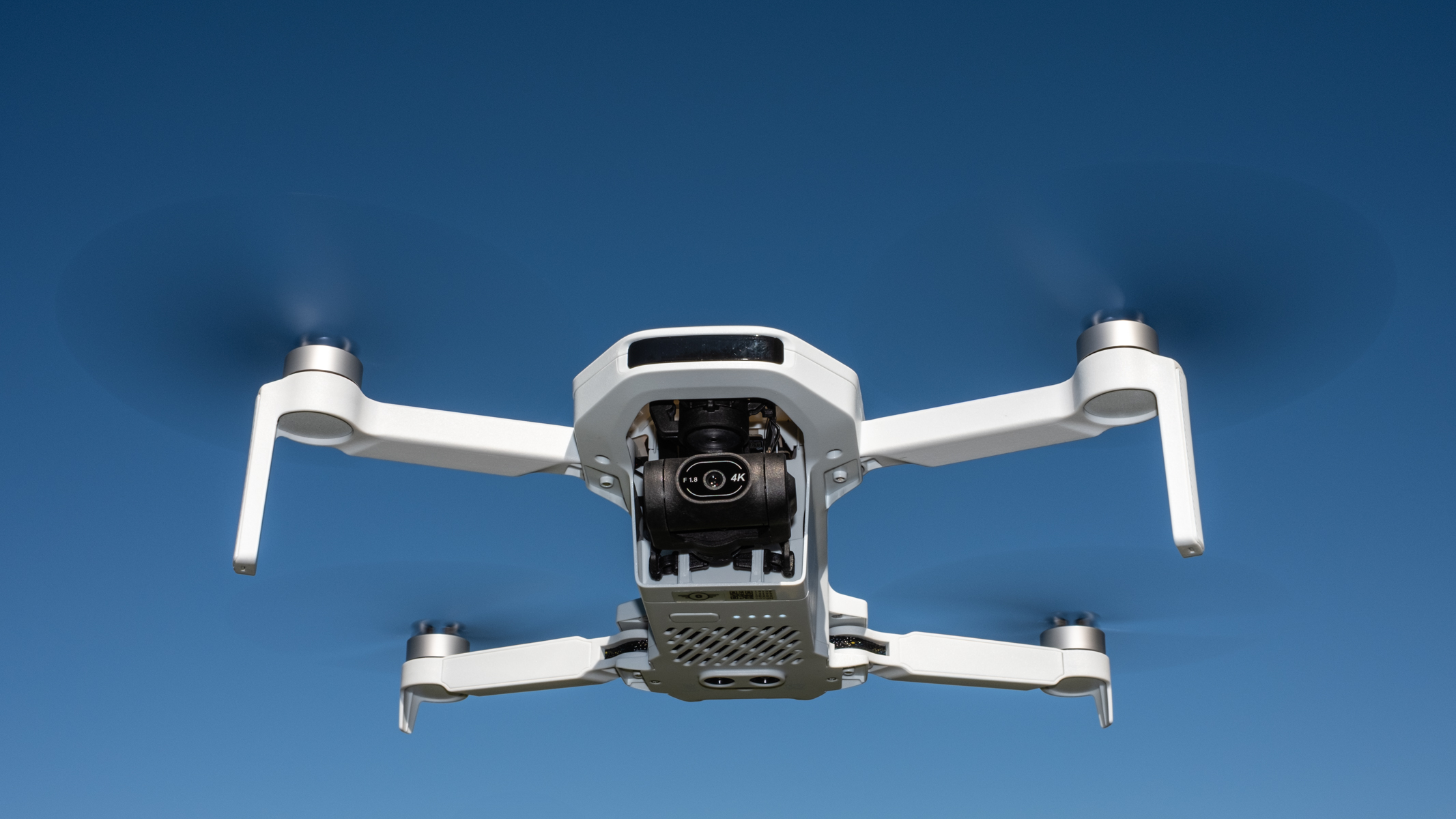
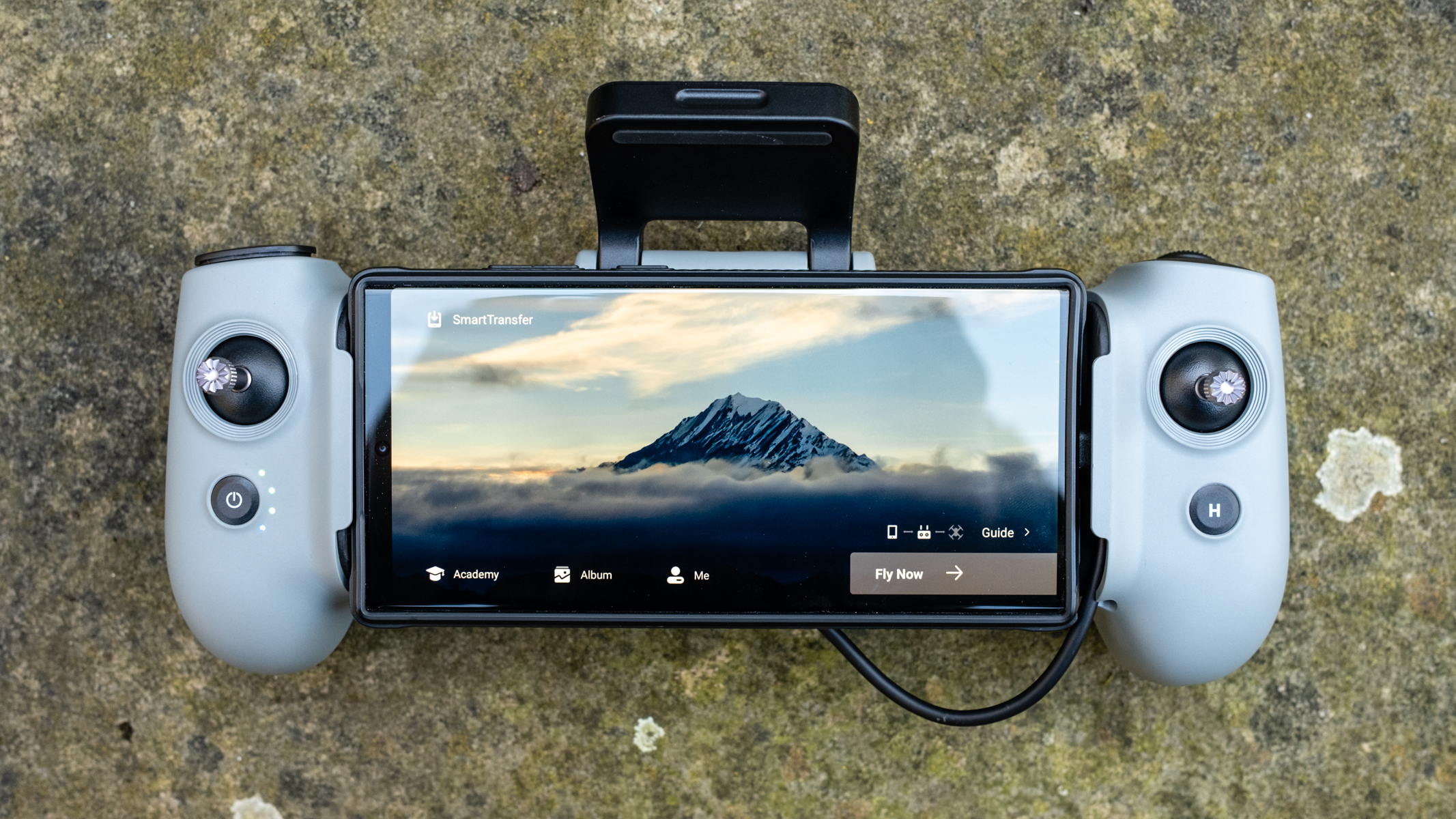
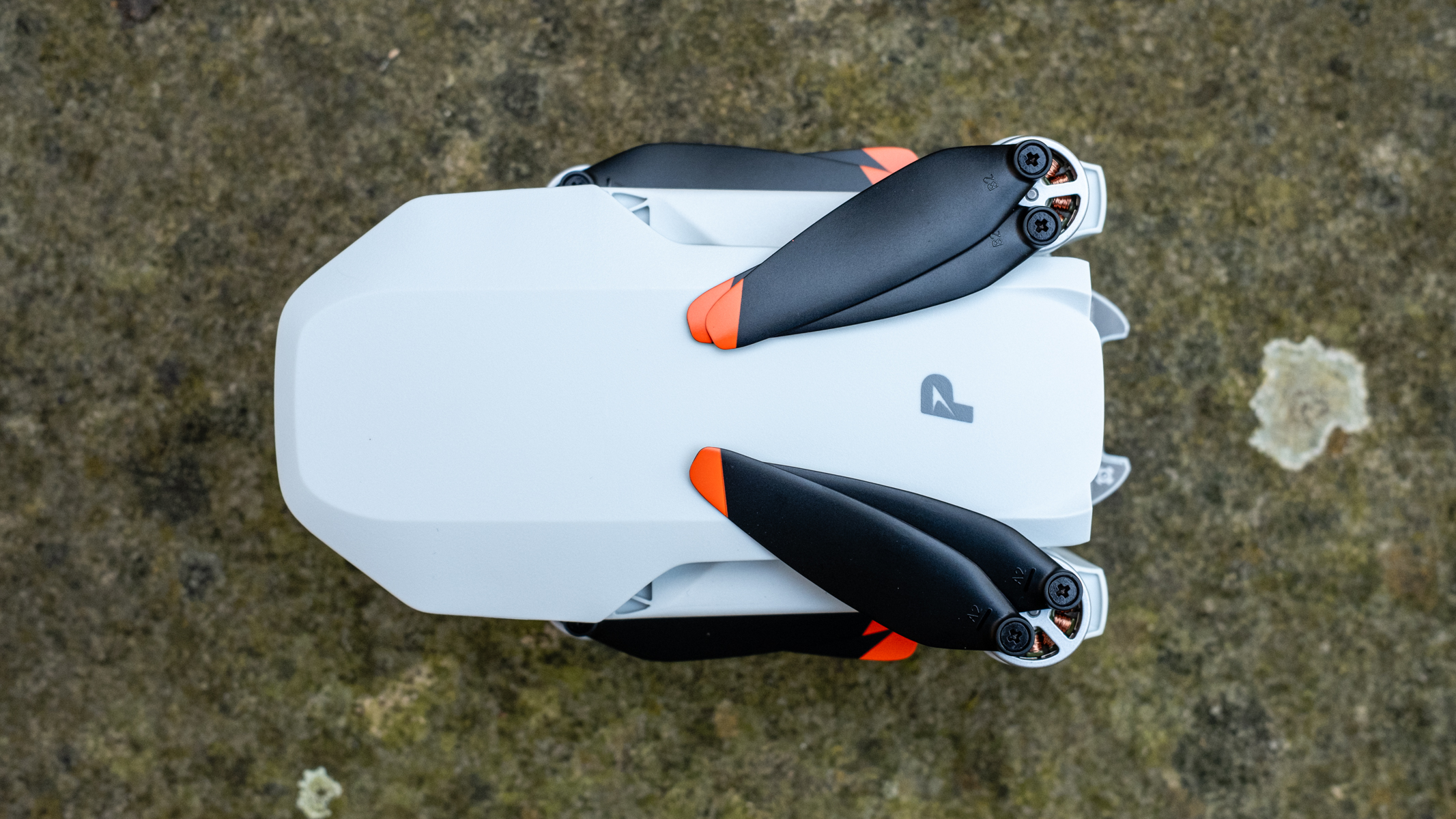
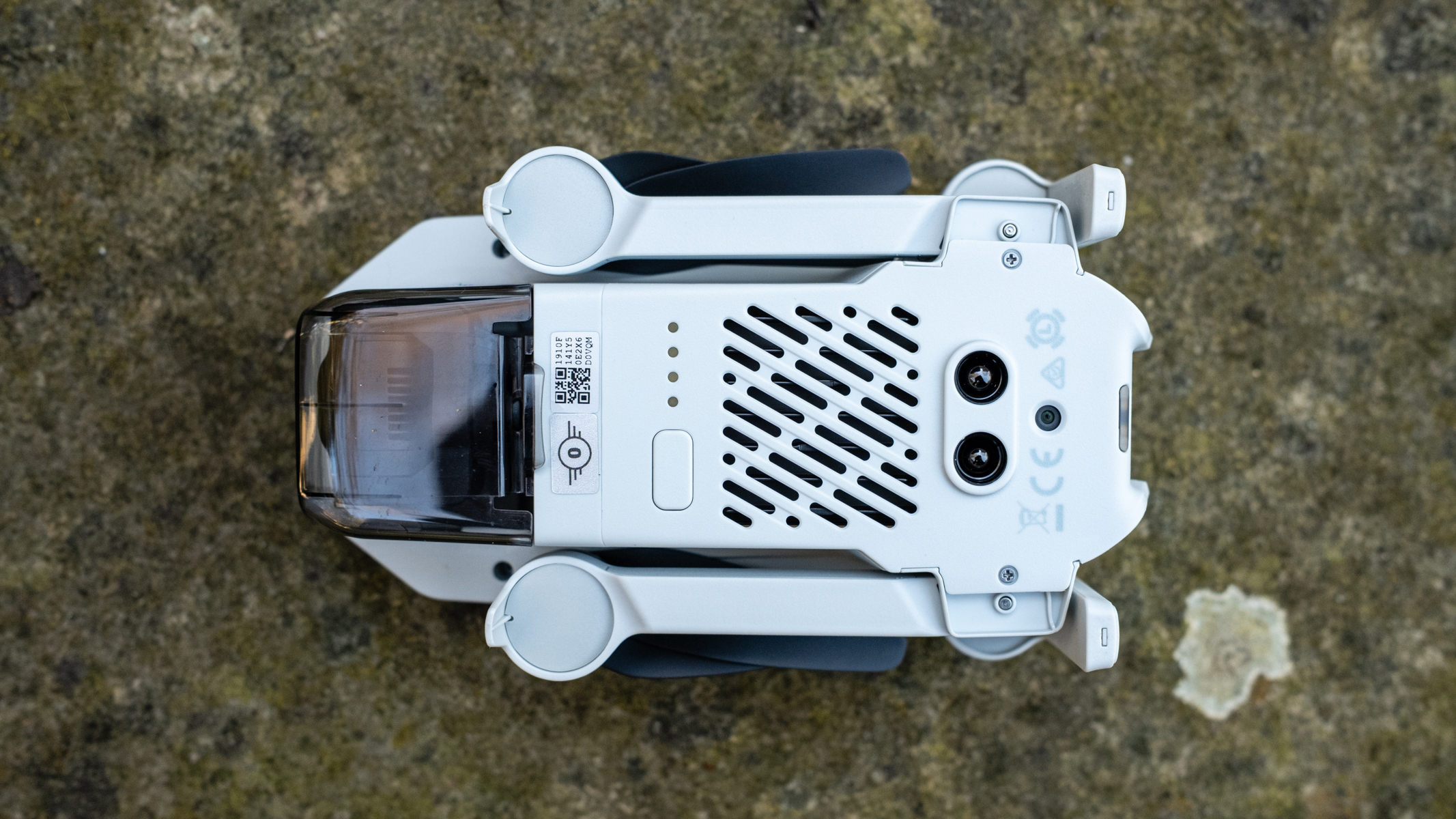
Specifications
Reasons to buy
Reasons to avoid
Potensic Atom 2 sample images
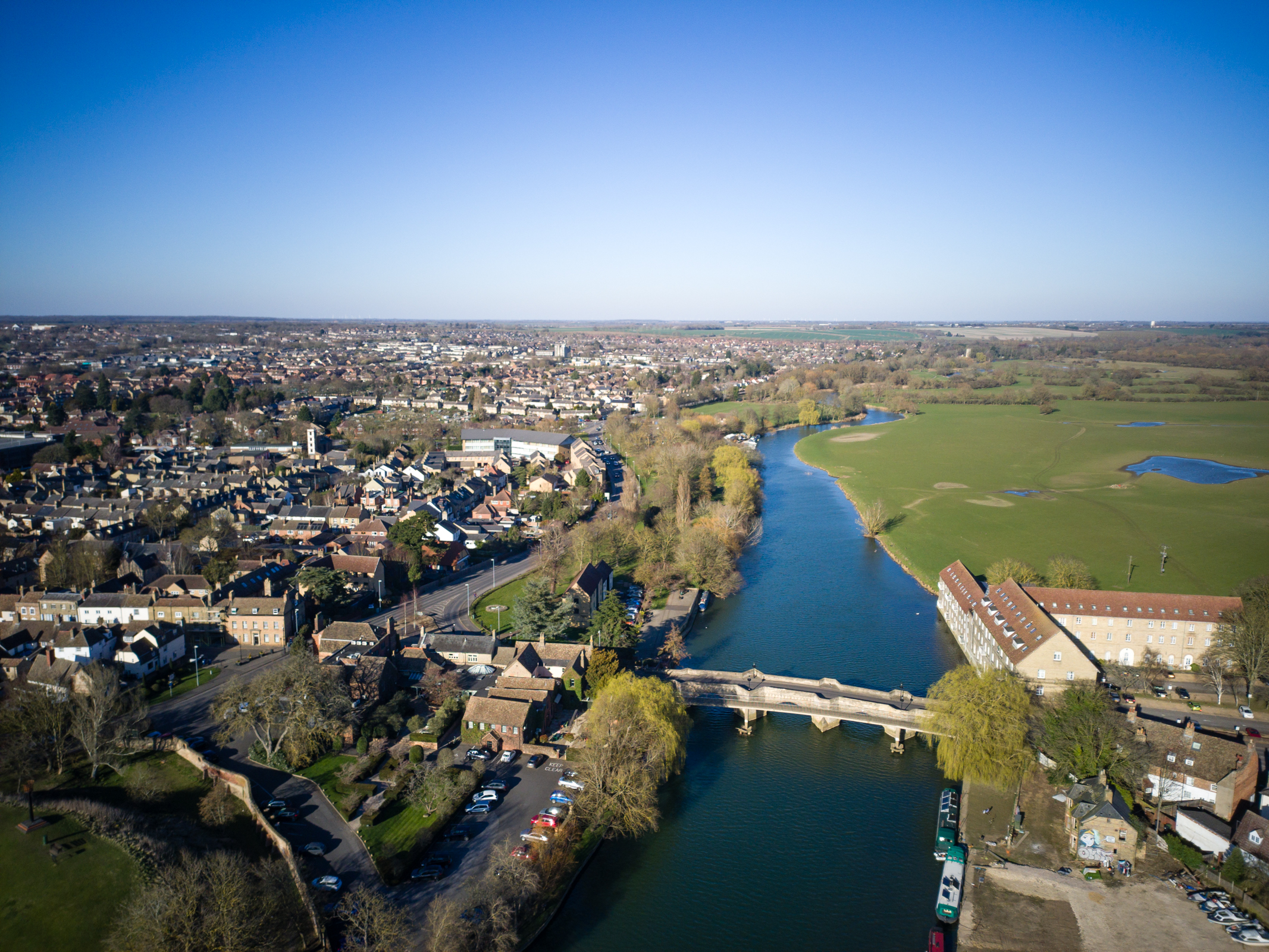
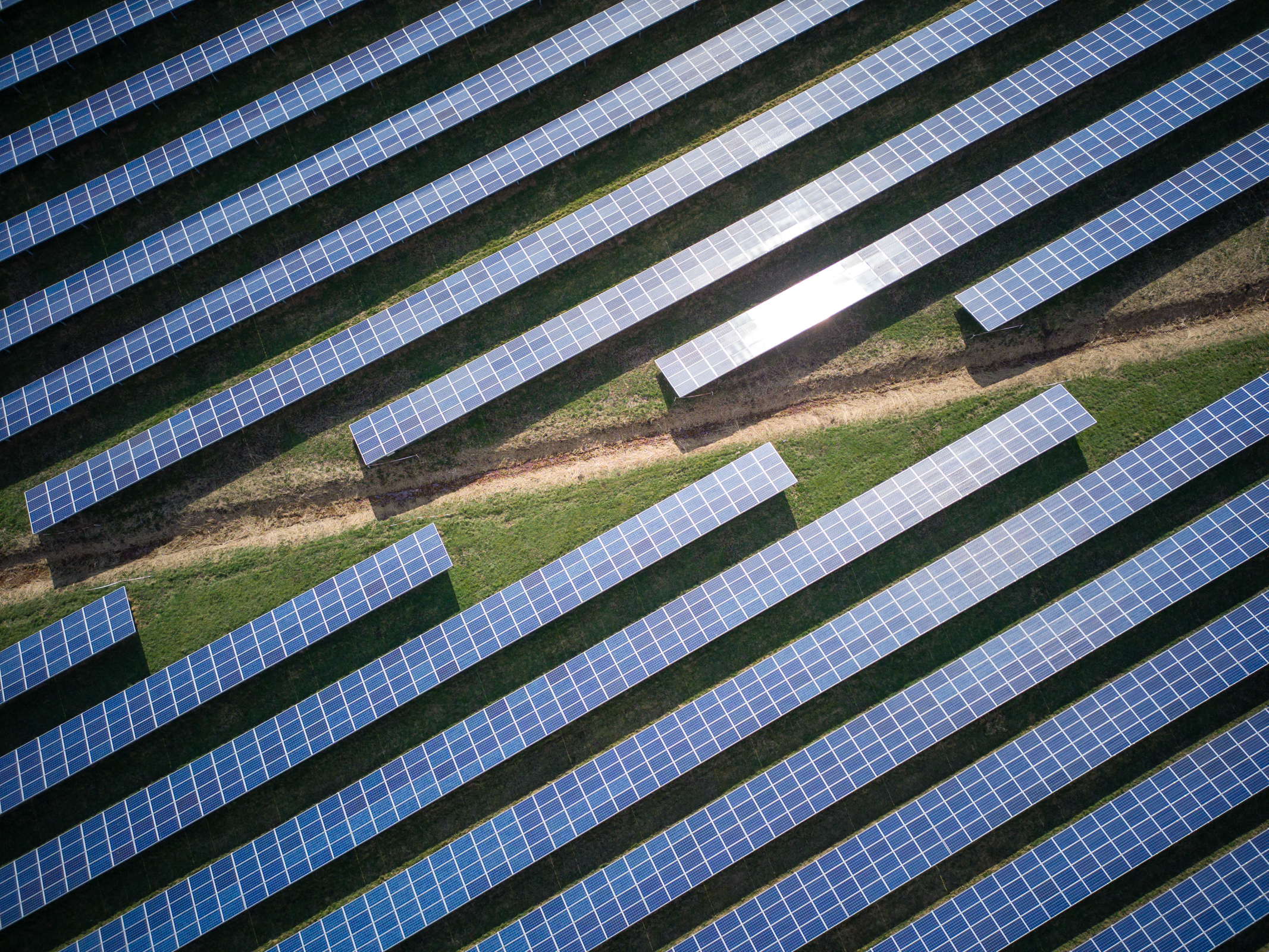
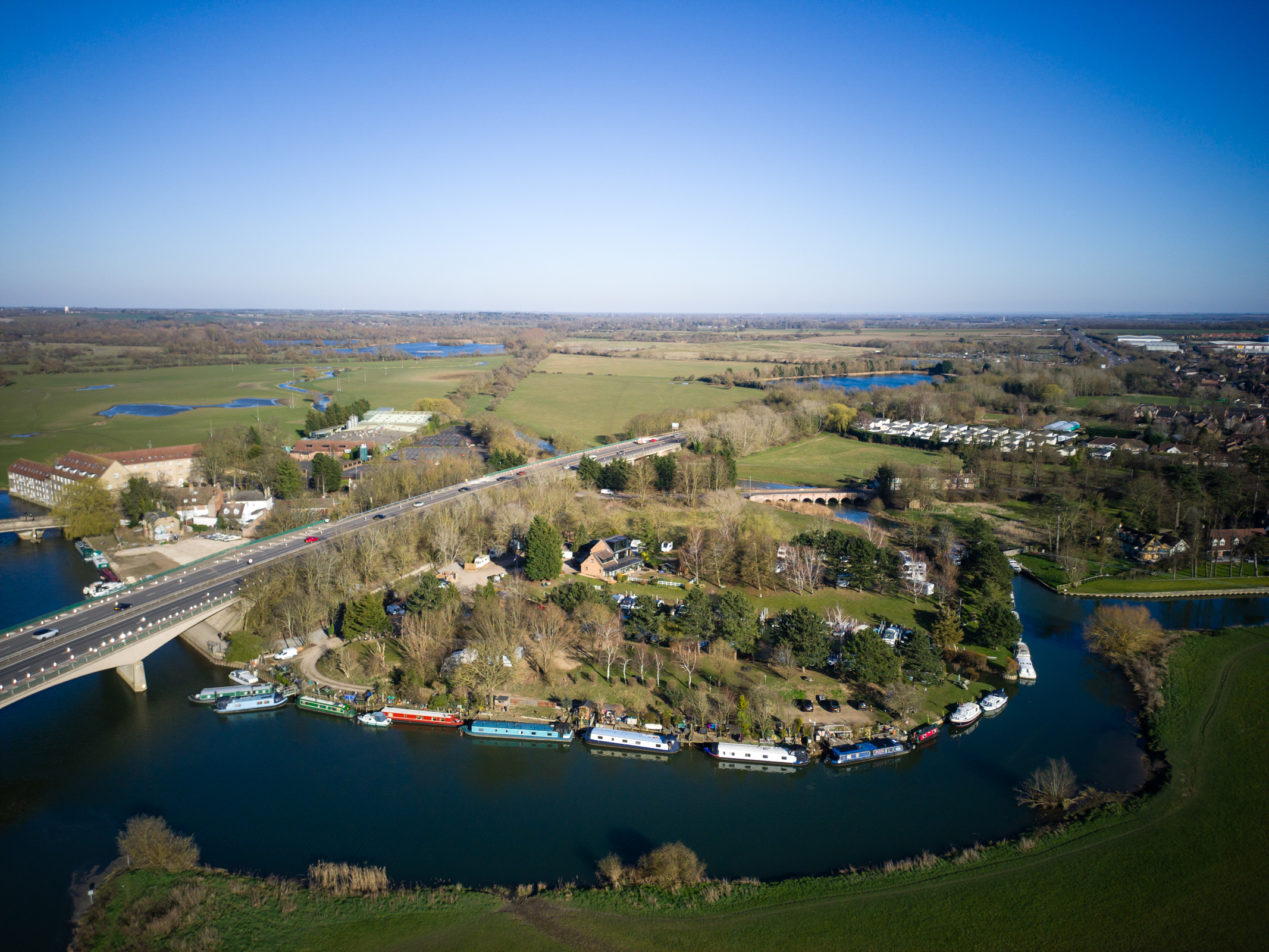
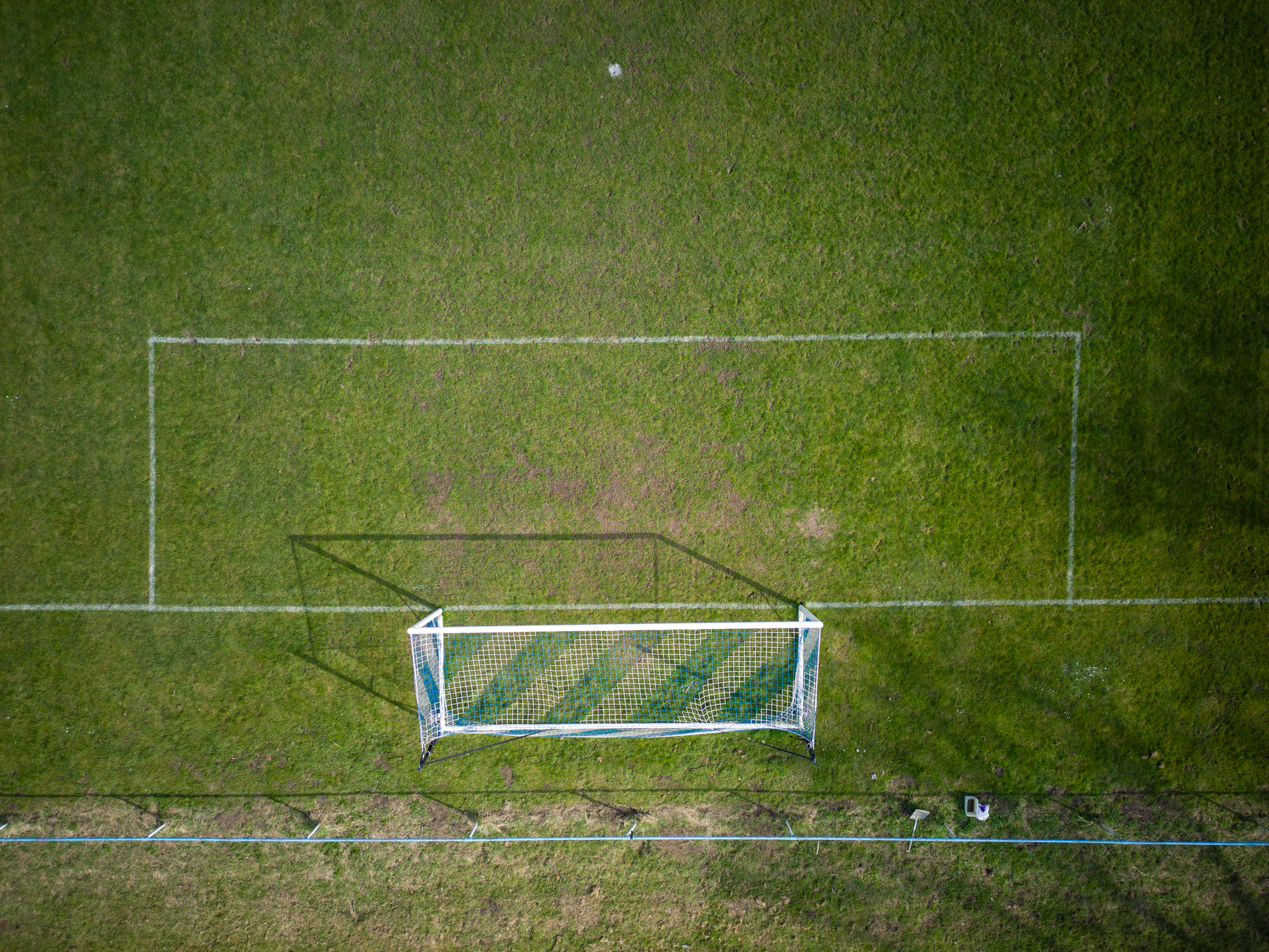
✅ You're a beginner on a budget: The Atom 2 is priced like the DJI Mini 4K but it comes with more flight features, making it one of the best sub-250g drones available.
✅ You want stablized 4K video: The Atom 2 shoots 4K video up to 30fps and its camera stabilized with a 3-axis mechanical gimbal – that's not something you easily find at this price point.
❌ You'd like advanced safety features: For safety features, the Atom 2 is more in line with the DJI Mini 4K, in that it lacks collision avoidance. That advanced feature only comes in pricier drones, like the DJI Mini 4 Pro.
❌ You want the most polished flying experience: As capable as the Atom 2 is, DJI drones even the Mini 4K feel like a more polished package overall.
If you're looking for your first drone and hoping for a DJI alternative with standard folding quadcopter design, we think the Potensic Atom 2 is the best model available. Tipping the scales under 250g, the Atom 2 sits in a largely restriction free drone category, and it goes toe-to-toe with the DJI Mini 4K. In some regards, it even surpasses the Mini 4K, all while representing five star value.
In testing we loved the Atom 2's complete feature set, which includes a 3-axis gimbal-mounted camera which can shoot stabilized 4K video up to 30fps – video quality is excellent, and includes sticky subject tracking, which is especially impressive at this price point, plus an array of DJI-style Quickshots flight moves, ready at the push of a button for next-level aerial moves. Aerial photographers are equipped with 12MP stills in Raw & JPEG formats too, although at the time of writing 48MP stills are JPEG only.
There are further photograpghy and video modes to sink your teeth into, such as an interval timer for capturing timelapse videos. The Atom 2 wasn't fully armed at launch – Potensic said it's adding further improvements like Log color profile – these are flat profiles that get the most possible detail from a scene, but need color grading afterwards. Overall, the Potensic Atom 2 is a majorly impressive beginner drone at an attractive price point – if DJI doesn't work for you for whatever reason, Potensic has proved to be an excellent alternative.
Read our in-depth Potensic Atom 2 review
Top alternatives...
- Holy HS900 – besides Potensic, Holy Stone is another top DJI alternative, and it peaked in 2024 with the sub-250g beginner HS900. We're missing RAW format stills, but otherwise the HS900 has an impressive feature set considering its price.
Also consider glossary
We've reviewed numerous other drones which didn't quite make the above cut. I put suitable alternatives for each entry, and have rounded up these honorable mentions, plus a couple of additions, below:
Best value camera – DJI Mavic Classic: If you want a simple and good value camera drone with the class-leading image quality, then the Mavic Classic is a top pick, thanks to its superb Hasselblad 20MP 4/3 camera.
Best for aerial photographers in the US – DJI Mavic 3 Pro: With the Mavic 4 Pro currently unavailable in the US, advanced pilots in this region looking for the ultimate versatile camera experience are best served by the triple camera Mavic 3 Pro, with its 28mm main camera, plus two telephoto cameras.
Best for professionals – DJI Inspire 3: 6x the price of the Mavic 4 pro, the Inspire 3 is a professional drone for creative and industrial use.
Best cheap DJI – DJI Neo: The Neo is DJI's smallest and cheapest drone ever. It's also one of the most exciting: it takes off from your palm with no need for a controller, plus it's equipped with AI subject tracking and face recognition. It can also be controlled with your phone using DJI's Fly app.
Best for multiple flight controls – DJI Flip: If you like the sound of the Neo, then the Flip is the next level up, with superior flight times and performance, plus its unique folding propellor design.
Best beginner FPV kit – BetaFPV Cetus Pro Kit: A complete yet affordable FPV kit, we think the BetaFPV is the best way for beginners to try first-person drone flight, complete with goggles and controller. Delivered ready to fly, the drone itself is incredibly light, yet also tough enough to withstand reasonable impacts.
Best DJI rival overall* – Autel Evo Lite+: As the flagship flying machine from Autel’s latest line-up of DJI rivals, the Evo Lite+ goes directly up against the Air 3S. Capable of shooting 5.4K footage at 30fps using a 1-inch sensor, it shares a remarkably similar spec sheet. But it also both leapfrogs the Air 3S and the Mavic 3 Pro with its 40-minute flight time and adjustable aperture (ranging from f/2.8 to f/11).
Best DJI Mini 5 Pro alternative* – Autel Evo Nano+: DJI's Mini 5 Pro is my top pick in the sub-250g category, but if you want a compact drone from an alternative manufacturer, the colorful Evo Nano+ is a decent choice. With a big sensor and bright lens, our tests found that its camera performance trumps the older DJI Mini 3, particularly in low-light situations.
*Autel recently discontinued its Lite and Nano series of consumer drones. There's limited stock remaining and they could still prove to be solid purchases, but any further firmware updates or after-sales support will cease beyond 2031.
Upcoming drones
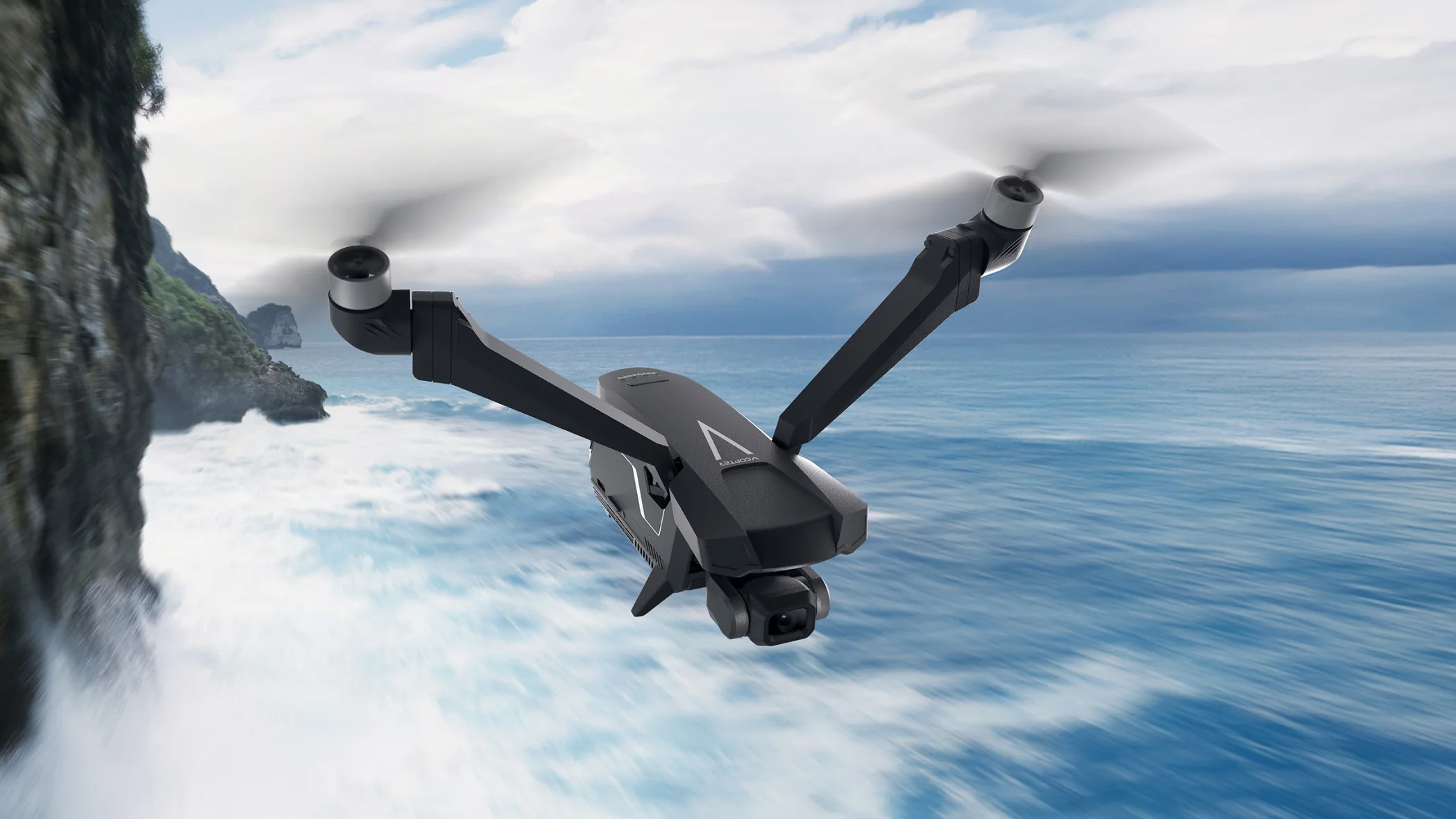
There are three very exciting drones that we already know about, but are not available yet and we're yet to complete our in-depth reviews. They are the following:
V-Copter Falcon Mini
Zero Zero Robotics's V-Copter Falcon Mini is a neat-looking bi-copter that could challenge DJI's supremacy in this market, with its unique twin propellors that its makers claim to deliver unrivalled flight agility.
Antigravity A1
The world's first true 360 drone is the Antigravity A1. The new brand is incubated by Insta360 and we've had an A1 hands-on already ahead of its anticipated Q4 2025 launch.
HoverAir Aqua
How about another first – the HoverAir Aqua from the makers of my favorite selfie drone, the X1 Pro? The Aqua is the first waterproof camera drone, which is set to be a leading choice for water-based action.
Once our full reviews are complete, we'll determine if any of these three drones merit a place in this guide – all of these models are unique to anything that DJI currently offers.
TechRadar also has its ear to the ground for the latest drones news, too, which means we usually know what models are on the horizon before they are launched. Of course, there's no guarantees with drone rumors, but there are prolific and oft reliable leakers who tease out product details in the build up to launch – we often cover these news stories.
At the time of writing, the DJI Neo 2 is seemingly the most likely, being tipped for a 2025 launch.
How to choose the best drone for you
How to choose the best drone for you
Budget
When choosing your ideal drone, budget is the obvious place to start. Flagship drones usually benefit from the largest sensors, highest video resolutions and latest pro-grade features, but these will usually set you back thousands. You’ll often find the best value by looking in the middle of the range, where models like the DJI Mini 4 Pro balance price, portability and performance. If you’re a novice in search of an affordable drone to get started, the Ryze Tello offers a decent experience for just $99 / £99.
Weight
Keep size and weight in mind. Many of the drones above can be folded down to fit in a backpack, which makes them easier to travel with. Larger drones are less portable but tend to be more stable in the air. Any drones that weigh more than 250g attract registration requirements (see below). Drones under 250g, such as DJI's Mini-series are, essentially, restriction-free.
Flight features
Beginner fliers should consider drones with safety features like obstacle avoidance, which help to prevent mid-air collisions. Automated flight modes also make it easy to pull off set-piece manoeuvres without the need for professional flying skills. Similarly, drones with a follow-me mode take the effort out of tracking a subject.
Controllers
Most drones allow you to use a smartphone as a controller, usually by inserting it into an included handset. If you’re a seasoned pilot with specific control requirements, it’s worth checking what remotes are compatible with a given model. Factors such as flight time, range and speed can also be crucial, depending on how you plan to fly.
Video
If you plan to shoot aerial photos and videos, it’s worth thinking about how you plan to use your images. If you’re shooting to share on social, you might be happy with stabilized Full HD footage. But if you’re producing a short film or even working commercially, you should look for a drone with a large sensor that’s capable of recording 4K footage, with support for color profiles for greater editing flexibility.
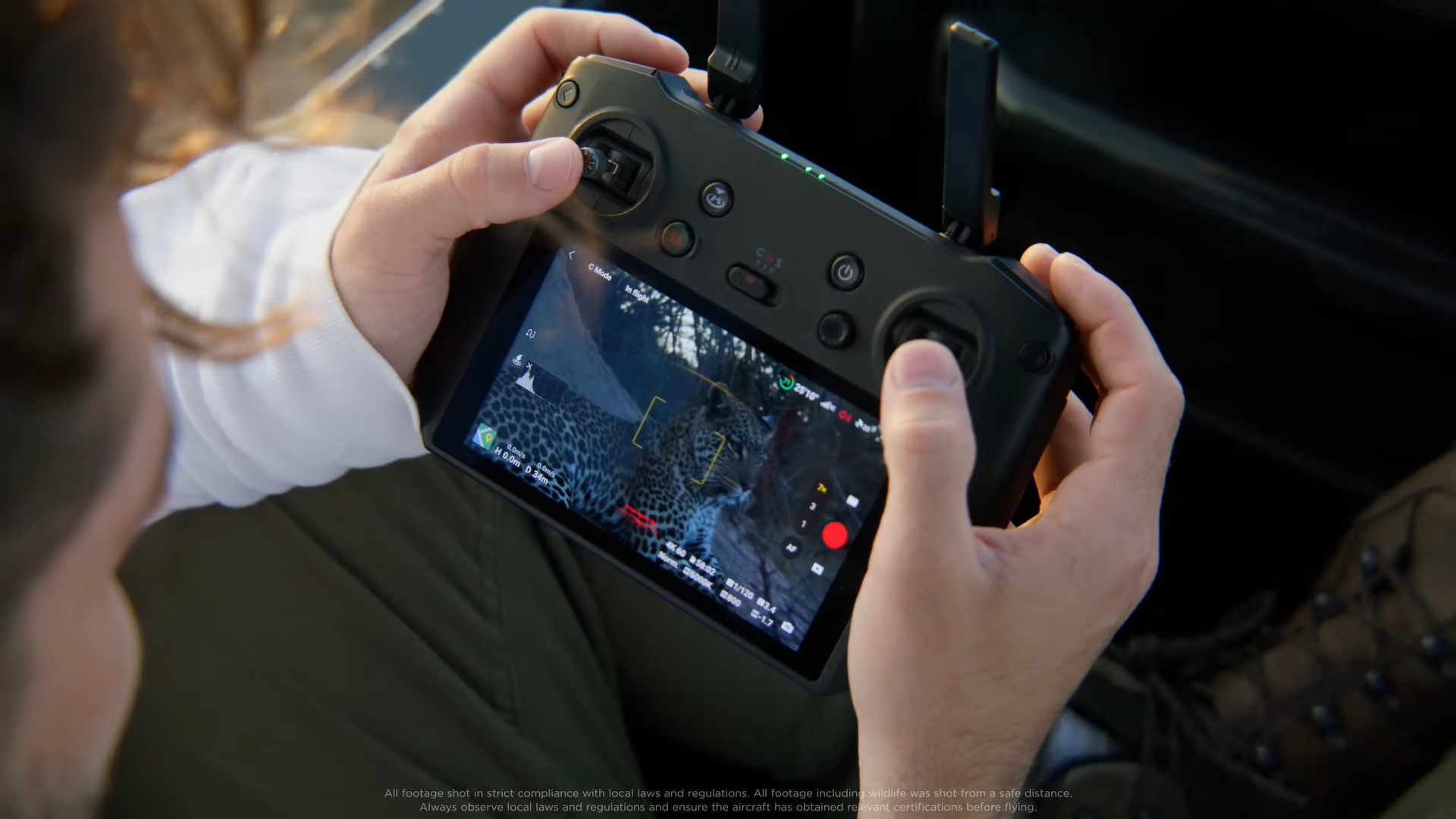
What are the types of drones?
There are several types of drones, and overall among categories.
Folding quadcopters
Possibly the most popular type of drone is a folding quadcopter. With four propellors and a compact fold-away design, these drones are usually equipped with a decent camera and handy flight moves. These are the best all-rounder drones.
FPV
First person view drones are designed for the thrill of flight over camera performance, delivering unrivalled flight speed and agility. These racing drones are designed to be used with a headset for a truly immersive flight experience, just don't expect to record hollywood-grade videos with them.
Selfie drones
HoverAir introduced a new kind of drone, the X1, which is designed to keep you or your subject in the center of the action. Armed with propellor guards, typically tiny and with limited power, selfie drones are great for short video content where a selfie stick doesn't cut the mustard. DJI followed HoverAir with the Neo.
Other types
Not all drones feature four propellors – take the V-Copter Falcon series of bi-copter drones. The propellors sit in a V shape above the drone for what its makers say is better agility and acceleration than quadcopters. We're looking to test these drones when they are available. Then there's the Antigravity A1 – a true 360 degree drone, plus the HoverAir Aqua – a waterproof drone that can take off from / land in water.
What are laws around flying a drone?
• Laws vary from region to region
• Sub 250g drones are usually regulation-free
• You must check for flight restrictions, such as minimum distance from people
Drone laws exist to ensure a high level of safety in the skies, especially near sensitive areas like airports and national parks. They also aim to address privacy concerns that arise when camera drones fly in residential areas.
In several regions, such as the United States, drones weighing less than 250g are exempt from registration with civil aviation authorities. While registration might not be mandatory, it’s still necessary to follow local drone laws. This includes the requirement to keep your drone within sight at all times when airborne.
Different countries have different rules. Previously, in the UK, drones weighing less than 250g were exempt from registration. This has changed: owners of any camera-equipped drone must now register their aircraft with the Civil Aviation Authority and obtain an Operator ID. This registration carries an annual fee of £11 for individuals aged 18 and above.
If your drone exceeds 250g in weight, you will also require a Flyer ID. To obtain this, you need to pass an online test featuring 40 multiple-choice questions. The answers can be found in the Drone Code and are intended to promote safer flying practices. There's also the matter of an A2 Certificate of Competency, another test which typically costs £100 to complete.
As of January 2026, drones weighing less than 100g without a camera, are exempt from either ID requirements. That said, you still need to comply with the UK’s drone laws. According to the Drone Code, this means maintaining visual contact with your drone, flying no higher than 120m above the ground, staying at least 150m away from populated areas, and avoiding restricted airspace, typically found near airports.
DJI's Mini 5 Pro threw the cat among the pigeons with its 249.9g take off weight, ±4g. Check out what drone regulators told us about using the Mini 5 Pro.
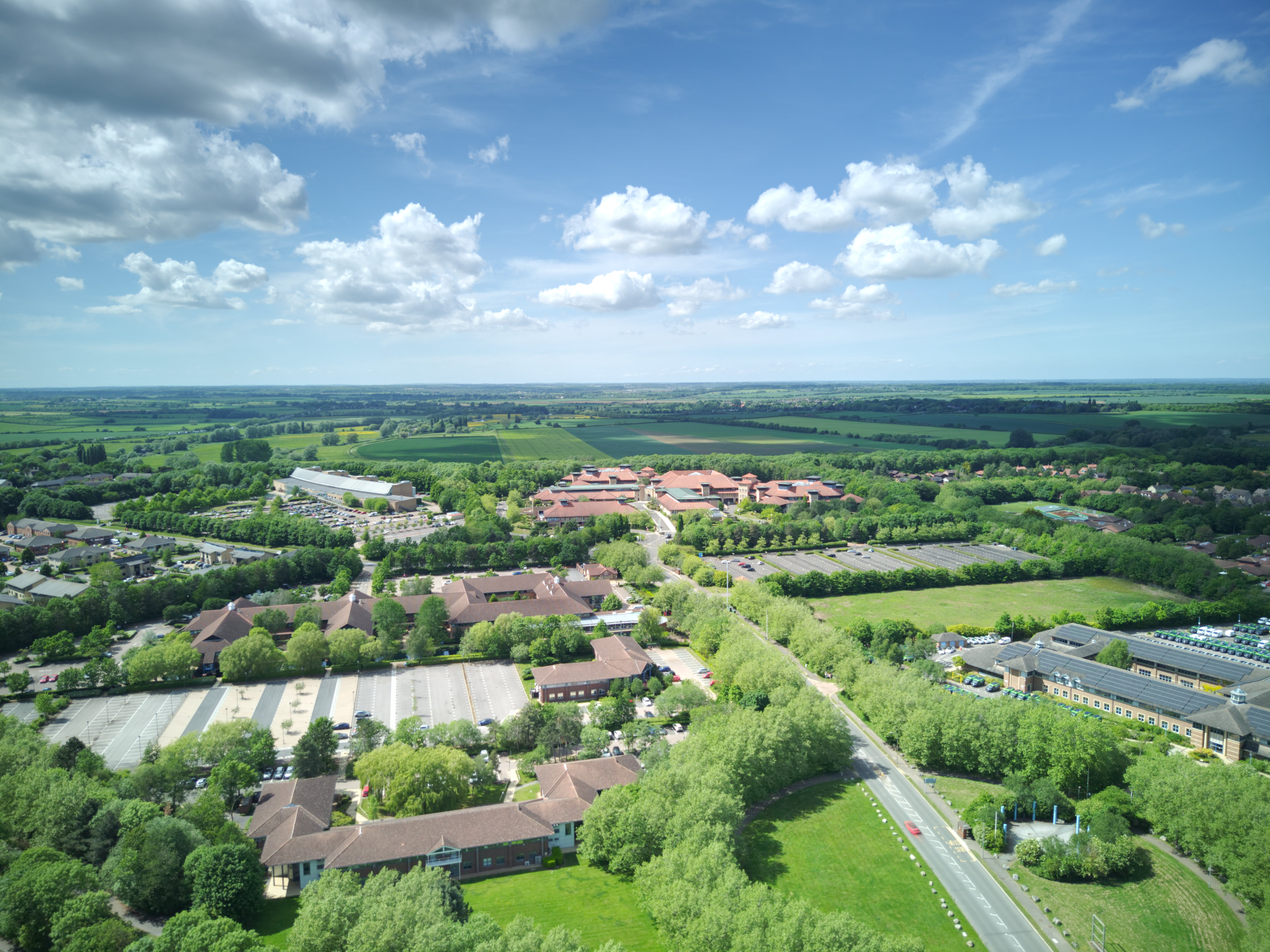
Are DJI drones illegal in the US?
• Some DJI drones are still sold in the US
• Recent models are not available
• There's still no outright ban
In December 2020, the US government placed Chinese drone maker DJI on its ‘Entity List’ – the same trade blacklist that Huawei landed on in 2019. It is now prohibited for US federal agencies to purchase or use DJI drones, and several states have banned their use by government agencies.
In 2024, it looked like a ban was being extended to consumer drones too, but at the time of writing, a DJI drone ban hasn't come into effect.
That means it’s still perfectly legal for private customers to buy and fly DJI drones in the US, even with uncertainty if DJI will be banned from selling its products on the consumer market.
Another factor that could affect DJI drone availability in the US is heavy tariffs place on Chinese imports. Again, at the time of writing, big retailers like Amazon are still selling the company’s existing drones as usual.
That said, we could finally be at a tipping point – DJI's Mavic 4 Pro and DJI Mini 5 Pro drones have not been launched in the US yet. Will consumers in the US miss out on future models?
The decision of whether or not to buy DJI drones is a personal one, but we are very happy to continue recommending its flying cameras. DJI itself has strongly refuted the US blacklist decision, saying it “has done nothing to justify being placed on the list”. It has also stated that “DJI is not a military company in China, the United States or anywhere else.”
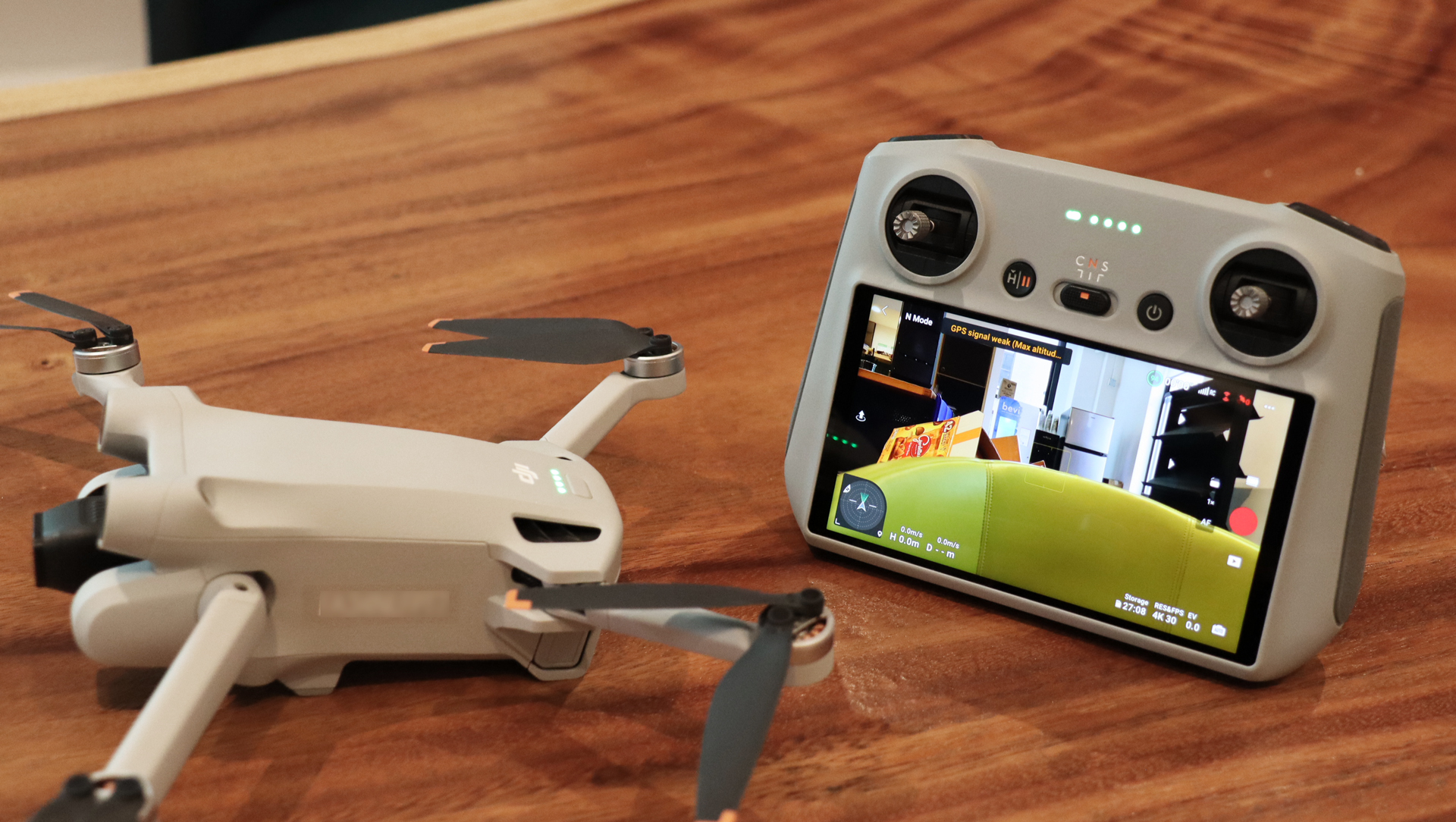
Who makes the best drone?
• DJI is easily the leading drone maker, and best value
• Skydio and Autel no longer make consumer drones
• New rival brands are popping up with unique alternatives
For many years, DJI has been the standout brand for drones with cameras. And while that continues to be the case, the Chinese company has come under fire in recent times – both from increased competition and run-ins with the US government. This hasn’t changed our opinion of whether or not you should buy a DJI drone (as you can read above), but it is good to finally see some healthy competition in the drone space.
In the US, Skydio became a standout brand for obstacle-avoidance powers, which make it a strong contender for those who need ‘follow me’ functionality. Sadly, Skydio recently closed its doors and is no longer in the consumer drone business, as is the case more recently with Autel, another Chinese drone brand whose Evo Lite+ scored five-stars in our review. That's two less rivals for DJI to worry about.
So are there any real DJI rivals at all? Yes! Potensic released an excellent DJI Mini 4K alternative for beginners, the Potensic Atom 2. Other brands are spotting gaps in DJI's lineup to offer something unique; HoverAir makes the best selfie drones, like the X1 Pro, Antigravity is about to release the A1 which is the world's first 360 drone, and the Cetus X is a superb FPV drone for beginners.
For now, we still think DJI is the best overall brand for drones, but there are now lots of alternatives, particularly if you have a specific use case for a flying camera.
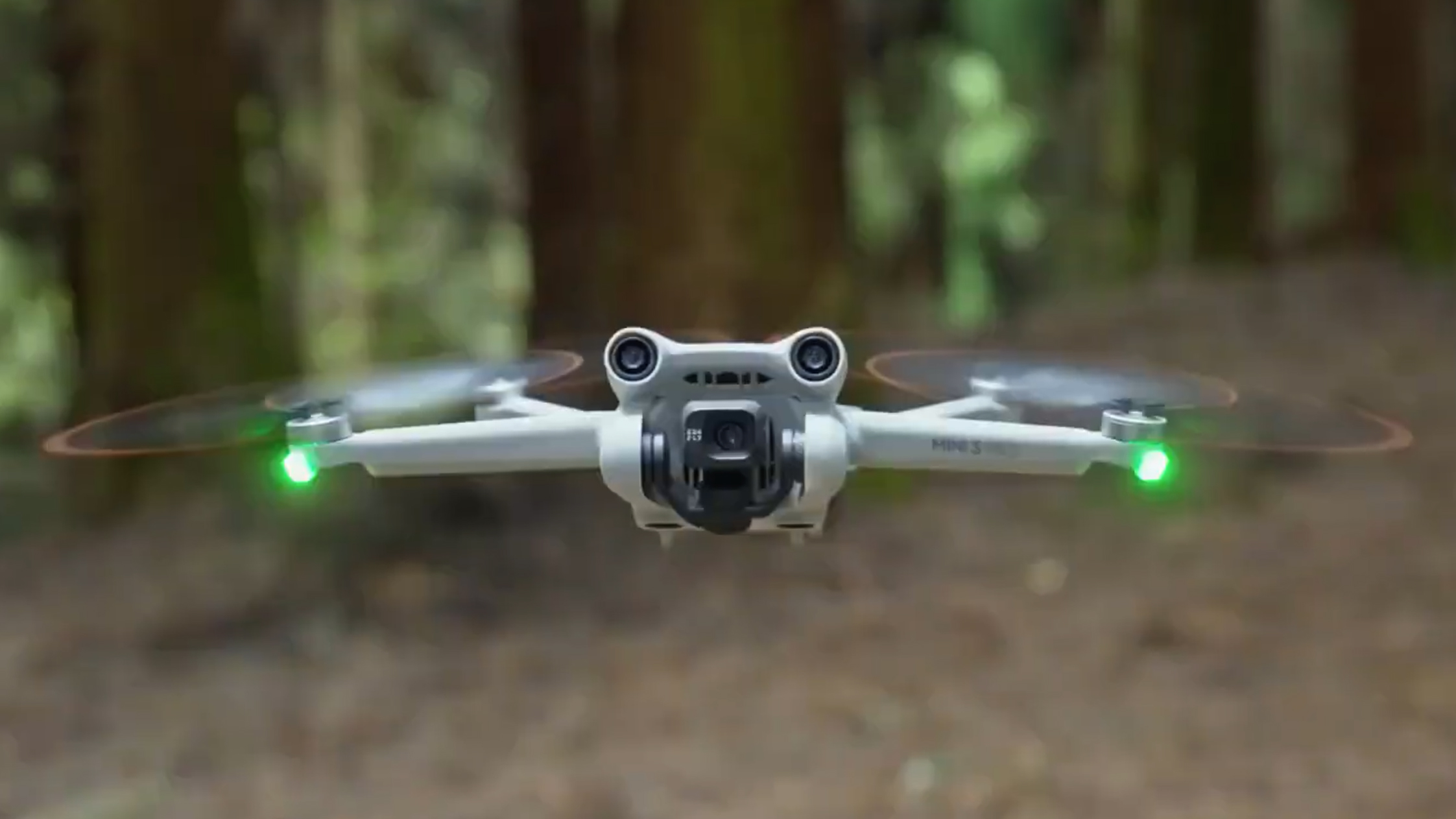
Sign up for breaking news, reviews, opinion, top tech deals, and more.

Tim is the Cameras editor at TechRadar. He has enjoyed more than 15 years in the photo video industry with most of those in the world of tech journalism. During his time as Deputy Technical Editor with Amateur Photographer, as a freelancer and consequently editor at Tech Radar, Tim has developed a deeply technical knowledge and practical experience with cameras, educating others through news, reviews and features. He’s also worked in video production for Studio 44 with clients including Canon, and volunteers his spare time to consult a non-profit, diverse stories team based in Nairobi. Tim is curious, a keen creative, avid footballer and runner, and moderate flat white drinker who has lived in Kenya and believes we have much to enjoy and learn from each other.
- Mark WilsonSenior news editor
- Chris Rowlands